2021 - A Lions Tour like no other
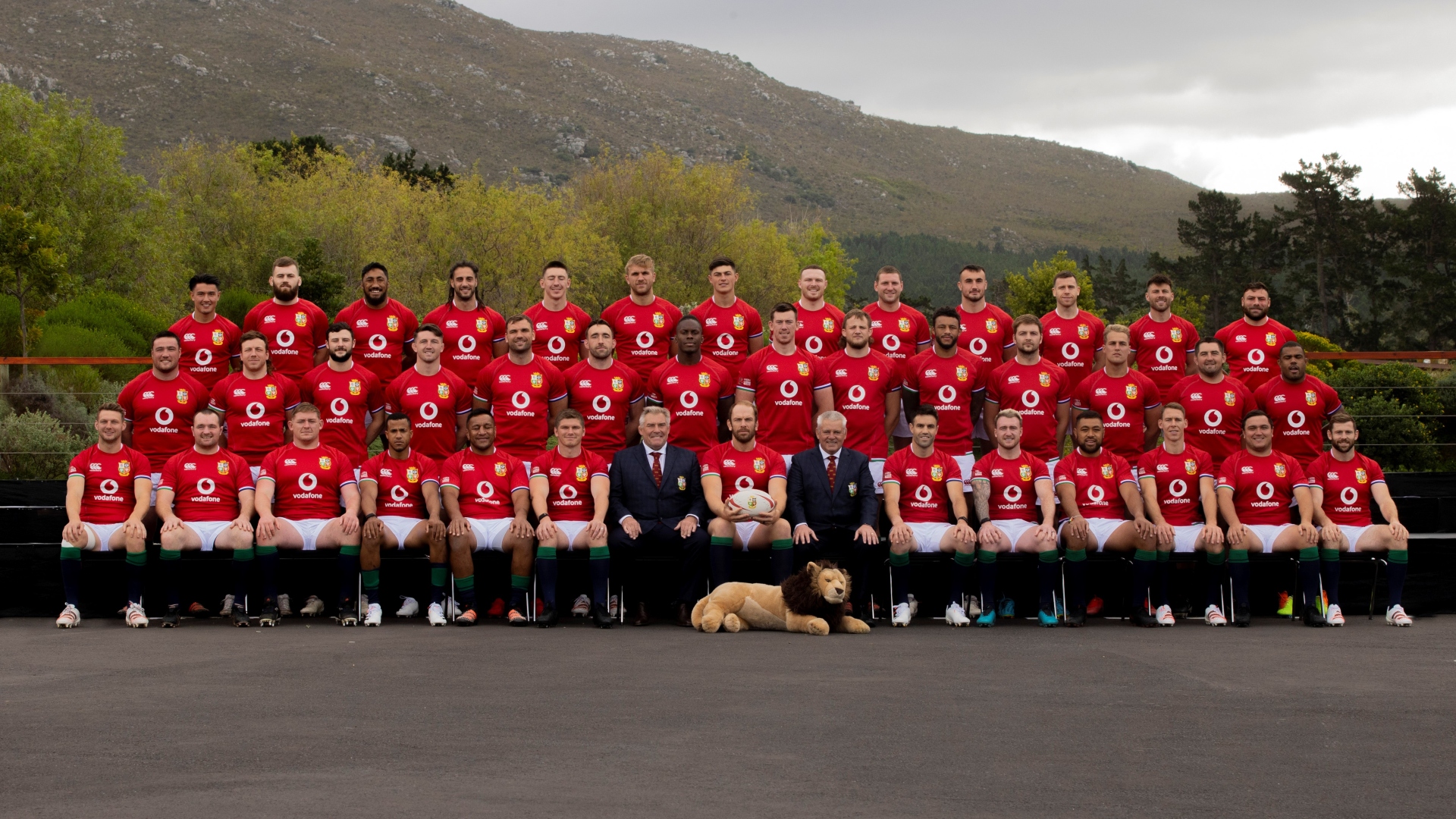 Warren Gatland’s men were denied the support of the Sea of Red with travelling fans grounded by travel restrictions imposed due to Covid-19.
But those players selected from England, Ireland, Scotland and Wales did themselves proud in a mightily close Test match series which just tipped in favour of the Springboks.
Gatland’s side was skippered by the talismanic Alun Wyn Jones, who flew out to South Africa just three weeks after dislocating his shoulder against Japan at Murrayfield.
Warren Gatland’s men were denied the support of the Sea of Red with travelling fans grounded by travel restrictions imposed due to Covid-19.
But those players selected from England, Ireland, Scotland and Wales did themselves proud in a mightily close Test match series which just tipped in favour of the Springboks.
Gatland’s side was skippered by the talismanic Alun Wyn Jones, who flew out to South Africa just three weeks after dislocating his shoulder against Japan at Murrayfield.
Jersey training camp and Japan meeting
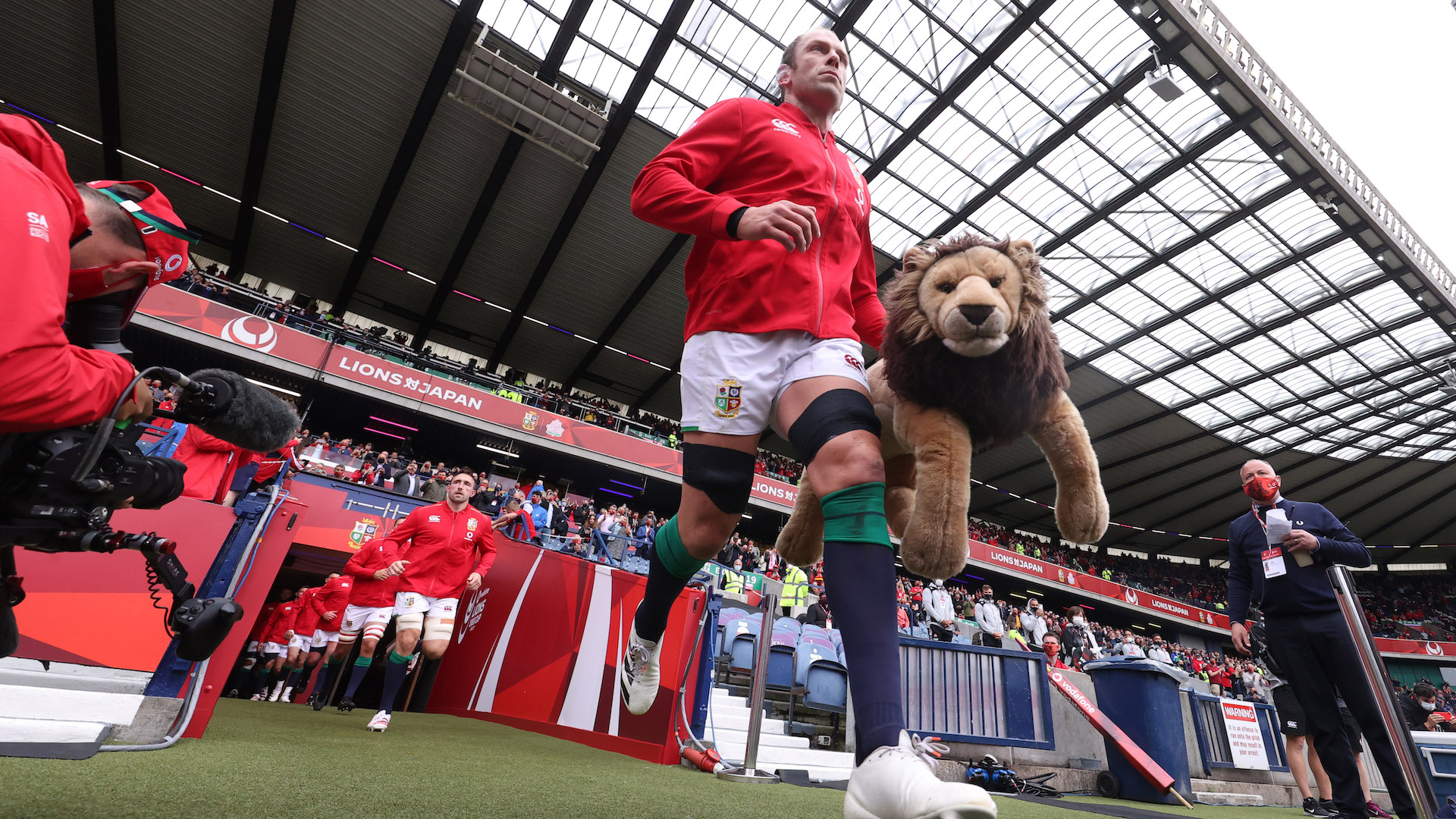 Gatland called upon 1997 tourist Gregor Townsend as attack coach alongside his fellow Scotland coach Steve Tandy to take charge of the defence.
Welshman Robin McBryde, who toured Australia as a player in 2001, joined the coaching staff for the first time as assistant coach with the remit for the forwards having previously been an integral member of Gatland’s Wales set-up during a 13-year career in Cardiff.
Kicking consultant Neil Jenkins also reprised his role as assistant coach for the fourth successive Tour having previously been to South Africa in 2009, Australia in 2013 and New Zealand in 2017.
The squad’s initial meeting began with a successful training camp in Jersey where players were able to escape the clutches of the hotel and explore what the Channel Island has to offer.
A first competitive run-out for the Lions, excluding those involved in the Premiership final on the same day, came at BT Murrayfield against Japan.
It was a first ever match in Scotland for the tourists, who successfully negotiated a spirited Brave Blossoms outfit to come out 28-10 winners.
Three of the four Lions tries were scored by debutants, including a lovely effort from versatile Irish forward Tadhg Beirne who sprinted under the sticks after being found with a deft pass from fly-half Dan Biggar.
The result meant it is now 13 Tours since the Lions last lost their opener but the encounter with the Japanese was not plain sailing because as well as the shoulder injury suffered by Jones, Welsh team-mate Justin Tipuric suffered his own shoulder problem that would rule him out of the Tour.
Two more Welshmen in Josh Navidi and Adam Beard were added to the touring party that immediately flew out to South Africa, with Tipuric and Jones, initially, staying in the UK.
Gatland called upon 1997 tourist Gregor Townsend as attack coach alongside his fellow Scotland coach Steve Tandy to take charge of the defence.
Welshman Robin McBryde, who toured Australia as a player in 2001, joined the coaching staff for the first time as assistant coach with the remit for the forwards having previously been an integral member of Gatland’s Wales set-up during a 13-year career in Cardiff.
Kicking consultant Neil Jenkins also reprised his role as assistant coach for the fourth successive Tour having previously been to South Africa in 2009, Australia in 2013 and New Zealand in 2017.
The squad’s initial meeting began with a successful training camp in Jersey where players were able to escape the clutches of the hotel and explore what the Channel Island has to offer.
A first competitive run-out for the Lions, excluding those involved in the Premiership final on the same day, came at BT Murrayfield against Japan.
It was a first ever match in Scotland for the tourists, who successfully negotiated a spirited Brave Blossoms outfit to come out 28-10 winners.
Three of the four Lions tries were scored by debutants, including a lovely effort from versatile Irish forward Tadhg Beirne who sprinted under the sticks after being found with a deft pass from fly-half Dan Biggar.
The result meant it is now 13 Tours since the Lions last lost their opener but the encounter with the Japanese was not plain sailing because as well as the shoulder injury suffered by Jones, Welsh team-mate Justin Tipuric suffered his own shoulder problem that would rule him out of the Tour.
Two more Welshmen in Josh Navidi and Adam Beard were added to the touring party that immediately flew out to South Africa, with Tipuric and Jones, initially, staying in the UK.
Flying start for Lions in South Africa
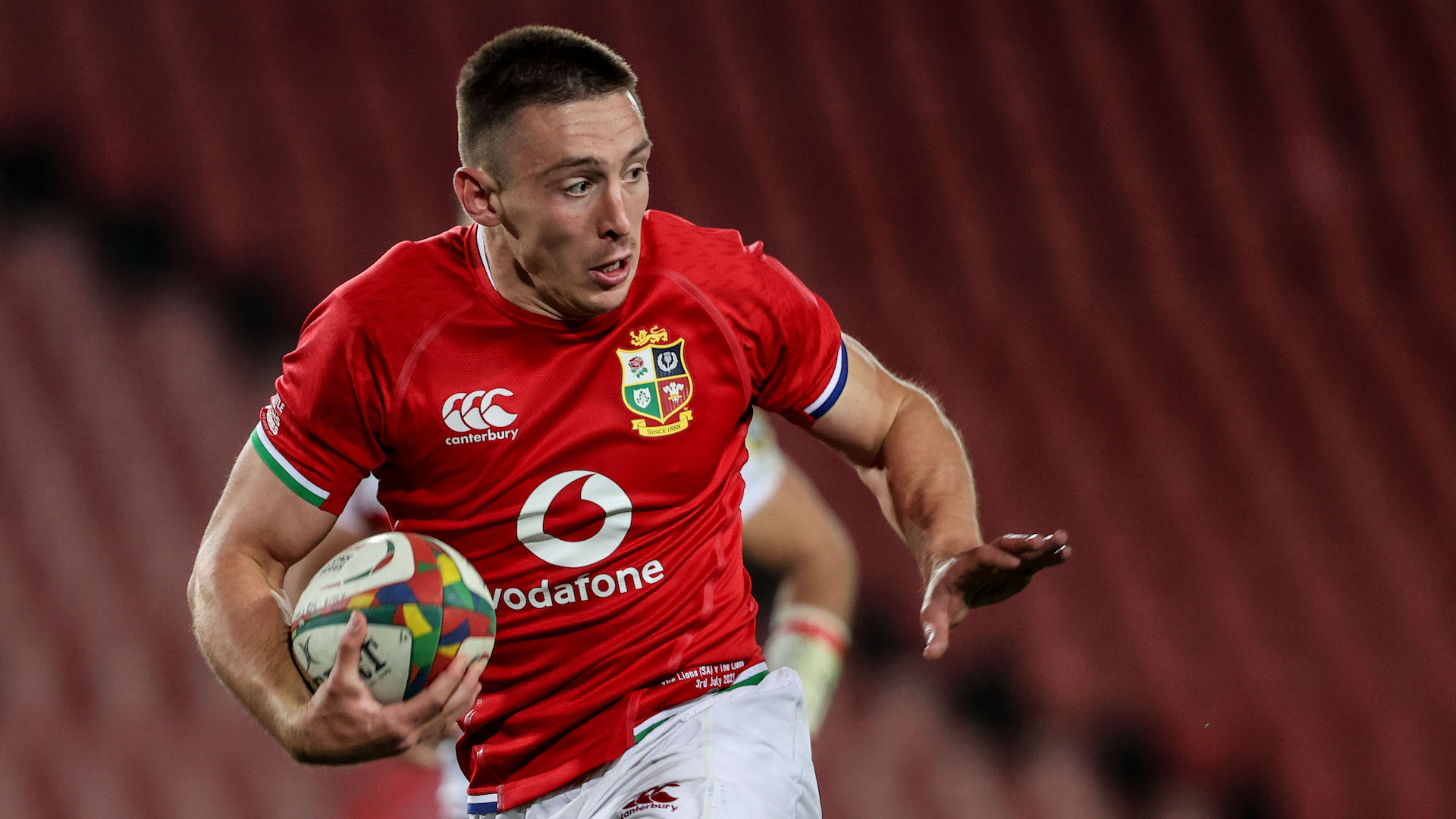 Winger Josh Adams got his Tour off to a flyer with four tries in the opening match in Johannesburg as Gatland’s men trumped their namesakes Sigma Lions 56-14.
The youngest man on tour Louis Rees-Zammit, in charge of BIL the Lion, also crossed along with scrum-half Gareth Davies and Scottish duo Hamish Watson and Ali Price.
It was the first time two Scots had scored a try in the same game for the Lions since 1989.
And although he did not touch down, captain on the day Stuart Hogg shone with a vitally important try-saving tackle on Sibusiso Sangweni, who he chased down five metres short of the line.
The Lions were again comfortable winners against their next opponents, Cell C Sharks at the same Emirates Airline Park venue in midweek.
Winger Josh Adams got his Tour off to a flyer with four tries in the opening match in Johannesburg as Gatland’s men trumped their namesakes Sigma Lions 56-14.
The youngest man on tour Louis Rees-Zammit, in charge of BIL the Lion, also crossed along with scrum-half Gareth Davies and Scottish duo Hamish Watson and Ali Price.
It was the first time two Scots had scored a try in the same game for the Lions since 1989.
And although he did not touch down, captain on the day Stuart Hogg shone with a vitally important try-saving tackle on Sibusiso Sangweni, who he chased down five metres short of the line.
The Lions were again comfortable winners against their next opponents, Cell C Sharks at the same Emirates Airline Park venue in midweek.
Lions overcome Covid disruption
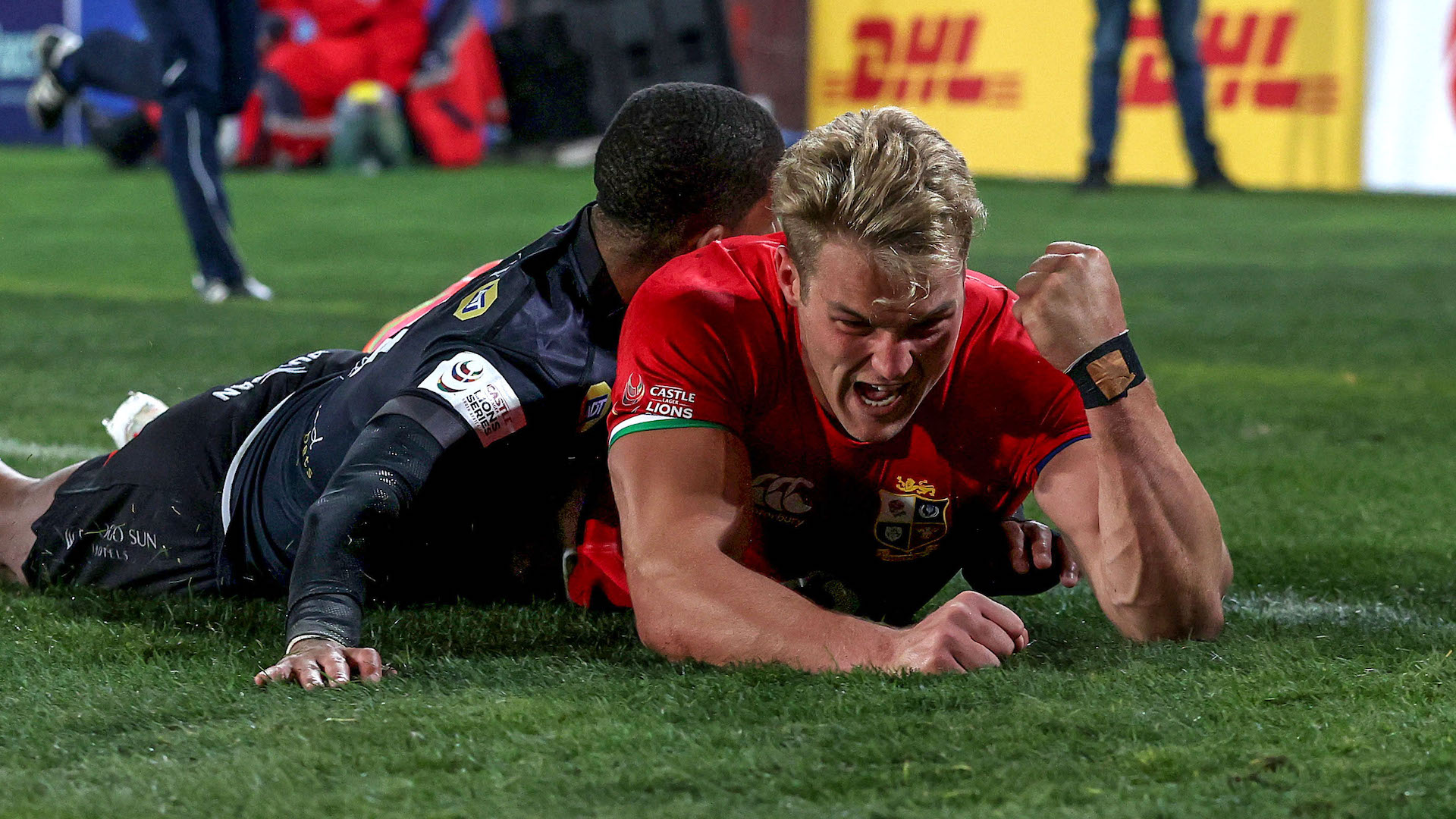 Team selection was disrupted with eight last minute changes to the 23 just a couple of hours before kick-off after nine players were placed into isolation.
Adams added a hat-trick to his soaring try tally and Duhan van der Merwe also crossed for three tries.
The same two sides were reacquainted after a Covid outbreak at the Bulls and Jamie George was given the honour of captaining the side from hooker.
Aided by a red card to Jaden Hendrikse, the Lions chalked up a 71-31 victory with Beirne scoring two, George himself crossing for a double and Anthony Watson showing his eye for the line with a further two tries.
Next came easily the biggest challenge so far for the tourists, as South Africa, also struggling for match practice given the limits imposed by impact of Covid-19 on their series with Georgia, named an incredibly strong South Africa ‘A’ side in Cape Town.
A total of 11 2019 Rugby World Cup winners lined up against the Lions, who were without the prolific Adams after he missed the game to witness the birth of his first child over Zoom.
And the South Africa ‘A’ squad inflicted the first defeat of the Tour on the Lions, winning 17-13 with one special moment from Cheslin Kolbe who left two defenders for dead after picking up a loose ball before passing for Lukhanyo Am to score.
The Lions rallied in the second half with a converted Wyn Jones score but came out second best in midweek, giving the squad a reminder of the size of the task at hand.
Team selection was disrupted with eight last minute changes to the 23 just a couple of hours before kick-off after nine players were placed into isolation.
Adams added a hat-trick to his soaring try tally and Duhan van der Merwe also crossed for three tries.
The same two sides were reacquainted after a Covid outbreak at the Bulls and Jamie George was given the honour of captaining the side from hooker.
Aided by a red card to Jaden Hendrikse, the Lions chalked up a 71-31 victory with Beirne scoring two, George himself crossing for a double and Anthony Watson showing his eye for the line with a further two tries.
Next came easily the biggest challenge so far for the tourists, as South Africa, also struggling for match practice given the limits imposed by impact of Covid-19 on their series with Georgia, named an incredibly strong South Africa ‘A’ side in Cape Town.
A total of 11 2019 Rugby World Cup winners lined up against the Lions, who were without the prolific Adams after he missed the game to witness the birth of his first child over Zoom.
And the South Africa ‘A’ squad inflicted the first defeat of the Tour on the Lions, winning 17-13 with one special moment from Cheslin Kolbe who left two defenders for dead after picking up a loose ball before passing for Lukhanyo Am to score.
The Lions rallied in the second half with a converted Wyn Jones score but came out second best in midweek, giving the squad a reminder of the size of the task at hand.
Super Smith makes Lions debut
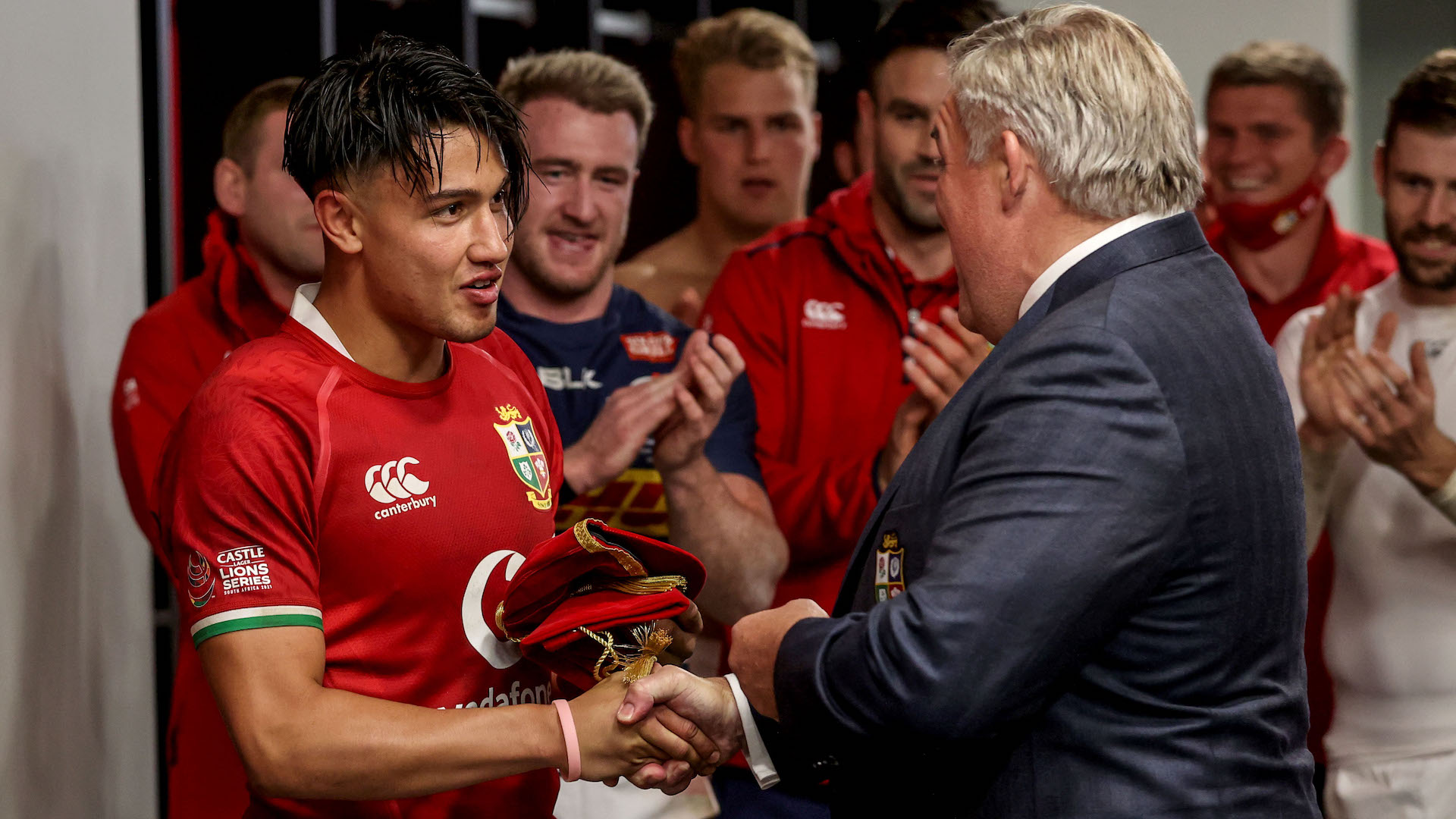 With Finn Russell struggling with injury, Harlequins and England fly-half Marcus Smith was added to the touring party and started the final warm-up fixture against the DHL Stormers.
He helped steer the side around the park to a 49-3 win in a game in which the Lions had seven unique try scorers, including Exeter Chiefs trio Luke Cowan-Dickie, Jonny Hill and Sam Simmonds.
It also marked the heroic return to action of Alun Wyn Jones as he made his comeback for the last 20 minutes off the bench, having returned to the touring party late after proving his fitness in sessions with Wales.
The injury was thought to have ended Jones’ Tour before it had even begun, and Conor Murray was named as replacement skipper with Beard called up but both locks went on to feature in the Test series.
With Finn Russell struggling with injury, Harlequins and England fly-half Marcus Smith was added to the touring party and started the final warm-up fixture against the DHL Stormers.
He helped steer the side around the park to a 49-3 win in a game in which the Lions had seven unique try scorers, including Exeter Chiefs trio Luke Cowan-Dickie, Jonny Hill and Sam Simmonds.
It also marked the heroic return to action of Alun Wyn Jones as he made his comeback for the last 20 minutes off the bench, having returned to the touring party late after proving his fitness in sessions with Wales.
The injury was thought to have ended Jones’ Tour before it had even begun, and Conor Murray was named as replacement skipper with Beard called up but both locks went on to feature in the Test series.
Lions stun Springboks in Test series opener
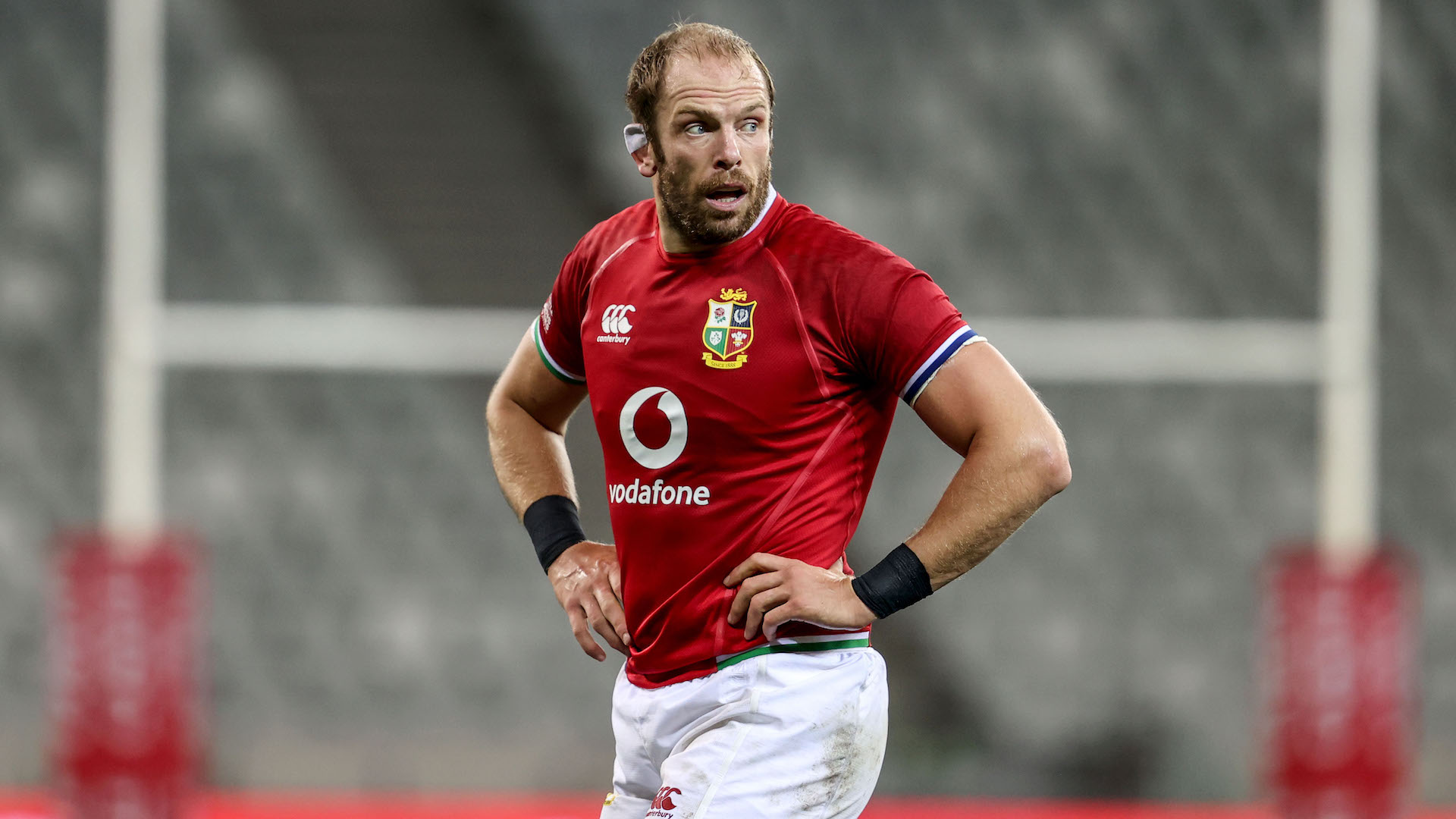 Jones was named as captain in the starting XV for the first Test which featured several previously unseen, untried but exciting combinations including the centre partnership of Robbie Henshaw and Elliot Day.
Jones, the most-capped rugby union international of all time, crowned a remarkable turnaround in his fortunes by helping steer his side to a 22-17 victory in Cape Town.
The Lions had mounted an impressive-second half comeback after trailing 12-3 following a try-less first half.
But, sparked by Test debutant Cowan-Dickie’s maul try and aided by the inspirational Player of the Match Maro Itoje, the men in red got back on track by drawing first blood against an ill-disciplined South Africa, who gave away eight penalties after the break.
A week later it was the turn of the ‘Bomb Squad’, the Springboks’ immensely physical bench, to put on a second-half masterclass, running out 27-9 winners.
Fly-half Handre Pollard contributed 17 points from the boot to square the series and deny the Lions the chance to emulate their 1997 predecessors at the very first opportunity.
The Lions were forced to use a ‘get out of jail free card’ and pushed into a decider, with opposition skipper Siya Kolisi denying Henshaw a try from Murray’s chip and chase in what proved to be a pivotal moment on the stroke of half-time.
The first-half lasted 63 minutes with a lack of continuity hurting the Lions and preventing the side from tiring out the powerful Springboks team.
Jones was named as captain in the starting XV for the first Test which featured several previously unseen, untried but exciting combinations including the centre partnership of Robbie Henshaw and Elliot Day.
Jones, the most-capped rugby union international of all time, crowned a remarkable turnaround in his fortunes by helping steer his side to a 22-17 victory in Cape Town.
The Lions had mounted an impressive-second half comeback after trailing 12-3 following a try-less first half.
But, sparked by Test debutant Cowan-Dickie’s maul try and aided by the inspirational Player of the Match Maro Itoje, the men in red got back on track by drawing first blood against an ill-disciplined South Africa, who gave away eight penalties after the break.
A week later it was the turn of the ‘Bomb Squad’, the Springboks’ immensely physical bench, to put on a second-half masterclass, running out 27-9 winners.
Fly-half Handre Pollard contributed 17 points from the boot to square the series and deny the Lions the chance to emulate their 1997 predecessors at the very first opportunity.
The Lions were forced to use a ‘get out of jail free card’ and pushed into a decider, with opposition skipper Siya Kolisi denying Henshaw a try from Murray’s chip and chase in what proved to be a pivotal moment on the stroke of half-time.
The first-half lasted 63 minutes with a lack of continuity hurting the Lions and preventing the side from tiring out the powerful Springboks team.
Steyn returns to break Lions' hearts in decider
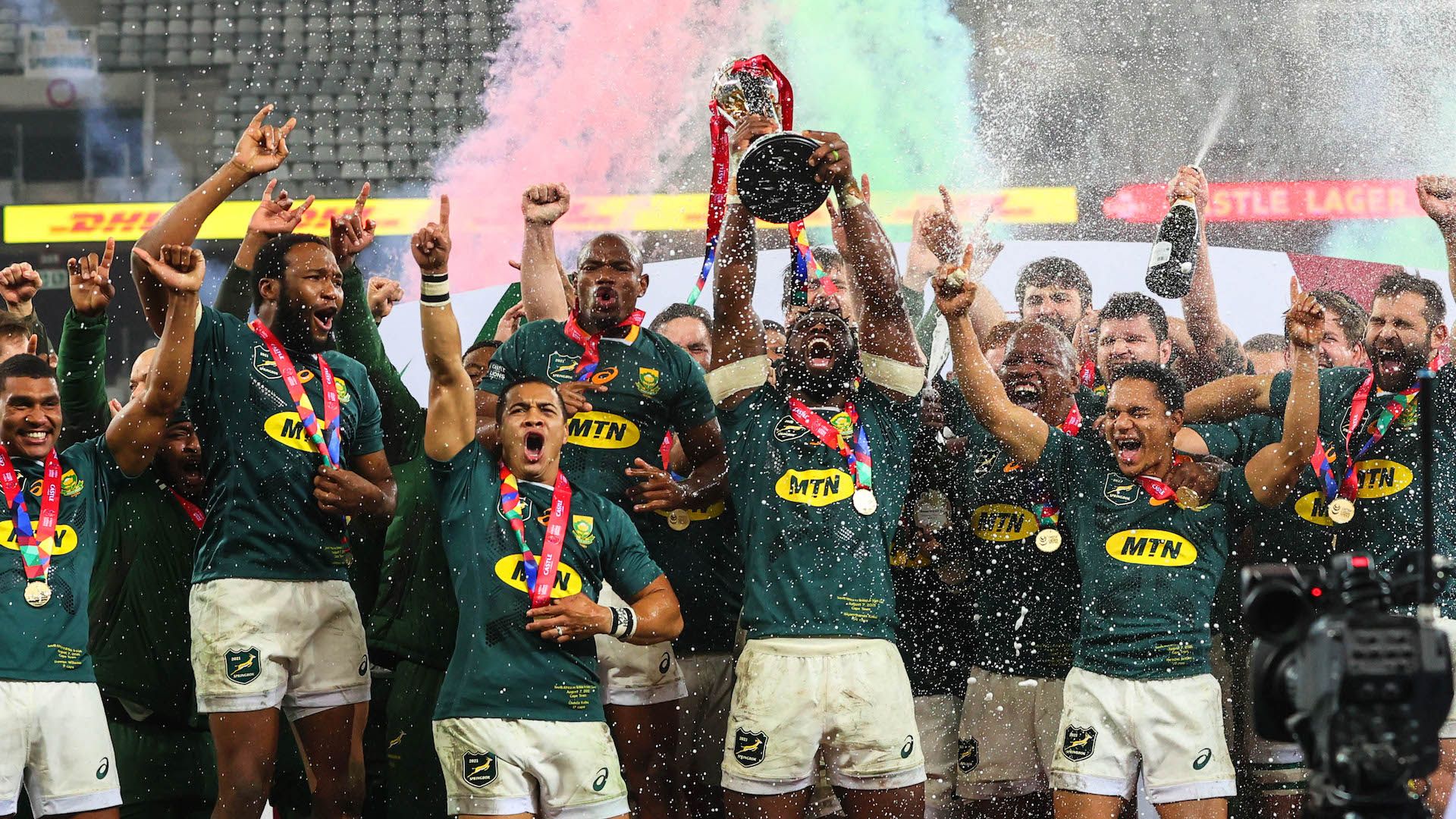 The world champions completed a 2-1 series win in the deciding Test with 37-year-old fly-half Morne Steyn stepping off the bench to kick the winning penalty in a 19-16 victory, just as he had done in the second Test in 2009.
Kolbe once again showed his class by taking his sole opportunity and jinking down the wing, evading the recalled full-back Liam Williams and fending off Cowan-Dickie to dot down.
Despite the heartbreaking late defeat, Scottish star Russell’s free-flowing performance off the bench, on for the injured Dan Biggar early in the first-half, lit up the game and put the Lions on the front foot for large periods.
The ambitious side regularly pointed to the corner but were unable to get over for scores that would have helped establish an unassailable lead, Ken Owens’ effort the only try the tourists managed.
As the trip concluded, Gatland - who missed out on successfully leading an unbeaten Tour to all three Southern Hemisphere nations - said: “There are players who haven’t been involved (in the Test series) but their experience from this will hold them in really good stead for their international teams and in four years’ time.
“A really good example is Robbie Henshaw, who I thought was excellent. He probably learnt from the experience four years’ ago and then brought him on, improved him as a player.
“I’m incredibly proud of my involvement and have been very fortunate. I’m very passionate about the Lions. I hope the new players have learnt a lot from this Tour, not just from playing.
“But also from the players around them in terms of the top players in the squad, their professionalism and the way that they train and all the extras that they do.
“I think they would have benefitted from that. I think Marcus Smith is going to be a superstar in the game, I think he is incredibly talented – he has an incredible amount of talent.”
The world champions completed a 2-1 series win in the deciding Test with 37-year-old fly-half Morne Steyn stepping off the bench to kick the winning penalty in a 19-16 victory, just as he had done in the second Test in 2009.
Kolbe once again showed his class by taking his sole opportunity and jinking down the wing, evading the recalled full-back Liam Williams and fending off Cowan-Dickie to dot down.
Despite the heartbreaking late defeat, Scottish star Russell’s free-flowing performance off the bench, on for the injured Dan Biggar early in the first-half, lit up the game and put the Lions on the front foot for large periods.
The ambitious side regularly pointed to the corner but were unable to get over for scores that would have helped establish an unassailable lead, Ken Owens’ effort the only try the tourists managed.
As the trip concluded, Gatland - who missed out on successfully leading an unbeaten Tour to all three Southern Hemisphere nations - said: “There are players who haven’t been involved (in the Test series) but their experience from this will hold them in really good stead for their international teams and in four years’ time.
“A really good example is Robbie Henshaw, who I thought was excellent. He probably learnt from the experience four years’ ago and then brought him on, improved him as a player.
“I’m incredibly proud of my involvement and have been very fortunate. I’m very passionate about the Lions. I hope the new players have learnt a lot from this Tour, not just from playing.
“But also from the players around them in terms of the top players in the squad, their professionalism and the way that they train and all the extras that they do.
“I think they would have benefitted from that. I think Marcus Smith is going to be a superstar in the game, I think he is incredibly talented – he has an incredible amount of talent.” 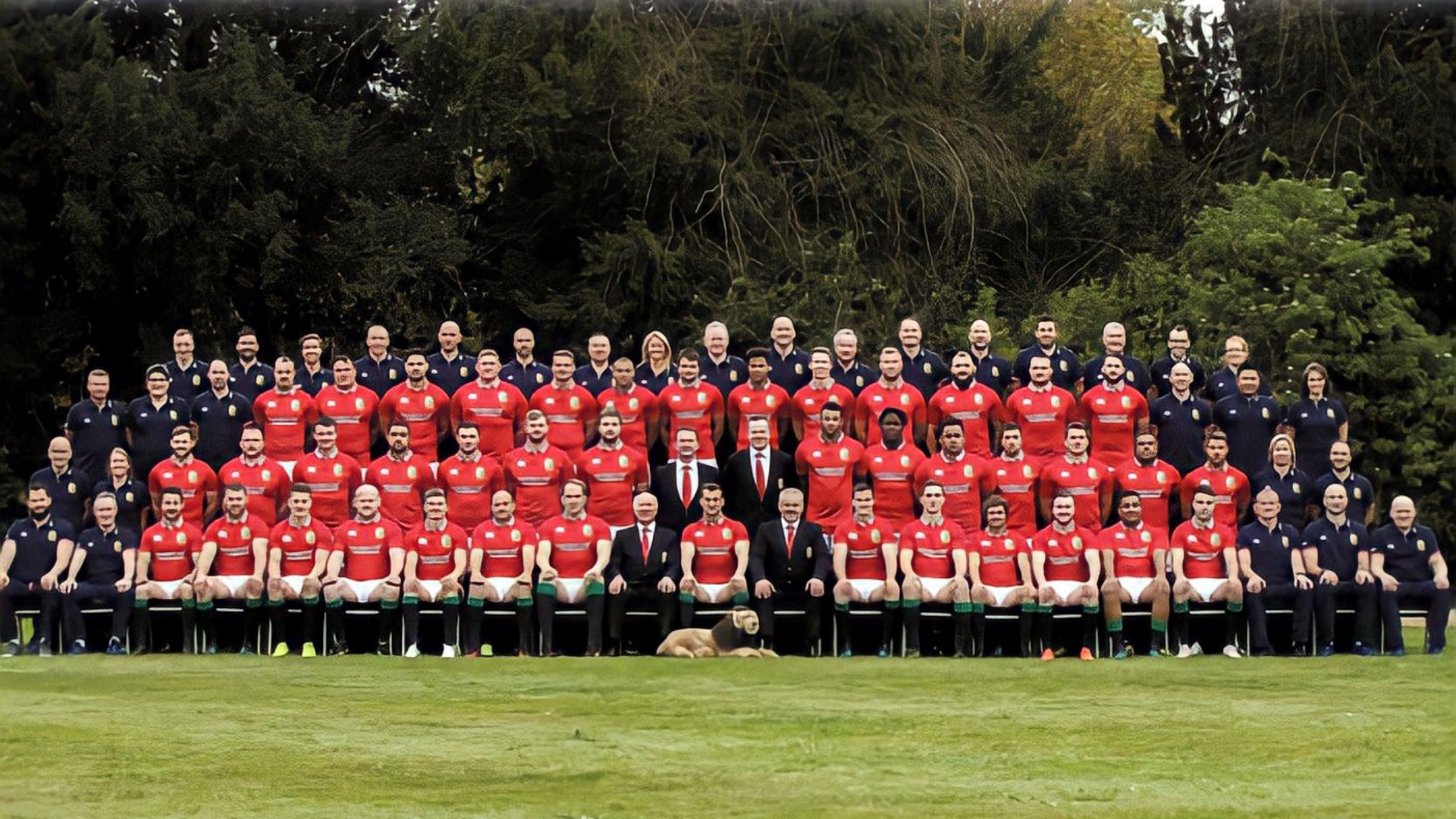 Warren Gatland’s side proved every bit a match for the All Blacks, the two-time defending world champions, in a compelling three-match Test series that lived up to its billing and then some.
After defeat in the first Test at Eden Park, the Lions bounced back in Wellington – as they had done in 1993. They then returned to Auckland and drew the third and final Test.
That meant the Test series was squared for only the second time in Lions’ history, joining the fabled 1955 Tour to South Africa.
Alongside that dramatic Test series, a thrilling set of non-Test matches and a richly rewarding series of cultural events added up to a once-in-a-lifetime experience for the Lions players, the support staff and the thousands who travelled to lend their support.
But to chart how the Lions matched the All Blacks, first we must go back to December 2016 when Gatland was asked to take on the position of Head Coach once again.
Warren Gatland’s side proved every bit a match for the All Blacks, the two-time defending world champions, in a compelling three-match Test series that lived up to its billing and then some.
After defeat in the first Test at Eden Park, the Lions bounced back in Wellington – as they had done in 1993. They then returned to Auckland and drew the third and final Test.
That meant the Test series was squared for only the second time in Lions’ history, joining the fabled 1955 Tour to South Africa.
Alongside that dramatic Test series, a thrilling set of non-Test matches and a richly rewarding series of cultural events added up to a once-in-a-lifetime experience for the Lions players, the support staff and the thousands who travelled to lend their support.
But to chart how the Lions matched the All Blacks, first we must go back to December 2016 when Gatland was asked to take on the position of Head Coach once again.
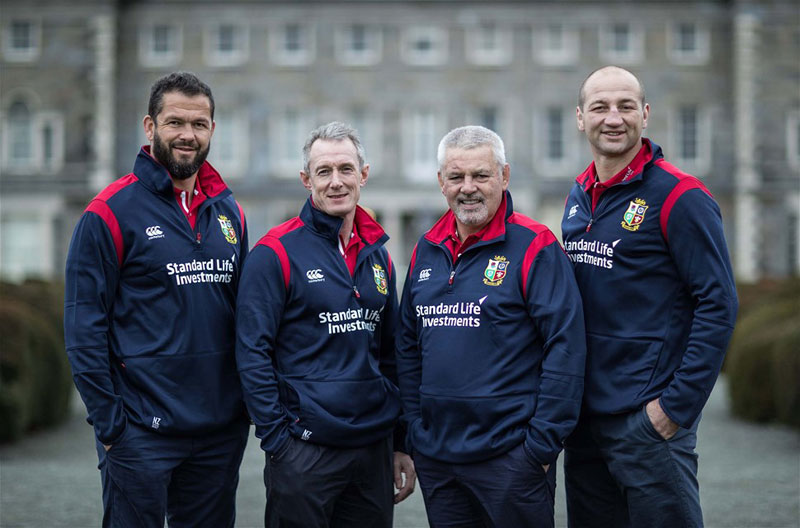 Having led the Lions to an historic series win in Australia in 2013 – the Lions’ first in 16 years – a return to his native New Zealand was an altogether different challenge.
Gatland embraced it, re-calling many of the same coaching group that did the job in 2013 but adding fresh voices to the mix as well.
Andy Farrell’s defence would only concede 16 tries across ten games, Rob Howley’s backs conjured some of the greatest tries the Lions have ever scored, while Steve Borthwick’s forward pack earned the respect of observers and opponents alike.
Upon arriving in New Zealand, the tone was set with a traditional Maori welcome and pōwhiri challenge at Auckland International Airport.
Demonstrating the unison already established amongst Gatland’s men, Welsh hooker and choirmaster Ken Owens leading led the squad’s response with their rendition of Calon Lan.
And the Lions were quick to establish even greater links with their hosts as they undertook a series of community visits in North Auckland following their first captain’s run.
The squad took time out of their busy schedule to visit seven schools, three hospitals and two retirement homes on their way to Whangarei ahead of the Tour’s opener.
In addition to receiving gifts and an exceptionally warm reception, the Lions answered questions from schoolchildren and met residents at a pair of retirement villages.
The Tour proper began against the New Zealand Provincial Barbarians at Toll Stadium. As had been the case in many a previous Tour, the Lions were pushed all the way first time out by a committed opposition team but eventually emerged 13-7 victors.
From there the squad headed to Waitangi Treaty Grounds for their official welcome at the birthplace of New Zealand as a nation.
It was a spine-tingling day as, in glorious sunshine, more than 400 warriors, mainly Ngāpuhi, both male and female, received the Lions with a spectacular Pōwhiri.
During the welcome, the tourists received three challenges. The first, in front of ceremonial war canoe Ngātokimatawhaorua, was a private challenge for the Lions squad with the wero - or ceremonial spear - accepted by Tour Manager John Spencer.
“It was an absolutely fantastic ceremony and a wonderful welcome by the Maori people here,” said Spencer.
“It couldn’t have been a better day for it, and we have great respect for their traditions, for their culture, their language, their heritage – which started here of course, their haka and of course their harmonies.
“It has been an absolute privilege. This is not a ceremony that has been extended to very many people.
“We were determined to come here and show our respect and our friendship – two of the Lions core values.”
Having led the Lions to an historic series win in Australia in 2013 – the Lions’ first in 16 years – a return to his native New Zealand was an altogether different challenge.
Gatland embraced it, re-calling many of the same coaching group that did the job in 2013 but adding fresh voices to the mix as well.
Andy Farrell’s defence would only concede 16 tries across ten games, Rob Howley’s backs conjured some of the greatest tries the Lions have ever scored, while Steve Borthwick’s forward pack earned the respect of observers and opponents alike.
Upon arriving in New Zealand, the tone was set with a traditional Maori welcome and pōwhiri challenge at Auckland International Airport.
Demonstrating the unison already established amongst Gatland’s men, Welsh hooker and choirmaster Ken Owens leading led the squad’s response with their rendition of Calon Lan.
And the Lions were quick to establish even greater links with their hosts as they undertook a series of community visits in North Auckland following their first captain’s run.
The squad took time out of their busy schedule to visit seven schools, three hospitals and two retirement homes on their way to Whangarei ahead of the Tour’s opener.
In addition to receiving gifts and an exceptionally warm reception, the Lions answered questions from schoolchildren and met residents at a pair of retirement villages.
The Tour proper began against the New Zealand Provincial Barbarians at Toll Stadium. As had been the case in many a previous Tour, the Lions were pushed all the way first time out by a committed opposition team but eventually emerged 13-7 victors.
From there the squad headed to Waitangi Treaty Grounds for their official welcome at the birthplace of New Zealand as a nation.
It was a spine-tingling day as, in glorious sunshine, more than 400 warriors, mainly Ngāpuhi, both male and female, received the Lions with a spectacular Pōwhiri.
During the welcome, the tourists received three challenges. The first, in front of ceremonial war canoe Ngātokimatawhaorua, was a private challenge for the Lions squad with the wero - or ceremonial spear - accepted by Tour Manager John Spencer.
“It was an absolutely fantastic ceremony and a wonderful welcome by the Maori people here,” said Spencer.
“It couldn’t have been a better day for it, and we have great respect for their traditions, for their culture, their language, their heritage – which started here of course, their haka and of course their harmonies.
“It has been an absolute privilege. This is not a ceremony that has been extended to very many people.
“We were determined to come here and show our respect and our friendship – two of the Lions core values.”
Following the first challenge, the Lions made their way to the crest of the hill on the Treaty Grounds and, with thousands of fans in attendance, faced down the second challenge. This time it was Tour Captain Sam Warburton who received the ceremonial wero. "We had quite a few Maori welcomes for the 2011 Rugby World Cup and Wales toured here last summer as well, but that was like nothing I have ever experienced before,” said the Wales flanker. “It was brilliant, and the day and the setting made it even more special. “Away from the field, that is probably one of the best experiences I have been able to have through rugby.” The third and final challenge was in front of Te Whare Rūnanga, before the 41-man playing squad and backroom staff were granted entry for ceremonial speeches and further traditional Hongi greetings. And the Lions choir, after hours of practice in training camp, delivered all four of their songs in fine style, with the Welsh hymn Calon Lan the real showstopper according to the skipper.Spine tingling.
An incredible welcome for us at the Waitangi Treaty Grounds. Thank you.#LionsNZ2017 pic.twitter.com/F1wA6hf6Qh — British&Irish Lions (@lionsofficial) June 3, 2017
“The choir delivered, we were good in there,” added Warburton. “We have put a lot of practice in behind closed doors and it has been good fun from a bonding point of view and we have had a laugh. “But the guys have also actually really bought into it and from the English, Irish and Scottish boys point of view, to learn Calon Lan is really impressive. “The Welsh guys were thinking ‘Crikey, this is going to be difficult’, so to learn it and buy into it has shown how the lads have come together off the field. “We must have had at least 10-15 choir practices and hopefully paid off in there.” Next up was a first trip to Eden Park to take on the Blues of Auckland. In another hard-fought encounter, star backs Rieko Ioane and Sonny Bill Williams powered the hosts to a famous win. CJ Stander’s first-half try and the boot of Leigh Halfpenny had looked like they might be enough to hold off the Blues but in the end a classic Williams offload released a flying Ihaia West for a superb try and the Blues became the first-ever Kiwi Super Rugby franchise to defeat the Lions. Next the Lions travelled to the South Island where the Crusaders of Christchurch lay in wait. On arriving in the city, Tour Captain Warburton, Head Coach Gatland and Tour Manager Spencer were among a group of Lions representatives who paid their respects on behalf of the entire squad to the victims of the Christchurch earthquake by visiting the Canterbury Earthquake National Memorial. The group laid a wreath at the site which was created to remember the 185 who sadly lost their lives during the 6.3 magnitude earthquake which devastated the region in 2010 and 2011. On the field, the Crusaders were expected to provide one of the bellwether challenges of the Tour. Unbeaten all year and top of the table in Super Rugby – they would go on to claim the title in July – the Lions needed to produce their best at the AMI Stadium. And they delivered it with one of the stand-out performances of the Tour, a statement of intent that gave the group much-needed momentum with the pack creating a platform for a 12-3 victory. An unfortunate Tour-ending facial injury to Stuart Hogg and the use of Farrell and Jonathan Sexton as twin playmakers in the second half – a foreshadowing of things to come – were the other points of note. Dunedin’s Forsyth Barr Stadium, also on the south island, was next up for the Lions to take on the Highlanders. A pulsating encounter under the closed roof eventually went the hosts’ way, a late penalty from Marty Banks proving decisive. The Lions could take heart from the attacking potential shown as Warburton, Jonathan Joseph and Tommy Seymour all crossed for tries. The following Saturday, a much-anticipated clash with the Maori All Blacks followed and once again, the pack was able to dominate proceedings and establish the platform for an eventual 32-10 success.The 2017 British & Irish Lions inside Te Whare Rūnanga following the three challenges at Waitangi Treaty Grounds. Honoured 👏 #LionsNZ2017 pic.twitter.com/cjGdKWJS5N
— British&Irish Lions (@lionsofficial) June 4, 2017
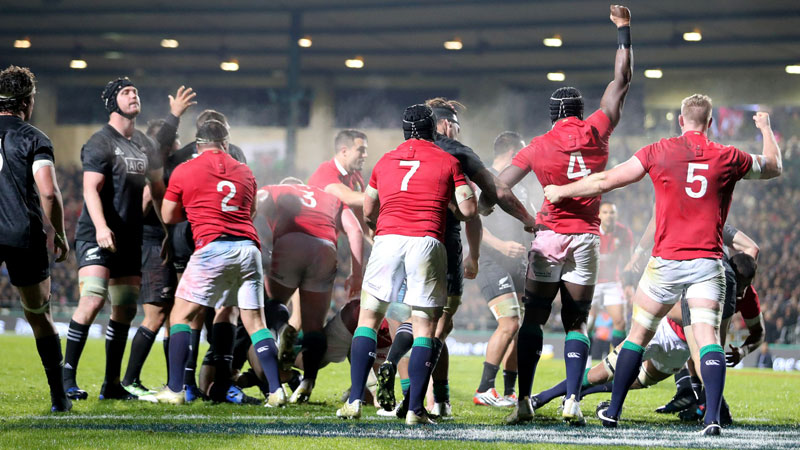 The return to Auckland for the first Test loomed but first, the Tour went to Hamilton to take on the Chiefs.
This time, the Lions backs took flight with Jack Nowell scoring two tries, the second of which was an instant classic, while Liam Williams and Elliot Daly put their hands up for Test selection with brilliant showings in the back three in a 34-6 win.
And so it was to Eden Park – where the All Blacks had not lost since 1994 – for the first Test of the series.
Peter O’Mahony was confirmed as the match-day captain while Daly, Williams and Anthony Watson were included in the back three in a surprise selection that would ultimately prove to be one of the defining tactical move of the series.
Williams conjured one of the Lions all-time great tries in the first half of a dramatic match– slaloming his way past three tacklers from his own 22 to release Jonathan Davies and Daly, who traded passes before Davies offloaded from the floor for Sean O’Brien to complete one of the great scores; an electrifying end to end move that stunned the home crowd and sent the Lions fan in attendance into delirium.
But that was as good as it got for the visitors – Rhys Webb’s late consolation notwithstanding – as the All Blacks capitalised on their chances to claim a 30-15 victory, with Rieko Ioane benefiting out wide and crossing for two breakaway scores.
The following day, a group from the Tour party paid their respects at Pukeahu National War Memorial. The Lions representatives signed the visitors book before being given a short tour of the Hall of Memories. Tour Captain Warburton laid a wreath while Lions Chairman Tom Grace, himself a tourist in 1974, read Binyon’s Ode To The Fallen.
The Tour continued apace. With New Zealand one ahead, many analysts were predicting a clean sweep, but the series momentum would shift dramatically over the course of a remarkable seven days that will live long in the memory of all who witnessed it.
First, the mid-week side played out a supercharged 31-31 draw with the Hurricanes. The defending Super Rugby champions’ backline was packed full of All Blacks with Jordie Barrett, Julian Savea and Ngani Laumape among those who would start the third and final Test.
But the Lions were clinical and tries from George North – whose Tour was ended by injury shortly after – and Tommy Seymour (2) looked liked they would be enough before the Canes’ late fightback earned a share of the spoils.
The return to Auckland for the first Test loomed but first, the Tour went to Hamilton to take on the Chiefs.
This time, the Lions backs took flight with Jack Nowell scoring two tries, the second of which was an instant classic, while Liam Williams and Elliot Daly put their hands up for Test selection with brilliant showings in the back three in a 34-6 win.
And so it was to Eden Park – where the All Blacks had not lost since 1994 – for the first Test of the series.
Peter O’Mahony was confirmed as the match-day captain while Daly, Williams and Anthony Watson were included in the back three in a surprise selection that would ultimately prove to be one of the defining tactical move of the series.
Williams conjured one of the Lions all-time great tries in the first half of a dramatic match– slaloming his way past three tacklers from his own 22 to release Jonathan Davies and Daly, who traded passes before Davies offloaded from the floor for Sean O’Brien to complete one of the great scores; an electrifying end to end move that stunned the home crowd and sent the Lions fan in attendance into delirium.
But that was as good as it got for the visitors – Rhys Webb’s late consolation notwithstanding – as the All Blacks capitalised on their chances to claim a 30-15 victory, with Rieko Ioane benefiting out wide and crossing for two breakaway scores.
The following day, a group from the Tour party paid their respects at Pukeahu National War Memorial. The Lions representatives signed the visitors book before being given a short tour of the Hall of Memories. Tour Captain Warburton laid a wreath while Lions Chairman Tom Grace, himself a tourist in 1974, read Binyon’s Ode To The Fallen.
The Tour continued apace. With New Zealand one ahead, many analysts were predicting a clean sweep, but the series momentum would shift dramatically over the course of a remarkable seven days that will live long in the memory of all who witnessed it.
First, the mid-week side played out a supercharged 31-31 draw with the Hurricanes. The defending Super Rugby champions’ backline was packed full of All Blacks with Jordie Barrett, Julian Savea and Ngani Laumape among those who would start the third and final Test.
But the Lions were clinical and tries from George North – whose Tour was ended by injury shortly after – and Tommy Seymour (2) looked liked they would be enough before the Canes’ late fightback earned a share of the spoils.
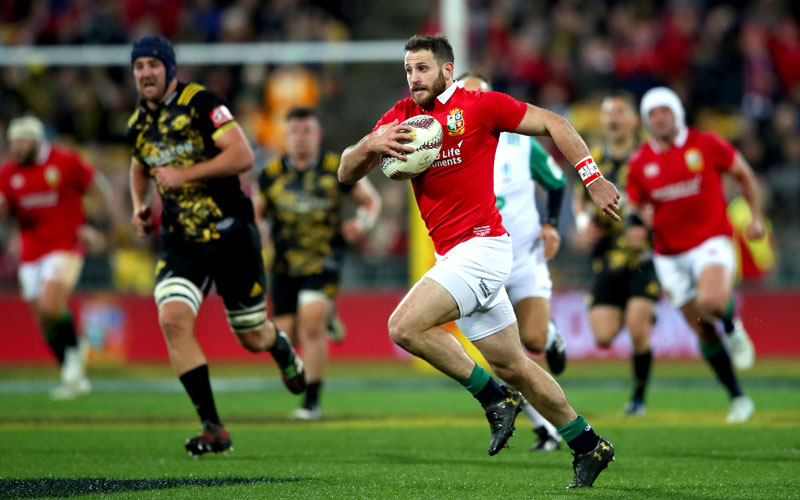 Gatland opted to bring in Tour captain Warburton in to lead the Test side for the key second Test while Farrell was shifted from 10 to 12 and partnered with Sexton at fly-half. Up front, the powerful Maro Itoje was also handed a starting berth.
After a high-octane start from both sides, Sonny Bill Willliams was red-carded by referee Jérôme Garcès approaching the half-hour mark for a no-arms tackle on Anthony Watson.
With conditions extremely difficult – high winds and lashing rain – the numerical advantage was not as influential as it might have been in dryer weather and Beauden Barrett kicked the All Blacks into an 18-9 lead.
With the hour mark approaching it looked like the game was up but Gatland’s men rolled up their sleeves and got to work, crafting two superb tries in the wet and slippery conditions.
First, Sexton and Farrell dovetailed superbly as Faletau barged over in the left corner. The Lions maintained the pressure and Murray skipped over from close range for a second soon after. Farrell converted the second and the scores were level at 21-21 with the clock now into the final ten minutes.
Not since 2003 had the All Blacks lost in the Westpac Stadium but the Lions had one last roar in them, Kyle Sinckler winning a penalty and Farrell holding his nerve once more to seal a dramatic comeback win.
The noise was deafening, and the Lions fans singing in the rain would have happily skipped all the way back to Auckland for the decider.
The series was alive.
The eyes of the rugby world turned to Eden Park for the decider and the city was at fever pitch for the final week of as Gatland named an unchanged 23.
Warburton would again lead out his troops while his compatriot and second row Alun Wyn Jones became the first man in the professional era to appear in nine Lions Tests in a row.
But the All Blacks – wounded by defeat in Wellington – got off to the better start. Tries from Laumape and Jordie Barrett – both on their first Test starts – opened up a 12-6 lead.
As the Lions fronted up in defence, slowly but surely the tables began to turn.
Farrell added to his two first-half penalties with a third while Daly smacked one over from inside his own half and as the game entered the final quarter, the scores were locked at 12-12.
Barrett then nudged the hosts back in front but after replacement Webb’s quick thinking earned a penalty on near enough halfway – Farrell was coolness personified as he did the rest and it was levelled up at 15-15 with three minutes to go.
A dramatic final minute saw referee Romain Poite opt for a scrum on the Lions’ 10-metre line having initially looked to award what might have been a match-winning penalty to the hosts.
Liam Williams then made an heroic tackle in the corner to shut off a final attack, and the final whistle was blown on a draw and a tied Test series.
A fitting finale to a topsy-turvy Tour and a slice of history for Gatland’s side, who became the first in 46 years and the second in history to return from New Zealand undefeated in the Test series.
The vocal travelling support, who had been growing in numbers throughout the Tour, played a major part in making the entire trip a huge success.
While the players became heroes on the pitch, Tour manager John Spencer paid tribute to those who had given them such incredible backing from the stands up and down the country.
He said: “The fans were absolutely fantastic, all 30,000 of them.
“We’ve had absolutely brilliant support from people from clubs in all four countries, small and large.
“It is what the whole concept and creed of the Lions is all about. It has been absolutely immense. This Tour has been so special for us all and I’m confident it will leave a legacy for future generations.”
Gatland opted to bring in Tour captain Warburton in to lead the Test side for the key second Test while Farrell was shifted from 10 to 12 and partnered with Sexton at fly-half. Up front, the powerful Maro Itoje was also handed a starting berth.
After a high-octane start from both sides, Sonny Bill Willliams was red-carded by referee Jérôme Garcès approaching the half-hour mark for a no-arms tackle on Anthony Watson.
With conditions extremely difficult – high winds and lashing rain – the numerical advantage was not as influential as it might have been in dryer weather and Beauden Barrett kicked the All Blacks into an 18-9 lead.
With the hour mark approaching it looked like the game was up but Gatland’s men rolled up their sleeves and got to work, crafting two superb tries in the wet and slippery conditions.
First, Sexton and Farrell dovetailed superbly as Faletau barged over in the left corner. The Lions maintained the pressure and Murray skipped over from close range for a second soon after. Farrell converted the second and the scores were level at 21-21 with the clock now into the final ten minutes.
Not since 2003 had the All Blacks lost in the Westpac Stadium but the Lions had one last roar in them, Kyle Sinckler winning a penalty and Farrell holding his nerve once more to seal a dramatic comeback win.
The noise was deafening, and the Lions fans singing in the rain would have happily skipped all the way back to Auckland for the decider.
The series was alive.
The eyes of the rugby world turned to Eden Park for the decider and the city was at fever pitch for the final week of as Gatland named an unchanged 23.
Warburton would again lead out his troops while his compatriot and second row Alun Wyn Jones became the first man in the professional era to appear in nine Lions Tests in a row.
But the All Blacks – wounded by defeat in Wellington – got off to the better start. Tries from Laumape and Jordie Barrett – both on their first Test starts – opened up a 12-6 lead.
As the Lions fronted up in defence, slowly but surely the tables began to turn.
Farrell added to his two first-half penalties with a third while Daly smacked one over from inside his own half and as the game entered the final quarter, the scores were locked at 12-12.
Barrett then nudged the hosts back in front but after replacement Webb’s quick thinking earned a penalty on near enough halfway – Farrell was coolness personified as he did the rest and it was levelled up at 15-15 with three minutes to go.
A dramatic final minute saw referee Romain Poite opt for a scrum on the Lions’ 10-metre line having initially looked to award what might have been a match-winning penalty to the hosts.
Liam Williams then made an heroic tackle in the corner to shut off a final attack, and the final whistle was blown on a draw and a tied Test series.
A fitting finale to a topsy-turvy Tour and a slice of history for Gatland’s side, who became the first in 46 years and the second in history to return from New Zealand undefeated in the Test series.
The vocal travelling support, who had been growing in numbers throughout the Tour, played a major part in making the entire trip a huge success.
While the players became heroes on the pitch, Tour manager John Spencer paid tribute to those who had given them such incredible backing from the stands up and down the country.
He said: “The fans were absolutely fantastic, all 30,000 of them.
“We’ve had absolutely brilliant support from people from clubs in all four countries, small and large.
“It is what the whole concept and creed of the Lions is all about. It has been absolutely immense. This Tour has been so special for us all and I’m confident it will leave a legacy for future generations.”
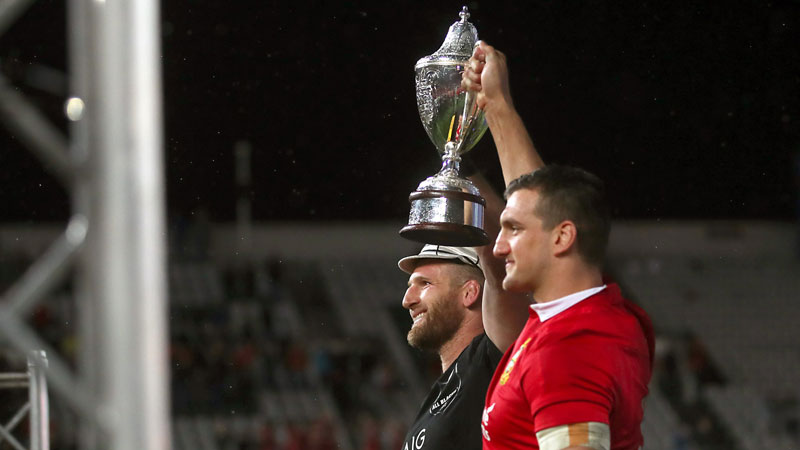
2013 - Gatland leads Lions to success
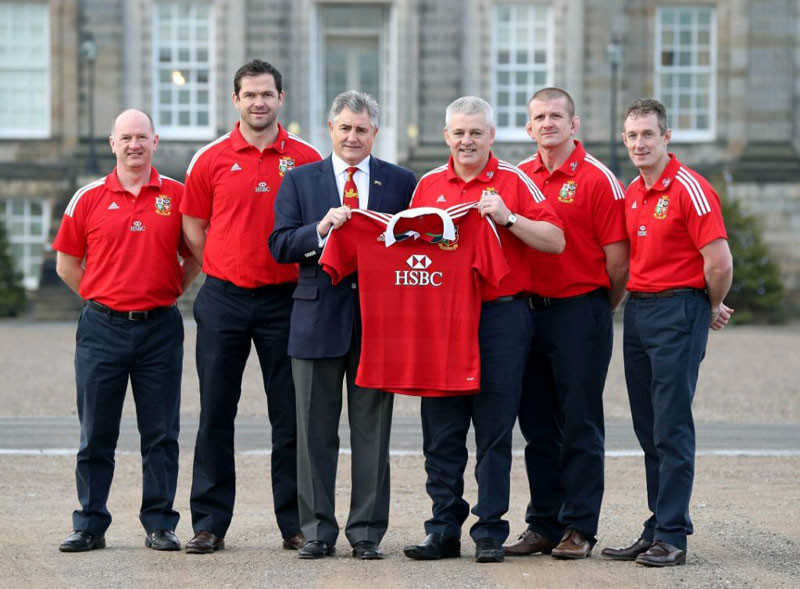 Warren Gatland was the man charged with overseeing the Tour, the second New Zealander to coach the Lions, after Graham Henry led the party in 2001.
Warren Gatland was the man charged with overseeing the Tour, the second New Zealander to coach the Lions, after Graham Henry led the party in 2001.
Gatland picks his squad
Gatland, who had been part of Sir Ian McGeechan’s coaching team for the 2009 Tour to South Africa and was joined by four assistant coaches in Rob Howley (attack), Graham Rowntree (forwards), Andy Farrell (defence) and Neil Jenkins (kicking). The head coach named a strong Welsh contingent in his touring party, in total 16 Welshmen were in the squad, with England contributing 14, Ireland 12 and four Scots - captain was Sam Warburton. In all the ten-match Tour was a resounding success as the Lions won the Test series 2-1, while also winning six of their seven provincial matches.Warm-up successes
The British & Irish Lions arrived in Australia and won their first four provincial matches, starting with a thumping 69-17 win over the Western Force before a hard-fought 22-12 win over the Reds and a 64-0 success over the NSW-Queensland Country XV. Leigh Halfpenny’s 30-point haul helped the Lions to a 47-17 win over the Waratahs before a 14-12 loss to the Brumbies in their final warm-up match.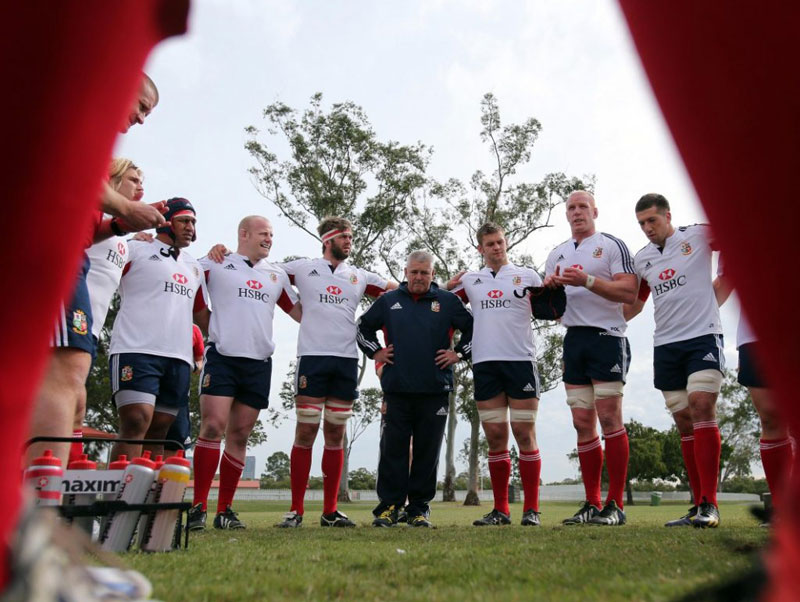
The first and second Tests
The first Test in Brisbane will live long in the memory for everyone involved as George North stole the headlines with a spectacular solo try. After scrum-half Will Genia's kick picked out Israel Folau for the game's opening try, Halfpenny got the Lions on the scoreboard with successful penalty. North then stole the show with his exquisite try and you can read more on his exploits in this Test by clicking here. Folau's second made it 13-12 to The Lions at half-time but when Alex Cuthbert came off his right wing and was found by Jonathan Sexton's pass he dotted down to extend the visitors lead. The Lions' second try made it 20-12 only for the Wallabies to mount a fierce comeback through Kurtley Beale. And the Australian had a kick to win the first Test in time added on – only to slip on the turf. An impressive midweek victory over the Melbourne Rebels maintained the Lions' momentum but in the second Test it was Halfpenny's last-gasp kick from halfway that failed to bisect the posts and Australia held on for a 16-15 win.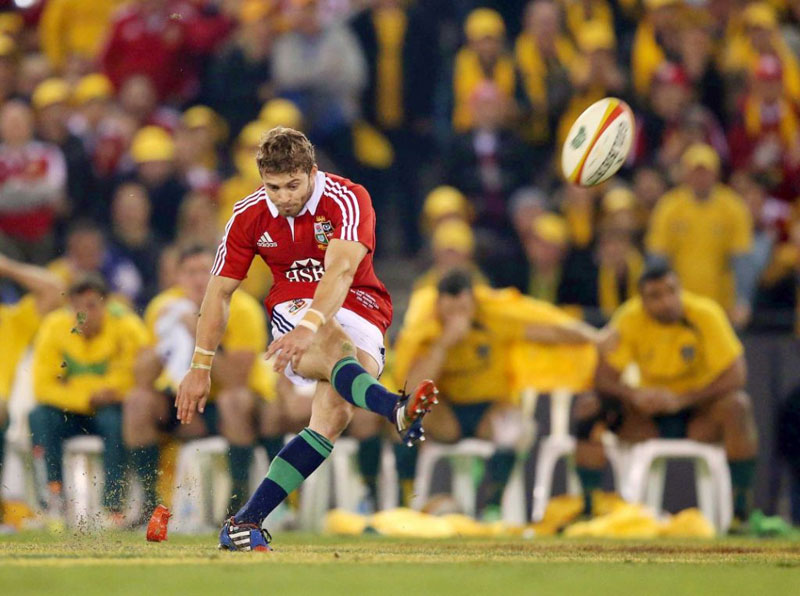
The Third Test
With skipper Warburton ruled out of the third Test through injury, he was replaced as captain by lock Alun Wyn Jones with the Lions delivering in style in Sydney. After two nip-and-tuck encounters in the third and decisive clash was a mammoth and historic victory for the tourists after a second-half blitz sealed a 41-16 success. Alex Corbisiero, following in the footsteps of great injury replacements Jeremy Guscott (1989) and Martin Johnson (1993), got the Lions off to the perfect start when he burrowed over with two minutes barely on the clock. The ever-reliable boot of Halfpenny, one of a record-equalling ten Welshmen in the starting XV, and the dominance of the Lions forwards kept the scoreboard ticking for the visitors who led 19-10 at the break.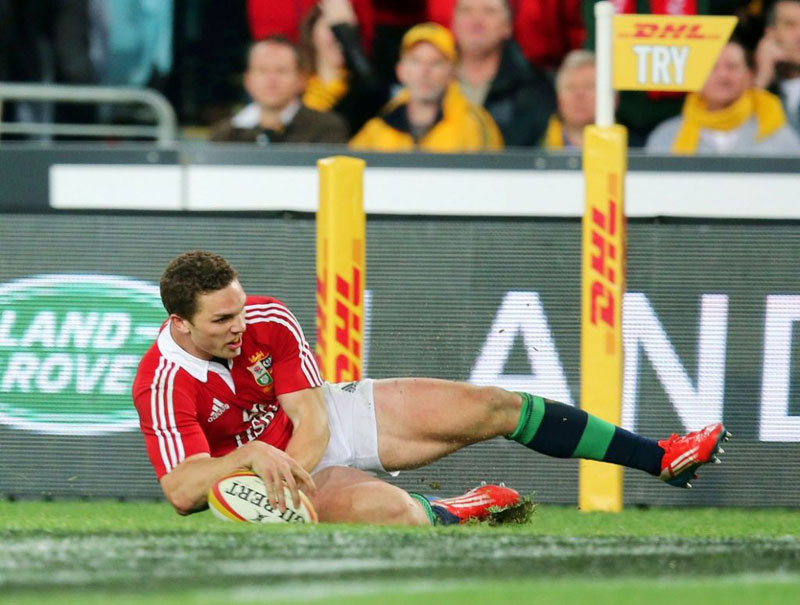 Then came an incredible second-half blitz as Sexton and Tommy Bowe combined to send Jonathan Davies through a gap before Halfpenny fed Sexton for the Lions second try.
Halfpenny then sent North over the line and Jamie Roberts added an incredible fourth as Gatland’s men ran up a record Test points tally.
Man of the series Halfpenny landed eight kicks on his way to a 21-point individual tally, overtaking the 20 point record for an individual Lions in a Test shared by Jonny Wilkinson (2005 v Argentina) and Stephen Jones (2009 v South Africa).
The Welshmen’s total points haul of 49 also saw him overtake Neil Jenkins’ record during a Lions Tour by eight points.
Then came an incredible second-half blitz as Sexton and Tommy Bowe combined to send Jonathan Davies through a gap before Halfpenny fed Sexton for the Lions second try.
Halfpenny then sent North over the line and Jamie Roberts added an incredible fourth as Gatland’s men ran up a record Test points tally.
Man of the series Halfpenny landed eight kicks on his way to a 21-point individual tally, overtaking the 20 point record for an individual Lions in a Test shared by Jonny Wilkinson (2005 v Argentina) and Stephen Jones (2009 v South Africa).
The Welshmen’s total points haul of 49 also saw him overtake Neil Jenkins’ record during a Lions Tour by eight points. 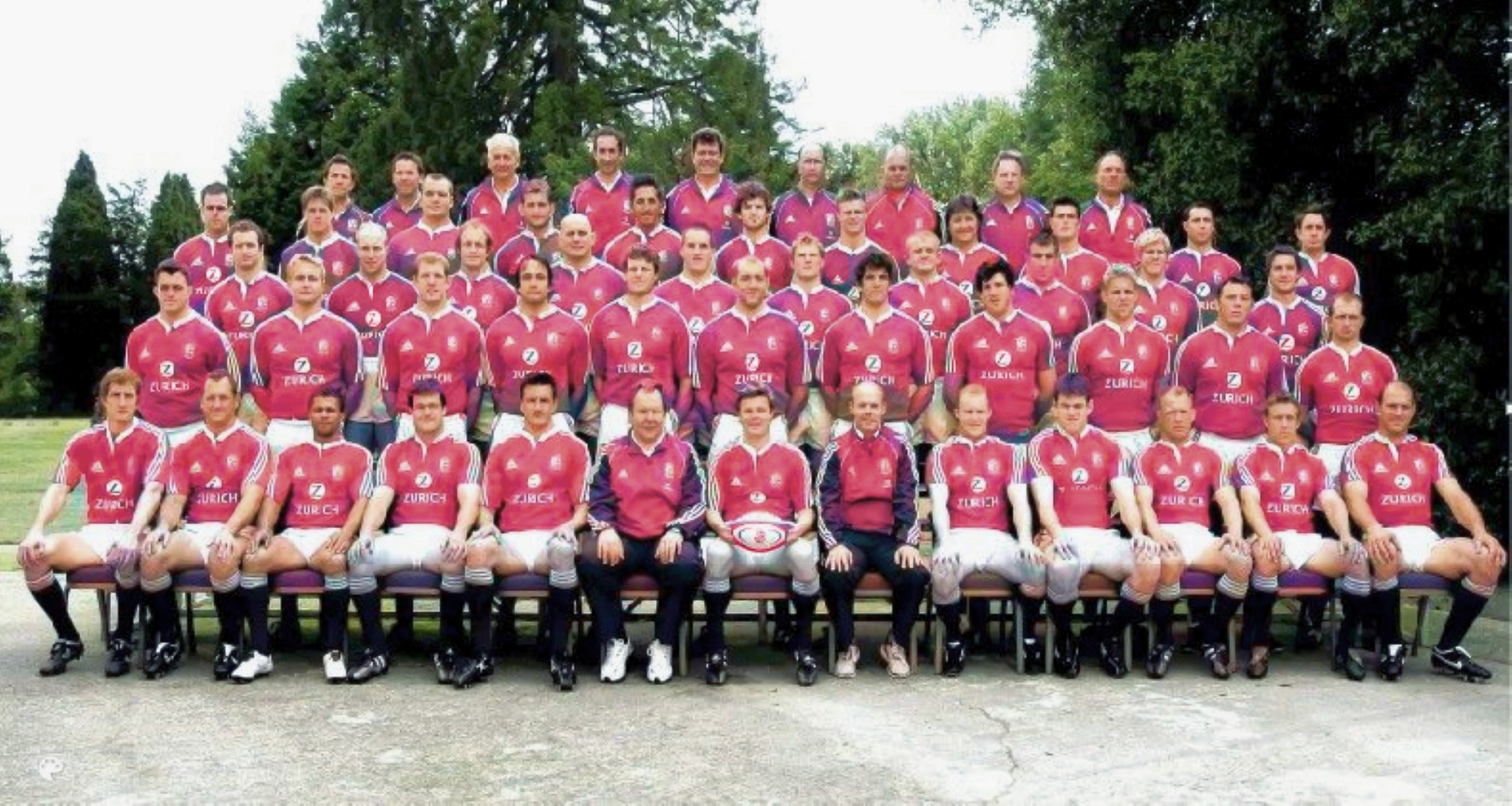 Narrow defeats to Australia in 2001 and South Africa in 2009 do not tell the full story of a period where The Lions were a fully professional squad on and off the field.
Narrow defeats to Australia in 2001 and South Africa in 2009 do not tell the full story of a period where The Lions were a fully professional squad on and off the field.
2001 - Kiwi coach plots Australia downfall
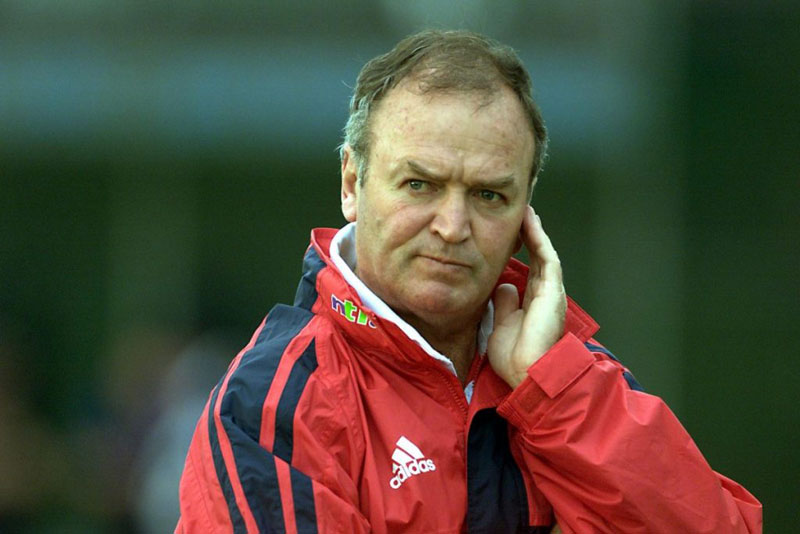 The Lions broke with tradition in 2001 by appointing their first coach from outside the British Isles in New Zealander Graham Henry, then in charge of Wales.
Captain Martin Johnson became the only man to lead the tourists twice.
Managed by Donal Lenihan, leader of the midweek team of 1989, the Tour generated excitement like no other, with more than 20,000 British & Irish Lions fans heading south in support.
The Tour could not have got off to a better as the Lions ran in 18 tries in a record 116-10 victory over an amateur Western Australia side in the opening Tour game.
The Lions broke with tradition in 2001 by appointing their first coach from outside the British Isles in New Zealander Graham Henry, then in charge of Wales.
Captain Martin Johnson became the only man to lead the tourists twice.
Managed by Donal Lenihan, leader of the midweek team of 1989, the Tour generated excitement like no other, with more than 20,000 British & Irish Lions fans heading south in support.
The Tour could not have got off to a better as the Lions ran in 18 tries in a record 116-10 victory over an amateur Western Australia side in the opening Tour game.
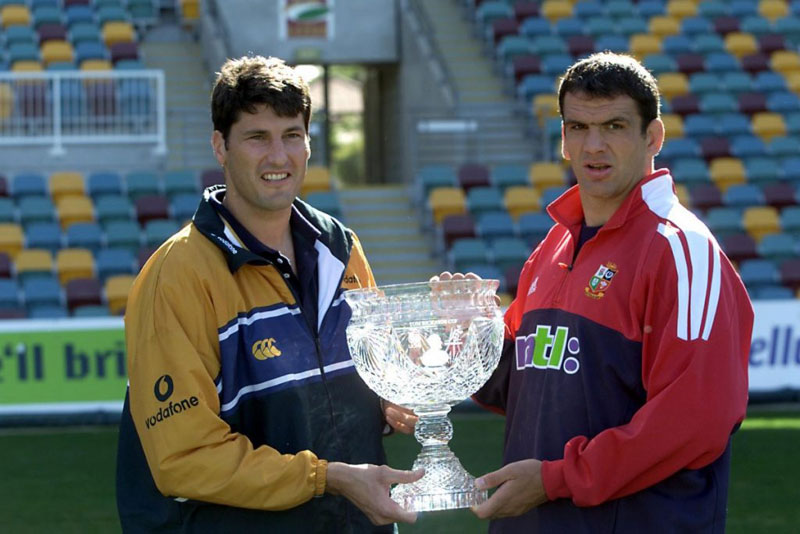
O'Driscoll Magic
When the serious stuff got underway, the Lions got a lightning start as England’s Jason Robinson crossed the whitewash to give the tourists the lead inside the first three minutes. Further first-half tries from Dafydd James and Quinnell sent the visiting supporters into raptures. A spectacular solo effort from O’Driscoll, prompting chants of 'Waltzing O'Driscoll', sealed a fourth as he charged through the Aussies defensive line to seal a resounding 29-13 victory.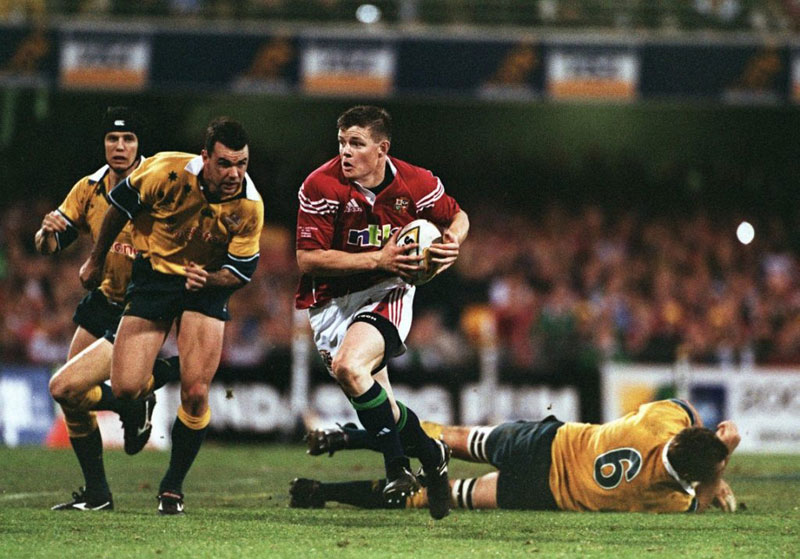
Series levelled
The second Test would also be decided in its third quarter, but this time it was the Wallabies who made the decisive move. The hosts trailed 11-6 at half-time but emerged to score 15 points in 10 minutes and set themselves up for a 35-14 win.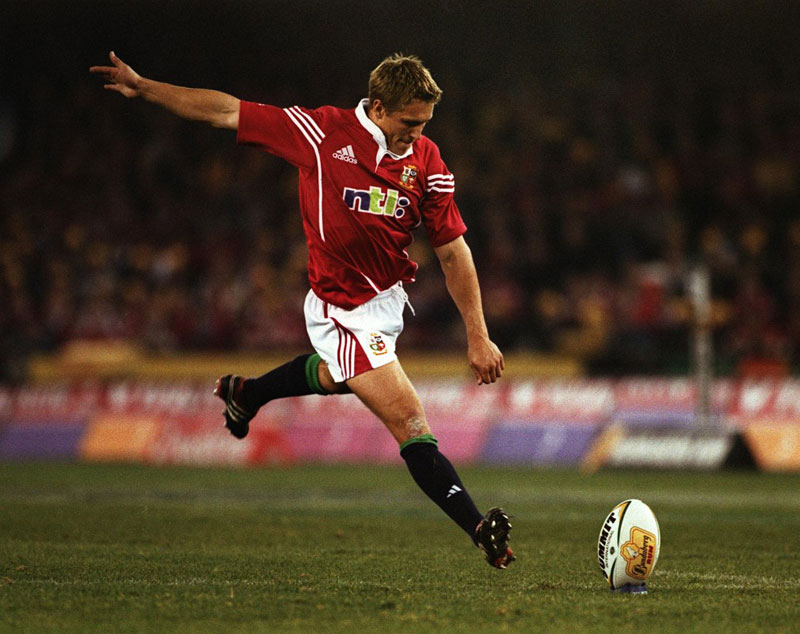
The 2001 decider
The final Test could hardly have been closer as the two teams kept pace to stand level at 23-23 with 12 minutes to play, Robinson and Wilkinson having scored tries for the tourists. Matt Burke then kicked two penalties to give Australia a 29-23 advantage, but the Lions engineered one last chance for the try and conversion they needed to win with a lineout in the Wallabies' 22. Wood threw to Johnson but Australia lock Justin Harrison pulled off the steal of the series to take possession and make his side's victory safe.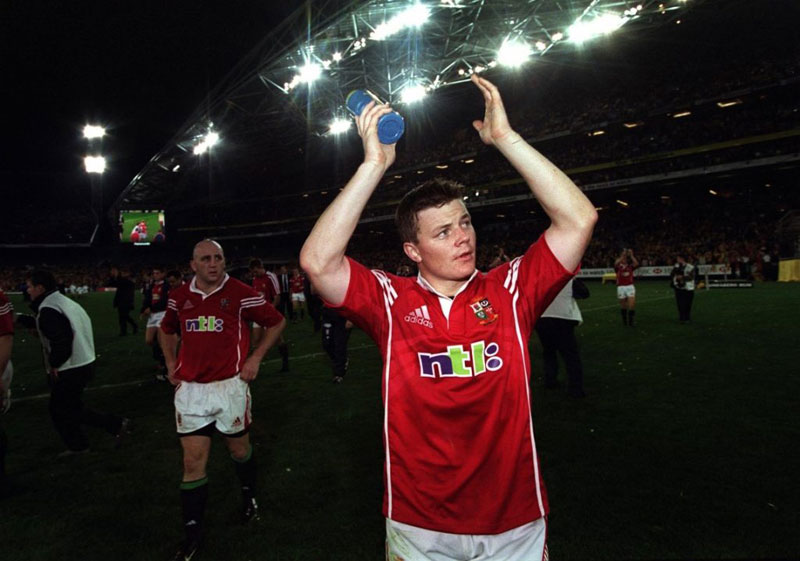
2005
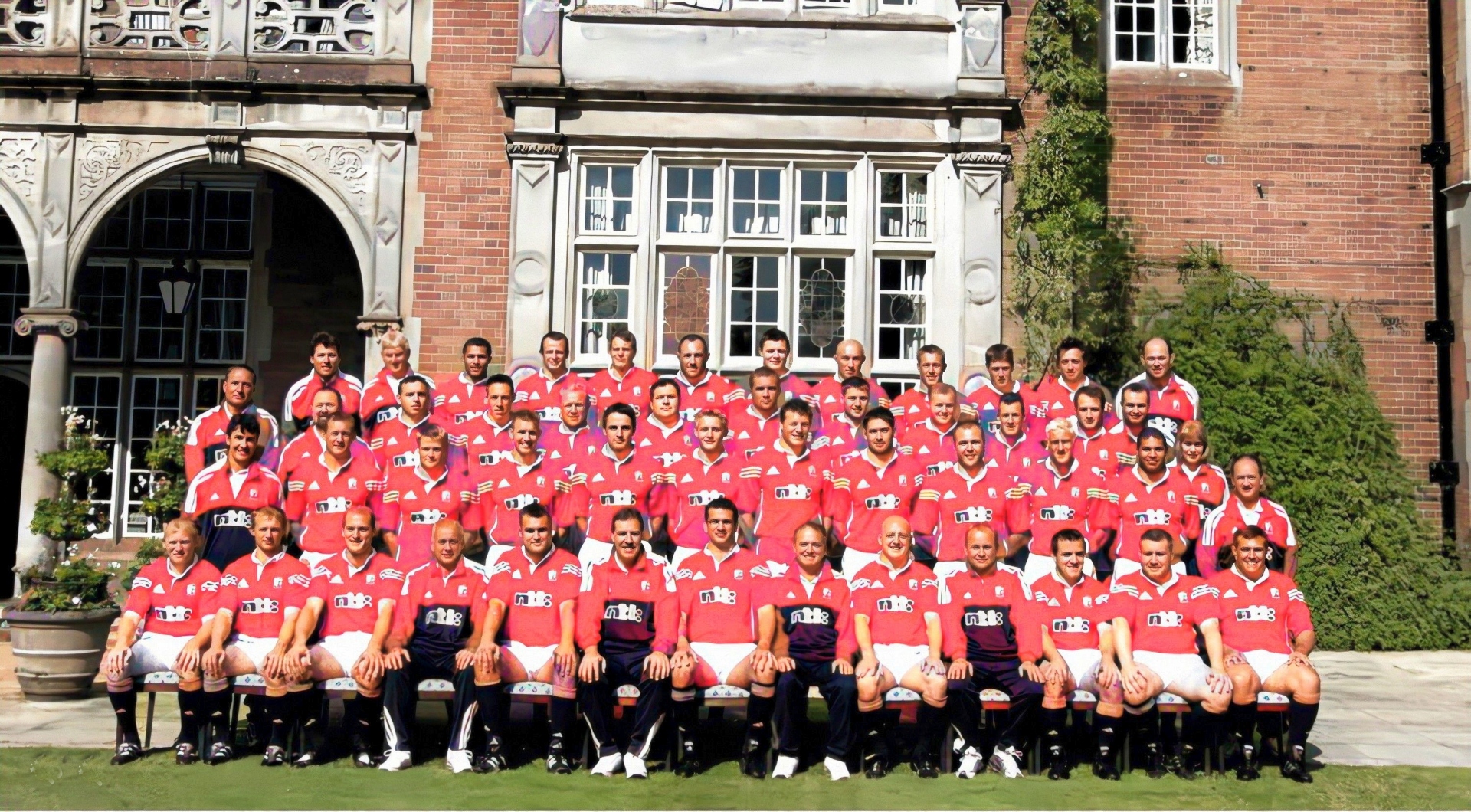 A Dan Carter-inspired New Zealand would be a match for any Test side in history but a series of unfortunate circumstances did not help The British & Irish Lions’ cause.
Sir Clive Woodward, who had won the World Cup with England two years prior, named 20 Englishman in total while there were 11 Irish, ten Welsh and three Scottish representatives.
A Dan Carter-inspired New Zealand would be a match for any Test side in history but a series of unfortunate circumstances did not help The British & Irish Lions’ cause.
Sir Clive Woodward, who had won the World Cup with England two years prior, named 20 Englishman in total while there were 11 Irish, ten Welsh and three Scottish representatives.
A rare home fixture
Before the squad departed for their five-week Tour of New Zealand, they played their first fixture against Argentina since 1936. The clash, which in a change from tradition took place on British shores, ended 25 points apiece with centre Ollie Smith dotting down and Wilkinson kicking 20 from the tee.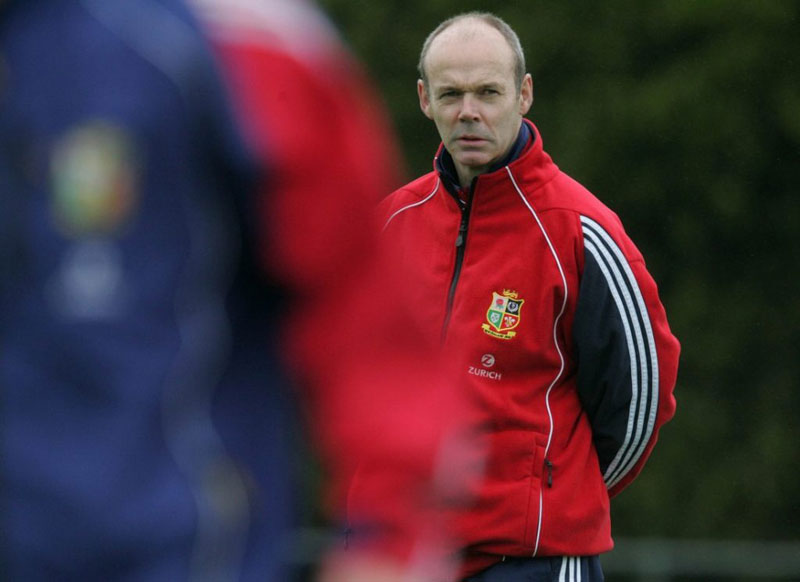 But Woodward’s best-laid plans took a blow when Wasps legend Lawrence Dallaglio’s Tour was cut short by an ankle injury and skipper Brian O’Driscoll was sidelined in the First Test for the entire Tour.
The Ireland centre – four years on from scoring a breathtaking try in the Lions’ first Test in Australia – dislocated his shoulder as the Lions went down 21-3 in Christchurch.
In between the Tests, Sir Ian McGeechan was leading a midweek side to victories against strong provinces such as Wellington, Auckland and Otago.
But Woodward’s best-laid plans took a blow when Wasps legend Lawrence Dallaglio’s Tour was cut short by an ankle injury and skipper Brian O’Driscoll was sidelined in the First Test for the entire Tour.
The Ireland centre – four years on from scoring a breathtaking try in the Lions’ first Test in Australia – dislocated his shoulder as the Lions went down 21-3 in Christchurch.
In between the Tests, Sir Ian McGeechan was leading a midweek side to victories against strong provinces such as Wellington, Auckland and Otago.
Carter announces himself
The Test series slipped away during the second clash as Carter, at the tender age of just 22, scored 33 points in a 48-18 victory. The third Test started promisingly as Stephen Jones kicked the Lions into a six-point lead, but a disappointing Tour ended in Auckland with a 38-19 defeat.2009 - Strong squad fall just short
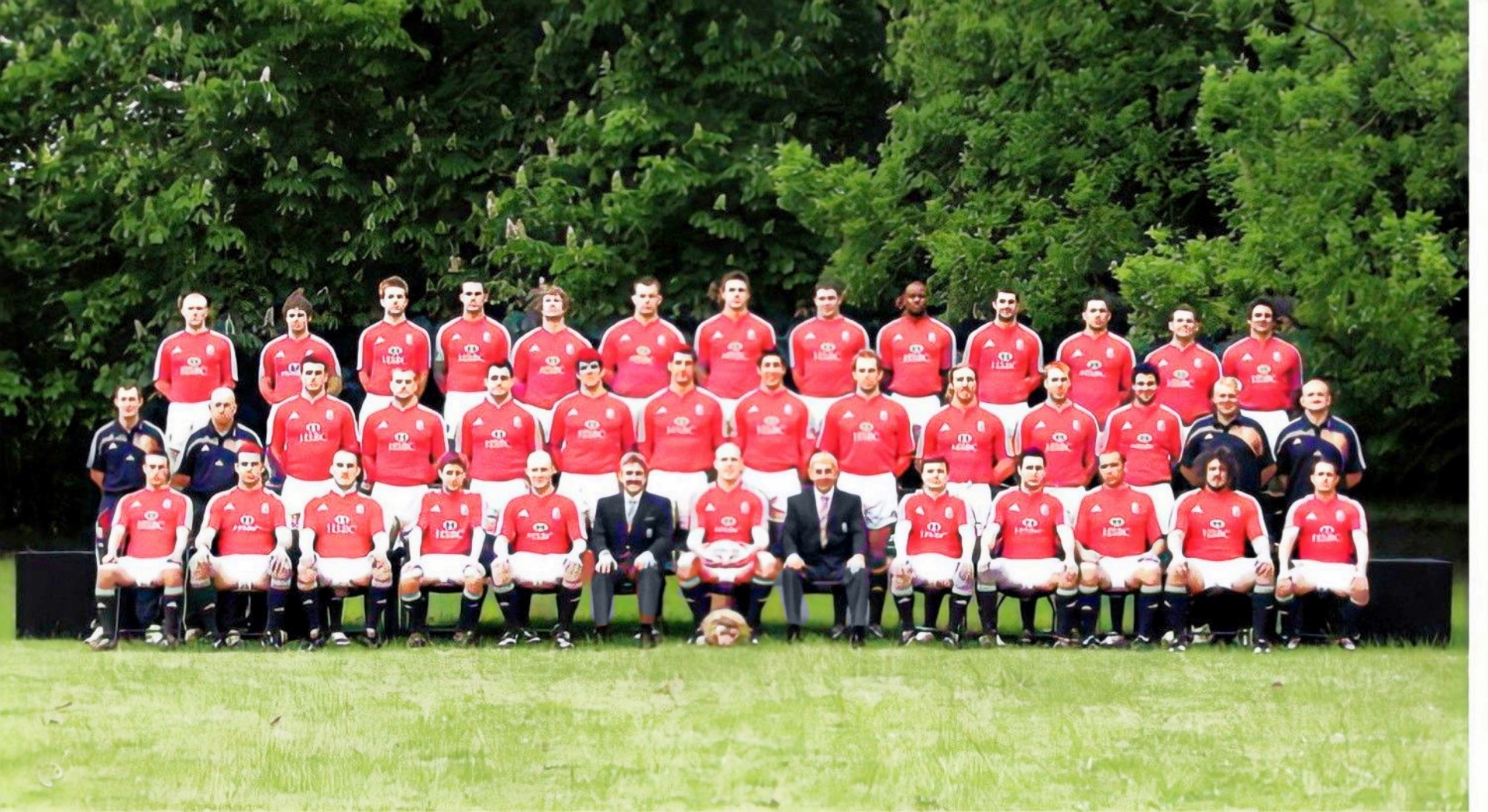 One of the best British & Irish Lions side to lose a Test series – Brian O’Driscoll, Paul O’Connell and Jamie Roberts were its lifeblood and at its epicentre was Sir Ian McGeechan.
After the difficulties faced in New Zealand in 2005, McGeechan returned the 2009 Lions to their origins, instilling them with a pride he founded in his time as a player.
Head coach Sir Ian’s 37-man squad warmed up for the first Test in Durban with six successive victories over provincial teams, including a ten-try defeat of Golden Lions.
One of the best British & Irish Lions side to lose a Test series – Brian O’Driscoll, Paul O’Connell and Jamie Roberts were its lifeblood and at its epicentre was Sir Ian McGeechan.
After the difficulties faced in New Zealand in 2005, McGeechan returned the 2009 Lions to their origins, instilling them with a pride he founded in his time as a player.
Head coach Sir Ian’s 37-man squad warmed up for the first Test in Durban with six successive victories over provincial teams, including a ten-try defeat of Golden Lions.
The Test Series
The epic first Test was lost 26-21 loss with O’Connell leading his troops out in front of a bustling crowd at the ABSA Stadium which included a supreme Sea of Red.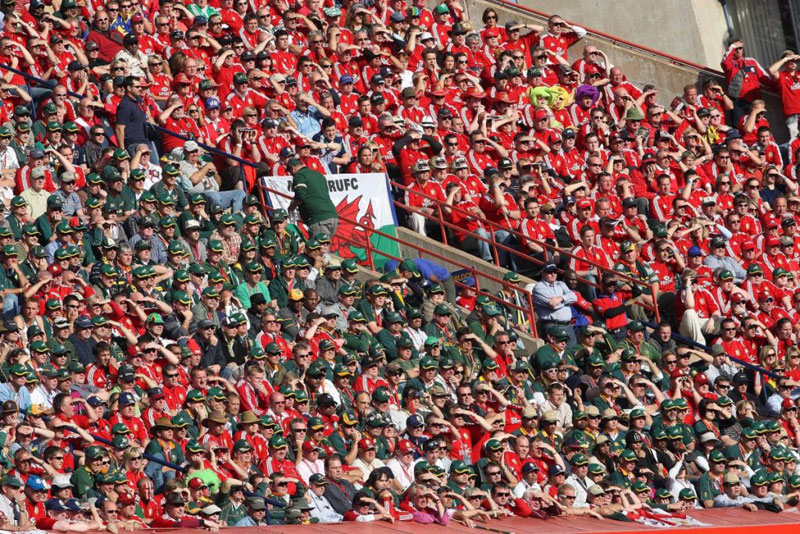 The Sunday Times’ Stephen Jones called Simon Shaw’s performance at Loftus in the second Test the greatest by a forward anywhere, ever.
With Shaw, O’Connell, David Wallace and the all-Welsh front-row immense up front, Stephen Jones was impeccable with the boot and the Lions led 19-8.
But history had other things in mind and it proved to be a case of so near, yet so far as Bryan Habana and Jaque Fourie turned the tide before Morne Steyn broke Lions’ hearts in a 28-25 Springbok success.
McGeechan restored pride to the red jersey with a 28-9 final Test win - as Shane Williams scored two tries - to seal the Lions first Test success since 2001.
The Sunday Times’ Stephen Jones called Simon Shaw’s performance at Loftus in the second Test the greatest by a forward anywhere, ever.
With Shaw, O’Connell, David Wallace and the all-Welsh front-row immense up front, Stephen Jones was impeccable with the boot and the Lions led 19-8.
But history had other things in mind and it proved to be a case of so near, yet so far as Bryan Habana and Jaque Fourie turned the tide before Morne Steyn broke Lions’ hearts in a 28-25 Springbok success.
McGeechan restored pride to the red jersey with a 28-9 final Test win - as Shane Williams scored two tries - to seal the Lions first Test success since 2001. 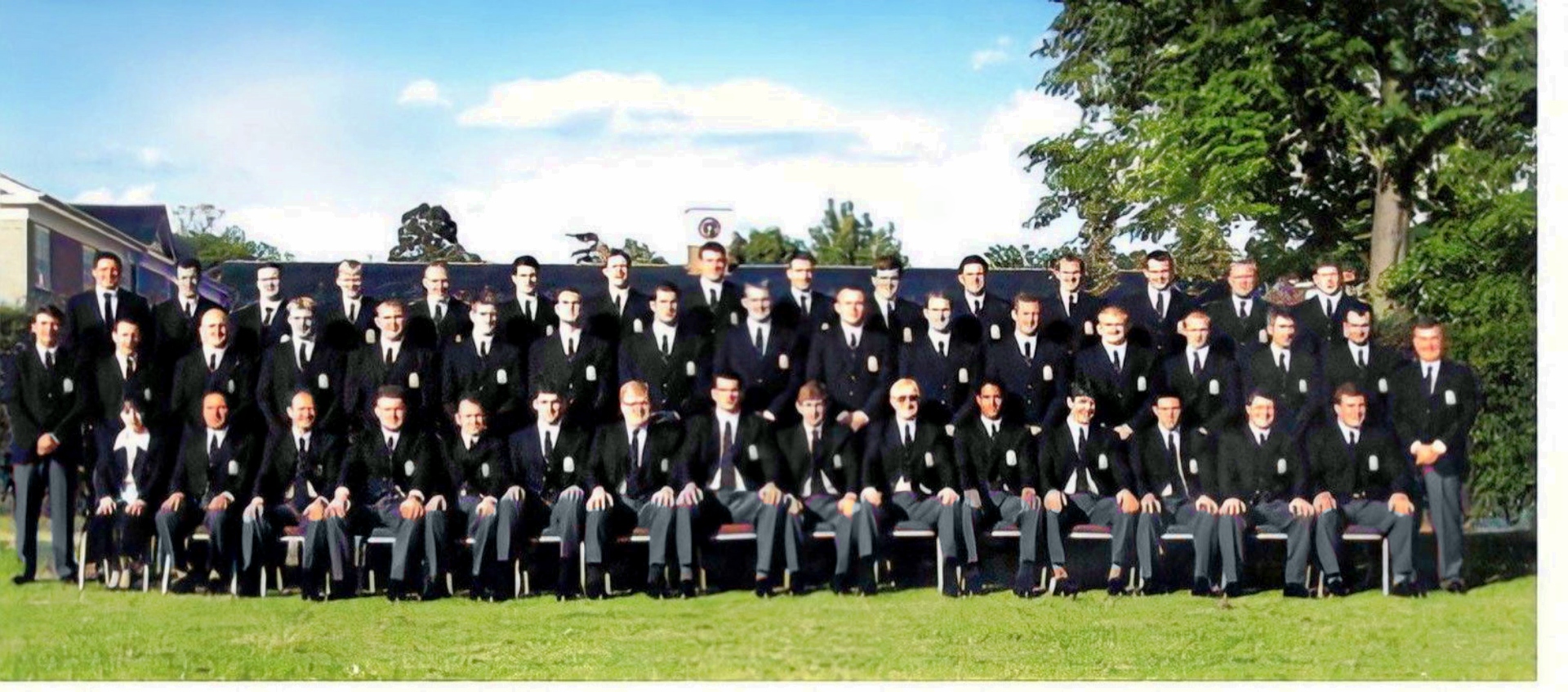 A hugely memorable Tour, their second victory in South Africa from 100 years of trying, was one of the Lions greatest tactical successes as they won the Test series 2-1.
A hugely memorable Tour, their second victory in South Africa from 100 years of trying, was one of the Lions greatest tactical successes as they won the Test series 2-1.
1997 - McGeechan in charge for third time
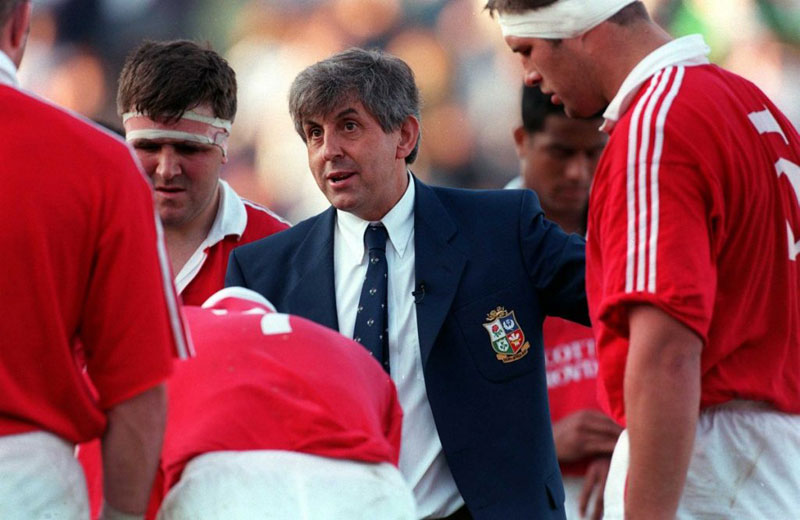 The first Lions of the professional age saw the tourists travel to Rugby World Cup winners South Africa for the first time since 1980.
Sir Ian McGeechan coached the side for an unprecedented third time, with England second row Martin Johnson becoming the first English captain of the Lions since Bill Beaumont.
Fran Cotton – a three-time Lion including two visits to South Africa – took on the figurehead role of manager.
McGeechan took six former rugby league players - Allan Bateman, Scott Gibbs, John Bentley, Alan Tait, Dai Young and Scott Quinnell - in an attempt to fast-track the squad into more professional disciplines.
The Lions made an instant impression winning all four of their opening Tour games including a 64-14 thrashing of Mpumalanga.
A marker was laid down in their opening clash of the Tour as McGeechan put together one of his most famous speeches of all.
After defeat to Northern Transvaal, the tourists beat Gauteng 20-15 thanks to a 70-yard try from Bentley which set the tone for what was to come.
The Lions had won five of their opening six warm-up games when they arrived in Durban for the unofficial fourth Test against Currie Cup holders Natal at King’s Park.
It became a defining match of the Tour as Gregor Townsend, Mike Catt and Lawrence Dallaglio all scored tries and were complimented by the superlative kicking of Jenkins who kicked 24 points.
Jenkins’ six penalties and three conversions helped secure his spot at full-back for the first Test ahead of pre-Tour favourite Stimpson.
The first Lions of the professional age saw the tourists travel to Rugby World Cup winners South Africa for the first time since 1980.
Sir Ian McGeechan coached the side for an unprecedented third time, with England second row Martin Johnson becoming the first English captain of the Lions since Bill Beaumont.
Fran Cotton – a three-time Lion including two visits to South Africa – took on the figurehead role of manager.
McGeechan took six former rugby league players - Allan Bateman, Scott Gibbs, John Bentley, Alan Tait, Dai Young and Scott Quinnell - in an attempt to fast-track the squad into more professional disciplines.
The Lions made an instant impression winning all four of their opening Tour games including a 64-14 thrashing of Mpumalanga.
A marker was laid down in their opening clash of the Tour as McGeechan put together one of his most famous speeches of all.
After defeat to Northern Transvaal, the tourists beat Gauteng 20-15 thanks to a 70-yard try from Bentley which set the tone for what was to come.
The Lions had won five of their opening six warm-up games when they arrived in Durban for the unofficial fourth Test against Currie Cup holders Natal at King’s Park.
It became a defining match of the Tour as Gregor Townsend, Mike Catt and Lawrence Dallaglio all scored tries and were complimented by the superlative kicking of Jenkins who kicked 24 points.
Jenkins’ six penalties and three conversions helped secure his spot at full-back for the first Test ahead of pre-Tour favourite Stimpson.
The First Test
The build-up to the first Test is famous for Jim Telfer's Everest speech to the forwards and in the front of over 50,000 spectators in Cape Town it was Martin Johnson, Lawrence Dallaglio and Keith Wood who had the tourists’ pack on the front foot.
But it was Matt Dawson, selected ahead of Austin Healey following the injury to Rob Howley, who ended up dealing South Africa the crucial blow.
After an early exchange of penalties Os du Randt barged his way over for the first try but pin-point kicking off the tee from Neil Jenkins saw the Lions lead 9-8 at half-time.
Replacement wing Russell Bennett crossed the whitewash in the second-half and the hosts led 16-15 on the hour mark.
It was then that Dawson's incredible intervention, a solo run down the blindside saw him break free before a one-handed dummy fooled four South African defenders allowing him to score in the corner.
A further try from Scotland winger Alan Tait in the opposite corner with just a minute left on the clock saw the Lions seal a memorable 25-16 win.
The Second Test
The second Test was played at King’s Park in Durban and, in a similar way to the first, the South Africans came out all guns blazing. The hosts scored three tries – through Joost van der Westhuizen, debutant Percy Montgomery and Andre Joubert – to the Lions’ none but missed all six of their kicks at goal and found Jenkins, once again, continually pegging them back with each of five vital penalties. With three minutes to play and the scores level at 15-15, Lions hooker Wood’s kick from his own half left the hosts’ defence no option but to concede a line-out in their 22.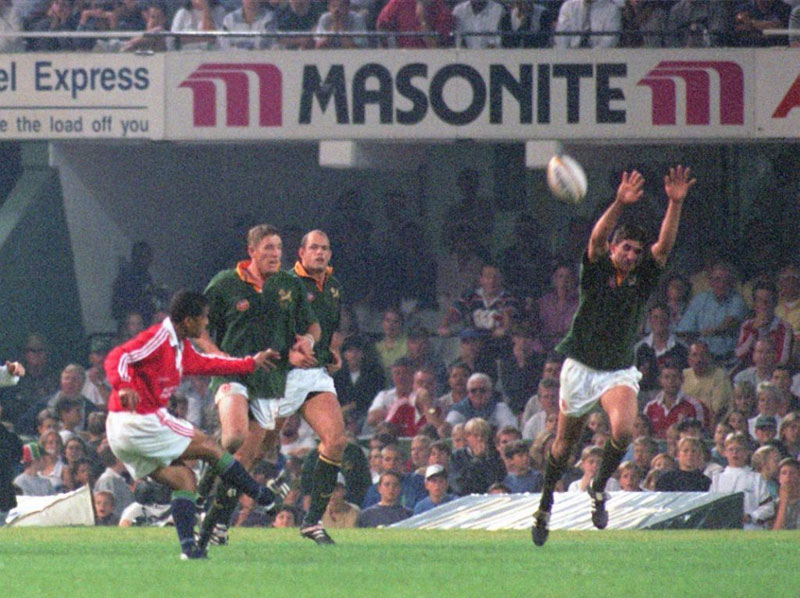 Following the line-out, Gregor Townsend was brought down short of the line but the ball was recycled and passed to inside centre Jeremy Guscott who coolly dropped the goal that put the Lions 18-15 ahead and secured an unassailable 2-0 series lead.
Following the line-out, Gregor Townsend was brought down short of the line but the ball was recycled and passed to inside centre Jeremy Guscott who coolly dropped the goal that put the Lions 18-15 ahead and secured an unassailable 2-0 series lead.
The Third Test
With the series secured and the tourists’ injuries continuing to pile up, five changes were made for the final Test which South Africa won 35-16 with three tries to the Lions’ one.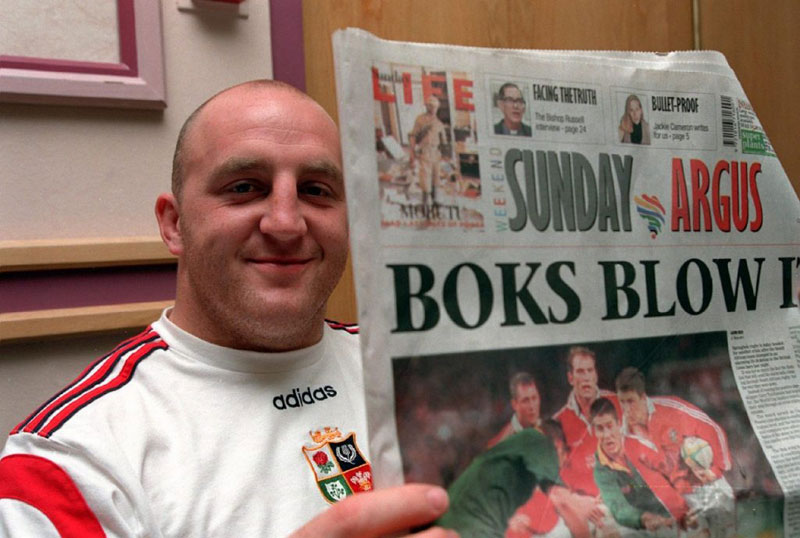 But the defeat, just their second in 13 Tour fixtures, didn’t prevent celebrations from the men in red who had a historic 2-1 series victory to their name.
But the defeat, just their second in 13 Tour fixtures, didn’t prevent celebrations from the men in red who had a historic 2-1 series victory to their name. 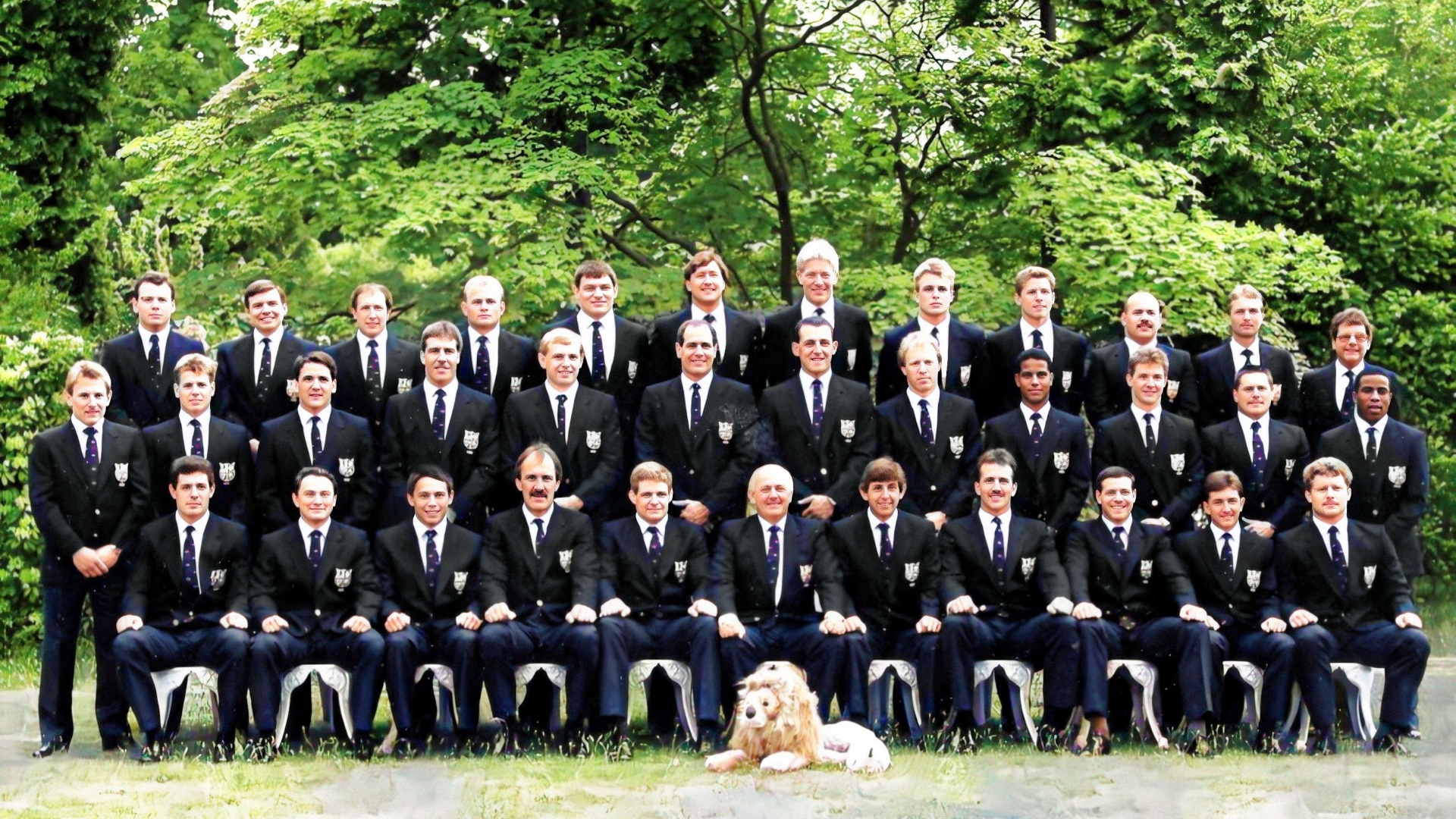 In 1989 the Lions travelled solely to Australia for the first time since 1899 and took home a 2-1 series victory before 1993's Tour to New Zealand, the last of the amateur era.
In 1989 the Lions travelled solely to Australia for the first time since 1899 and took home a 2-1 series victory before 1993's Tour to New Zealand, the last of the amateur era.
1989
The first Tour to resemble a modern day Lions schedule, the 1989 party played just 12 games in Australia during their six-week sojourn. With Australia hosting an entire Tour for the first time since 1899, The Lions lived up to their name and mauled their opponents, winning 11 of 12 matches and taking the Test series 2-1. The series was a tight affair with the Lions losing the first encounter in Sydney before coming back to level things in Brisbane and taking the final game by a single point back in Sydney. In doing so, Finlay Calder’s side became the first Lions side to win a series after losing the opening Test.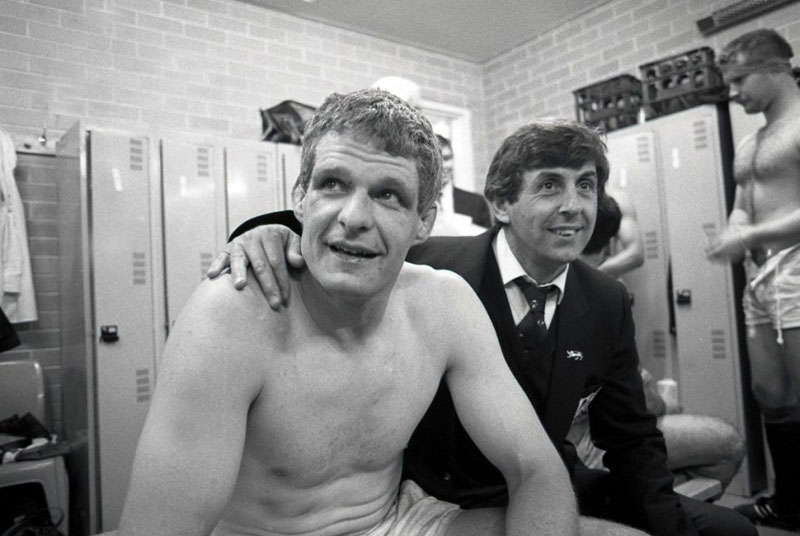 The tourists were managed by former Wales captain and coach Clive Rowlands, coached by Lions legend Sir Ian McGeechan and had an assistant manager in Roger Uttley for the first time.
Coach McGeechan had toured twice with The Lions as a player, losing to New Zealand in 1977 after being part of the 1974 Invincibles that went the entire Tour of South Africa unbeaten.
The Tour got off to a strong start with a 44-0 drubbing of Western Australia and a 23-8 victory over Australia B.
The tourists were managed by former Wales captain and coach Clive Rowlands, coached by Lions legend Sir Ian McGeechan and had an assistant manager in Roger Uttley for the first time.
Coach McGeechan had toured twice with The Lions as a player, losing to New Zealand in 1977 after being part of the 1974 Invincibles that went the entire Tour of South Africa unbeaten.
The Tour got off to a strong start with a 44-0 drubbing of Western Australia and a 23-8 victory over Australia B.
The First Test
The Lions went into the first Test on the back of six straight wins, scoring 178 points and conceding just 69, but in front of a capacity 44,000 crowd at the Sydney Football Stadium the half-back pairing of Nick Farr-Jones and Michael Lynagh ripped through the Lions. Full-back Greg Martin scored one of Australia’s four tries as Lynagh scored 14 points by himself to guide the home side to a 30-12 win.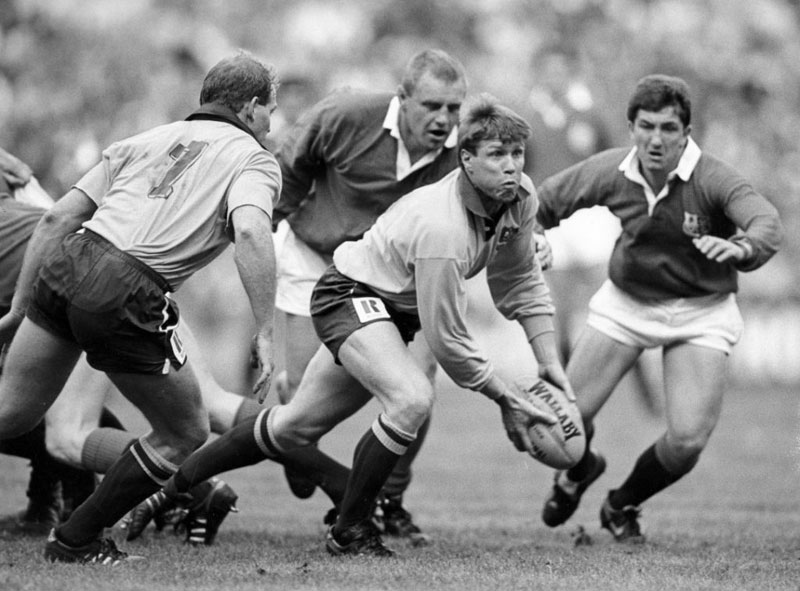
The Second Test
Just four days later the Lions visited Brisbane for the second Test and, with the outcome of the series potentially at stake, Wade Dooley was brought in to shore up the pack and The Lions walked away 19-12 victors. Australia were leading heading into the final eight minutes of the punishing encounter but the Lions’ power advantage finally told in the closing stages as Gavin Hastings finished a sweeping move in the right corner to give the tourists the lead.Try for the apprentice bricklayer
And the win was secured in style as Bath centre (and apprentice bricklayer) Jerry Guscott – only part of the Tour after Will Carling withdrew through injury – collected his own grubber kick in midfield to sprint clear and level the series.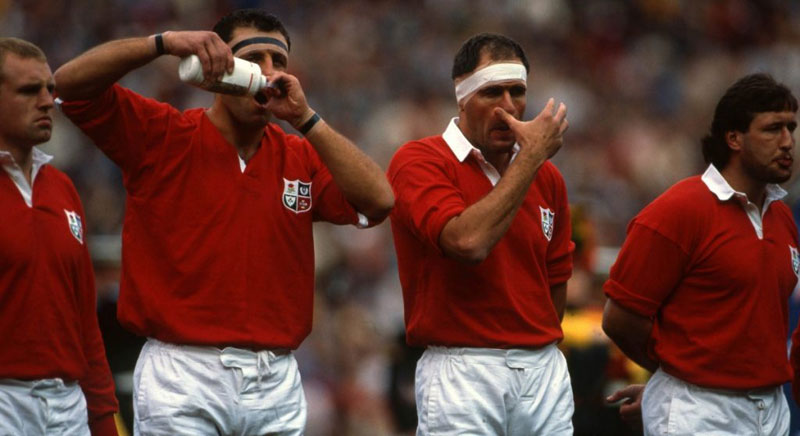
The Third Test
The Lions returned to Sydney a week later to finish the job and the tightest of games, between two unchanged sides, was decided by an error from Aussie winger David ‘Campo’ Campese. Three Hastings penalties were countered by an Ian Williams try and Lynagh three-pointer to mean the sides were tied at nine apiece going into the break. Lynagh kicked again to put the Wallabies ahead early in the second half but then came the moment of madness from Campo. Rob Andrew skewed an attempted drop-goal horribly wide which Campese collected in his own in-goal area and started to run it out but changed his mind and threw a suicide pass to Martin. The pass missed its target and Lions winger Ieuan Evans took advantage to touch down for the crucial score. Hastings kicked two more penalties to give the Lions a seven-point lead and despite the Wallabies’ efforts to claw their way back, six points from Lynagh’s boot were not enough and the tourists hung on for a memorable victory.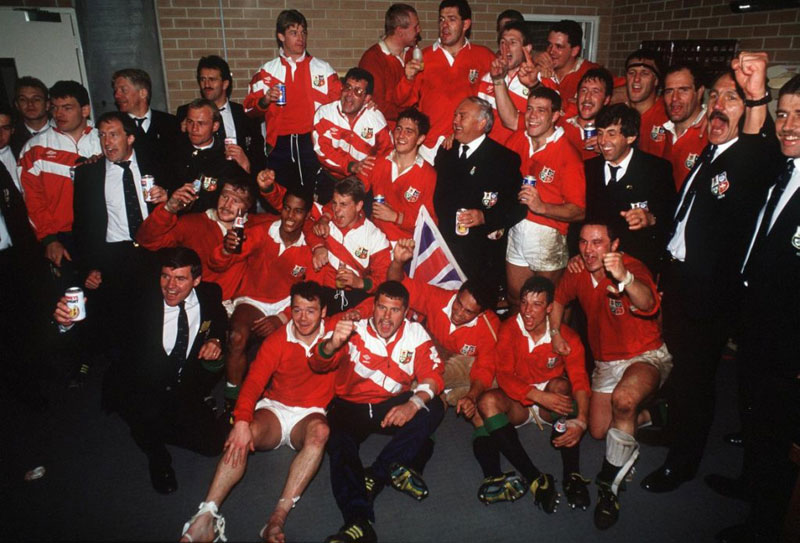
1993 - So close and yet so far
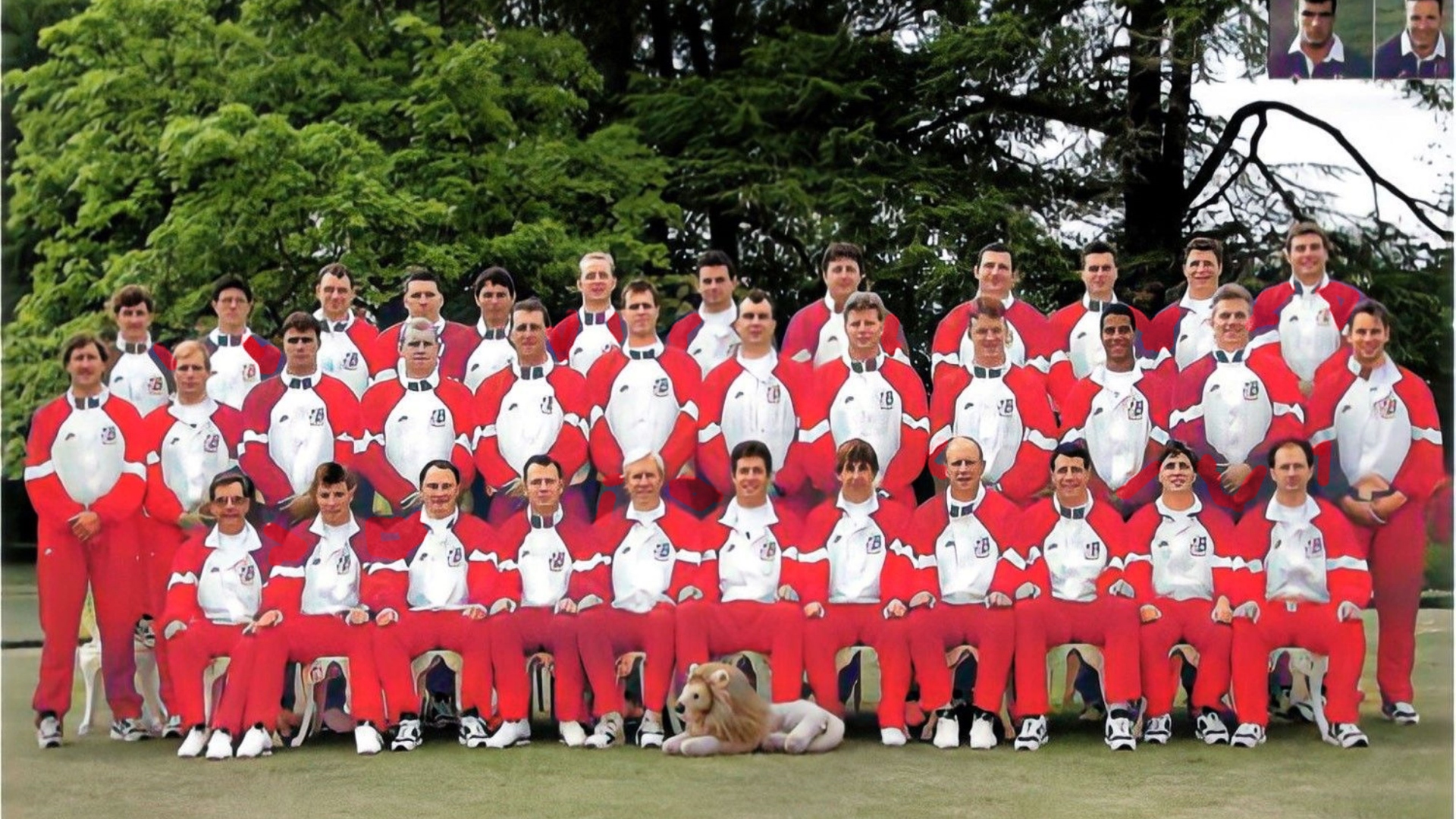 The 1993 Lions were the last of the amateur age and there was much drama and excitement to be found in their 2-1 Test series defeat to New Zealand.
Two series losses and 22 years had gone by since the historic 1971 Tour, where the Lions notched up what is still their only series victory on All Black soil.
But in this Tour they arguably came as close as any side before or since to repeating that feat, and, but for one penalty in the final minute of the first Test, they would have done.
The 1993 Lions were the last of the amateur age and there was much drama and excitement to be found in their 2-1 Test series defeat to New Zealand.
Two series losses and 22 years had gone by since the historic 1971 Tour, where the Lions notched up what is still their only series victory on All Black soil.
But in this Tour they arguably came as close as any side before or since to repeating that feat, and, but for one penalty in the final minute of the first Test, they would have done.
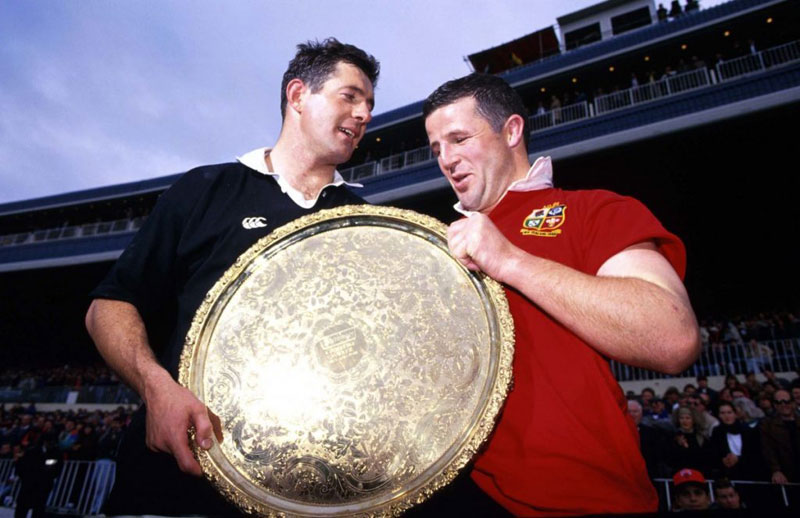 The charismatic Scot Gavin Hastings was chosen as skipper, with his extreme on-field talents boosted by his previous Lions experience and his immense Scotland performances on their 1990 Tour of New Zealand.
Perhaps the more momentous appointment however was that of Ian McGeechan, the master of 1989, who became the first man ever to coach two Tours.
The charismatic Scot Gavin Hastings was chosen as skipper, with his extreme on-field talents boosted by his previous Lions experience and his immense Scotland performances on their 1990 Tour of New Zealand.
Perhaps the more momentous appointment however was that of Ian McGeechan, the master of 1989, who became the first man ever to coach two Tours.
Brothers in arms
Two sets of brothers made the touring party, with Rory and Tony Underwood of Leicester joining Hastings and his brother Scott.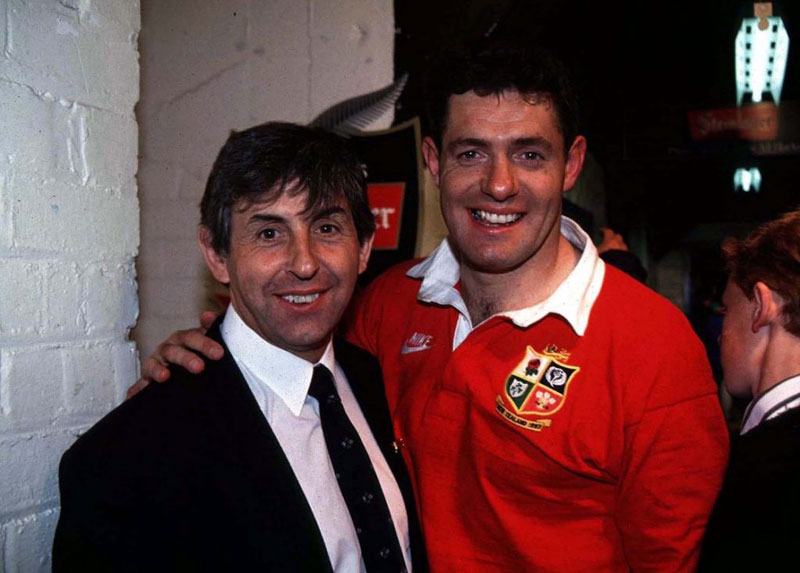
The First Test
The 1993 Tour is one of the few that will be remembered primarily for the first Test, rather than the ones that followed it, but the Lions’ narrow defeat in Christchurch was a tough pill to swallow. Hastings’ side got off to the worst possible start, conceding a try inside two minutes as Evans and Frank Bunce both landed over the tryline after claiming Grant Fox's high kick. But the Lions battled back admirably and Hastings sent six penalties sailing through the posts – at that time a new record for the most in a match for the Lions and the joint-most points in one match with Tony Ward. The final kick put them 18-17 ahead with a minute to play, but that effort was in vain as a controversial last-gasp Fox penalty saw New Zealand snatch away the win.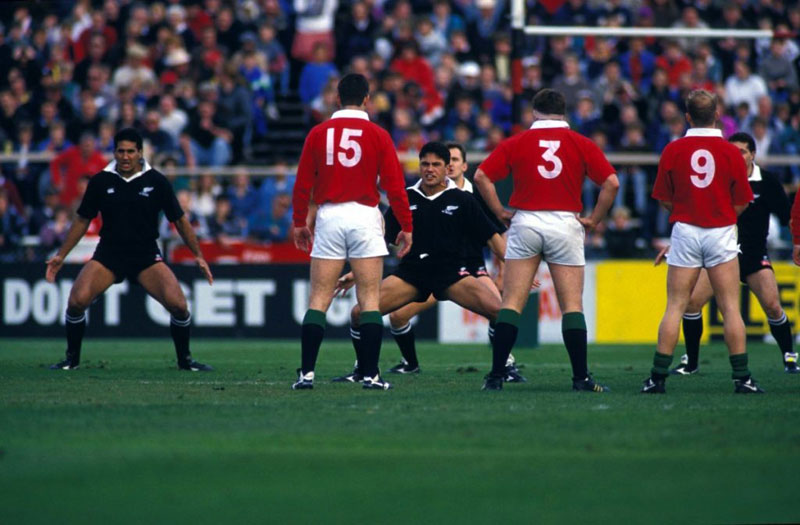
The Lions fight back to force a decider
After a single-point defeat in the First Test, the Lions came roaring back with a vengence in the Second Test as McGeechan and Hastings’ risky tactic of playing into the wind and sun in the first half paid dividends. An impressive showing from the Lions saw them lead 9-7 at the break, despite a try for Eroni Clarke on 30 minutes, as Hastings could not pick up a high ball from Fox in the sun. Fox at this point had not missed a penalty in Tests in five years, and made no mistake with the conversion, although superb discipline from the Lions meant two Hastings penalties and a perfect Rob Andrew drop-goal saw them edge ahead at half-time.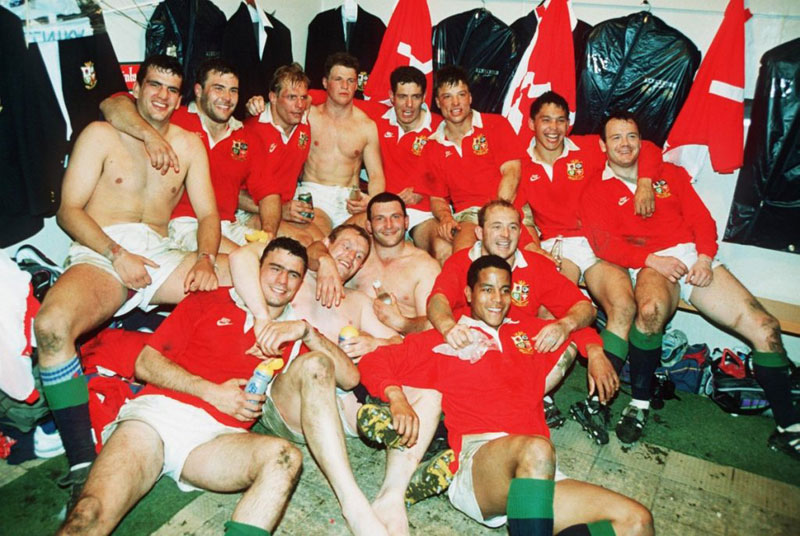 And after another Hastings penalty came one of the all-time great Lions tries, started by the irresistible Dewi Morris.
He picked up a loose pass and made the initial break before giving it to Jeremy Guscott, who in turn beat Bunce and John Kirwan before releasing Rory Underwood for a sensational 50-metre score.
One more sweetly struck Hastings penalty handed the Lions their biggest ever points tally against New Zealand, and the 20-7 scoreline is still the tourists’ largest margin of victory against the All Blacks.
And after another Hastings penalty came one of the all-time great Lions tries, started by the irresistible Dewi Morris.
He picked up a loose pass and made the initial break before giving it to Jeremy Guscott, who in turn beat Bunce and John Kirwan before releasing Rory Underwood for a sensational 50-metre score.
One more sweetly struck Hastings penalty handed the Lions their biggest ever points tally against New Zealand, and the 20-7 scoreline is still the tourists’ largest margin of victory against the All Blacks.
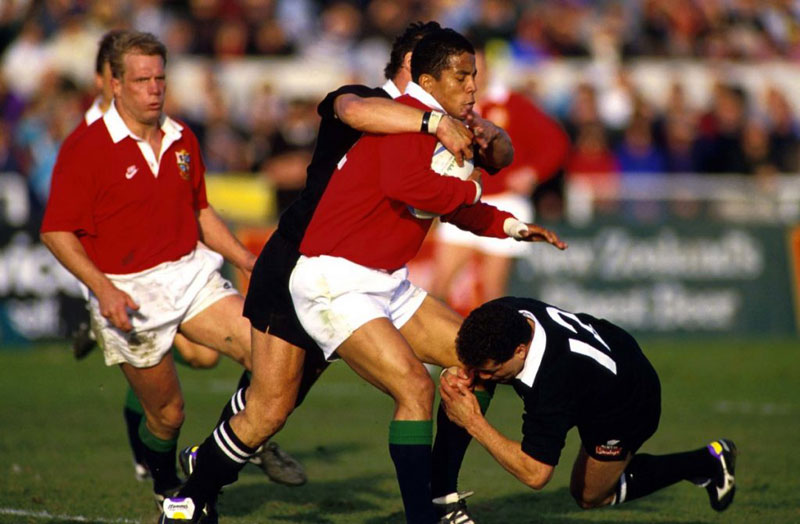
The Decider
And so the Tour came down to a deciding clash at Eden Park, the scene of the Lions’ series-clinching 14-14 draw in 1971, but history was not to repeat itself. The Lions opened up a ten-point lead thanks to Scott Gibbs’ try and five more points from the boot of Hastings but Sean Fitzpatrick scored after Bunce’s try to put the hosts 14-10 up at the break. The All Blacks ran away with the contest in the second-half to finish 30-13 winners, with Jon Preston’s try finishing the match and the series.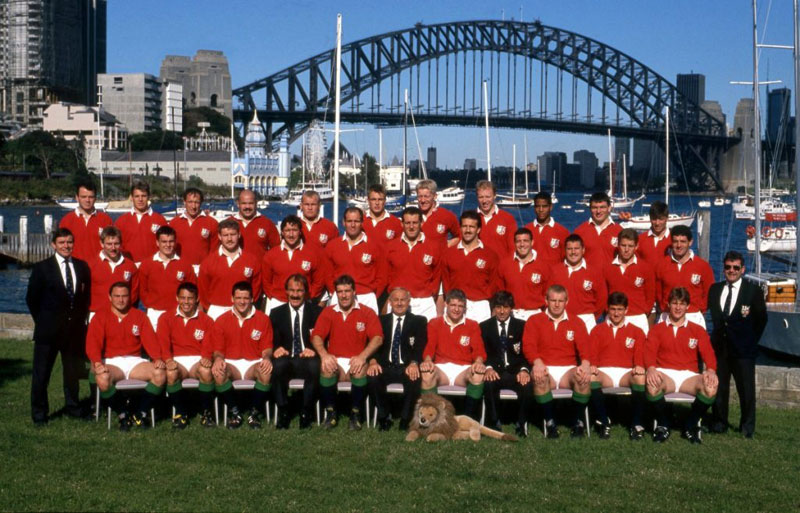
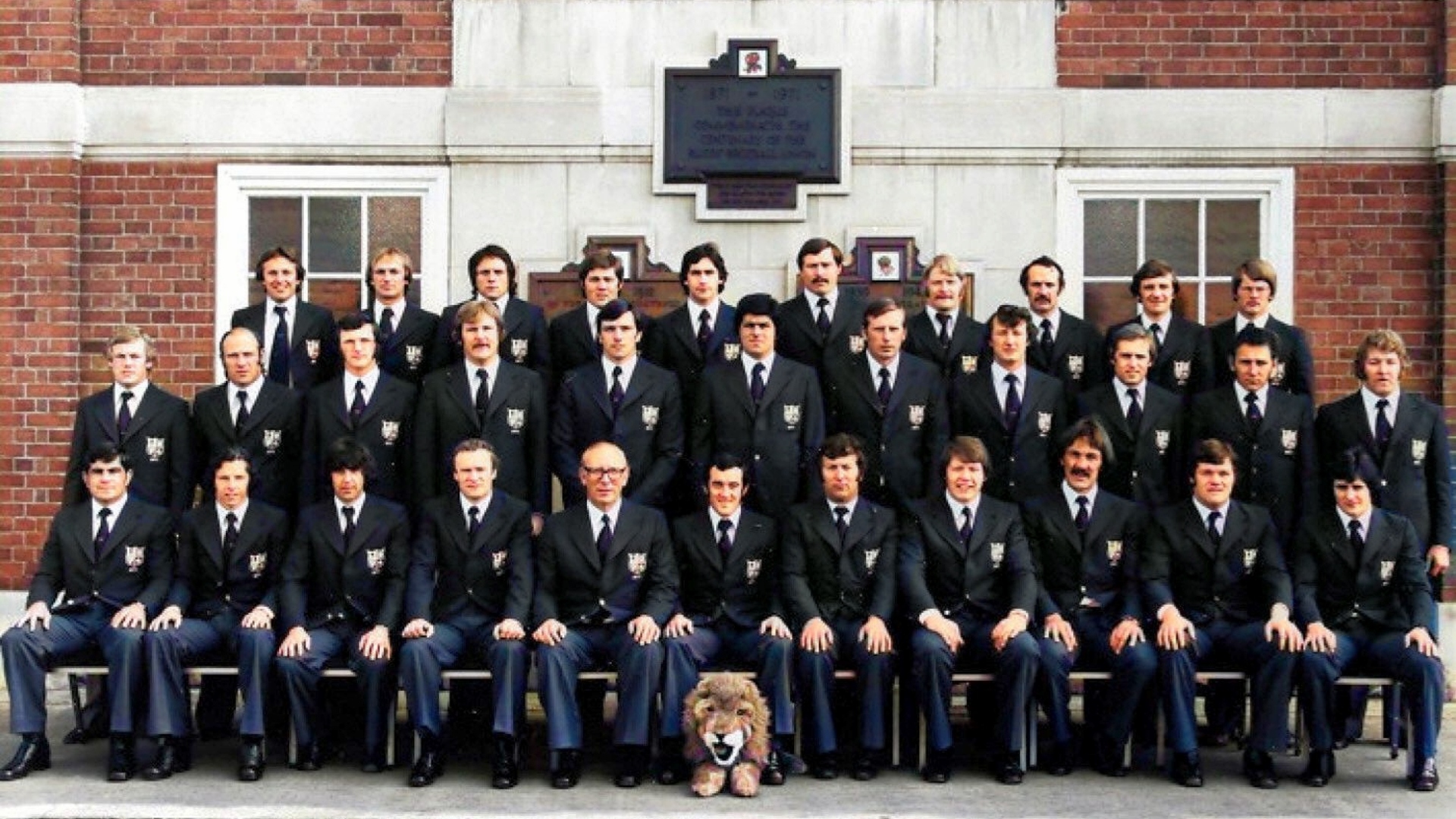 A lack of luck, some nightmare injuries, the prevailing political climate at the time and some extremely strong southern hemisphere rugby meant times were tough for the Lions between 1977 and 1986, but their passion and determination remained unquestionable.
A lack of luck, some nightmare injuries, the prevailing political climate at the time and some extremely strong southern hemisphere rugby meant times were tough for the Lions between 1977 and 1986, but their passion and determination remained unquestionable.
1977 - Lions battle valiantly
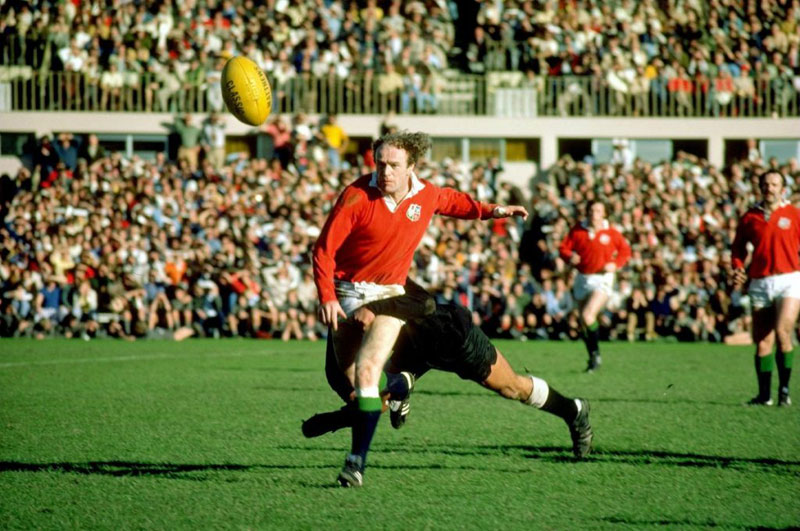 The 1977 Lions were not short of world-class resources.
Legendary 1971 captain John Dawes was Head Coach, Phil Bennett captained the Tour and alongside him he had JJ Williams, Andy Irvine, Mike Gibson – on his fifth Lions Tour - and Ian McGeechan.
The 1977 Lions were not short of world-class resources.
Legendary 1971 captain John Dawes was Head Coach, Phil Bennett captained the Tour and alongside him he had JJ Williams, Andy Irvine, Mike Gibson – on his fifth Lions Tour - and Ian McGeechan.
Forward strength
Their pack was a better unit than their All Black counterparts and throughout the Test series, they asserted their dominance at the scrum and breakdown. Their only loss outside the Test series in New Zealand came on the Tuesday before the first Test when they fell to New Zealand Universities 21-9. Before that they had beaten King Country-Wanganui 60-9 with Irvine making history after scoring five tries in the same game.The First Test
Although they were stymied by injuries to Gordon Brown and Nigel Horton, while Bill Beaumont had only recently arrived, the tourists made an encouraging start to the first Test. Brad Johnstone’s hotly-contested try and a 60-yard interception score by Grant Batty just before the break left them too much to do in the face of a crushing Wellington wind in the second half. The All Blacks led 16-12 at half-time and there the score would remain until the final whistle.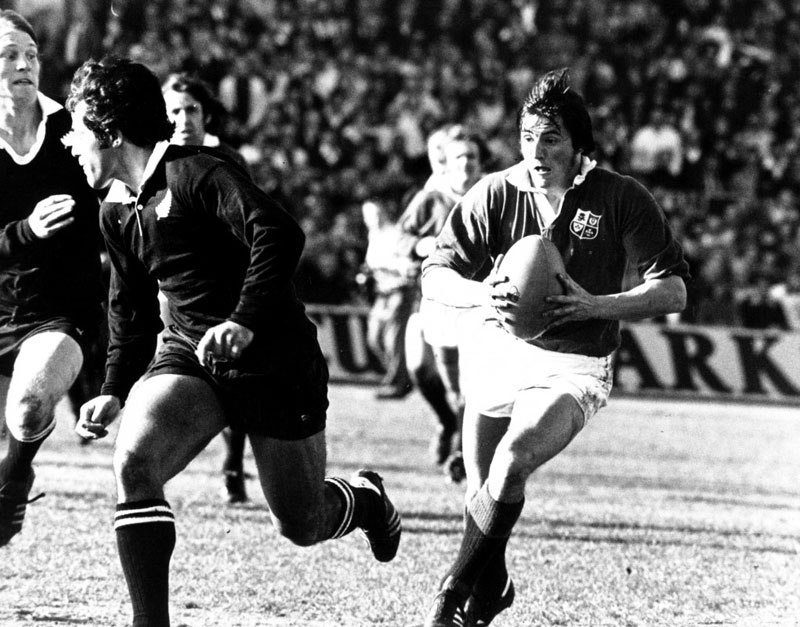 A famous victory in the Second Test was merely a roadblock on the path to a 3-1 All Blacks’ Test series victory but a legendary Lions pack kept their hopes alive for another week.
The second Test was a brutal affair but it was the Lions who emerged standing. JJ Williams' try and three Phil Bennett penalties guided them a 13-9 success and 1-1 in the Test series.
The Carisbrook pitch for the third Test was so wet, the organisers attempted to dry it out using a helicopter before the game and with the Lions missing six of their seven kicks at goal, the hosts won 19-7.
A famous victory in the Second Test was merely a roadblock on the path to a 3-1 All Blacks’ Test series victory but a legendary Lions pack kept their hopes alive for another week.
The second Test was a brutal affair but it was the Lions who emerged standing. JJ Williams' try and three Phil Bennett penalties guided them a 13-9 success and 1-1 in the Test series.
The Carisbrook pitch for the third Test was so wet, the organisers attempted to dry it out using a helicopter before the game and with the Lions missing six of their seven kicks at goal, the hosts won 19-7.
Fourth Test victory slips away
The fourth Test saw the tourists so dominant up front that the All Blacks were reduced to resorting to a three-man scrum, but again the visitors lost a match they should have won. New Zealand’s forwards coach Jack Gleeson had actually practiced the three-man shunt in training and when prop John McEldowney went off with an injury Lawrie Knight moved into the front-row and deprived the tourists of their most potent weapon. The Lions led at half-time through Doug Morgan’s score and penalty, a Bevan Wilson penalty New Zealand’s only retort. Wilson scored another penalty after half-time before Bill Osborne’s high ball led to a score for Lawrie Knight, the No.8 ran in from 15 metres to clinch a series win. Insult was added to injury in the Lions’ first ever test against Fiji in Suva, a demoralised and home-sick Lions squad losing 25-21.1980 - Injuries hit Lions hopes
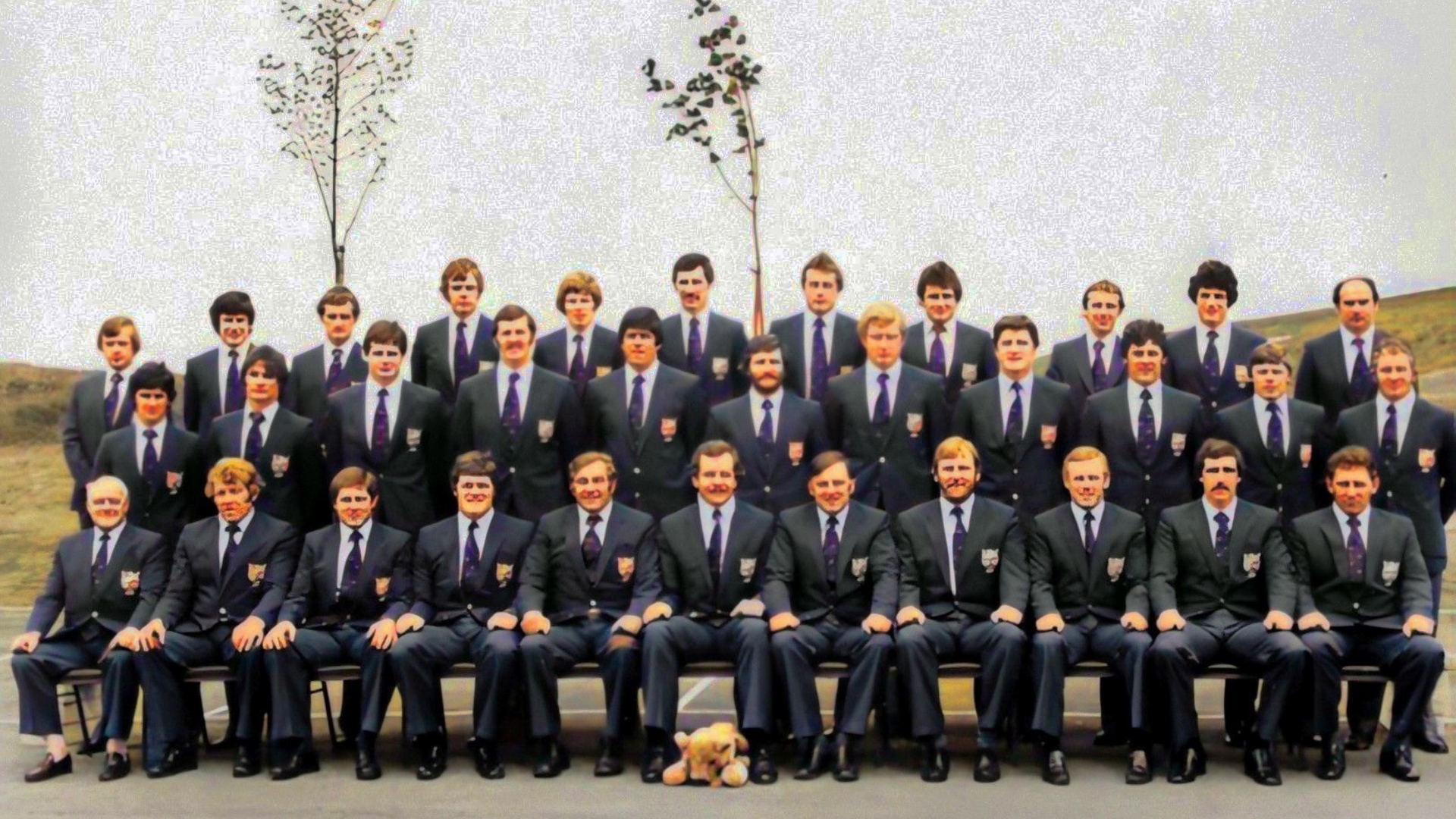
Bad luck strikes early
Injuries are part and parcel of any British & Irish Lions Tour but the 1980 tourists were unluckier than any side that came before. The coaching team of Syd Millar and Noel Murphy picked an original 30-man squad but a further eight players were called on during the Tour to fly over as reinforcements. Most of injuries occurred in the back line – the Lions used eight different half-back pairings in the first eight games of the Tour. And Bill Beaumont – the captain of the Tour after leading England to the Grand Slam earlier that year – called the rate of injuries the squad were accruing ‘frightening’. The Springboks were able to regain a measure of the pride they had lost in '74 with a 3-1 Test series victory.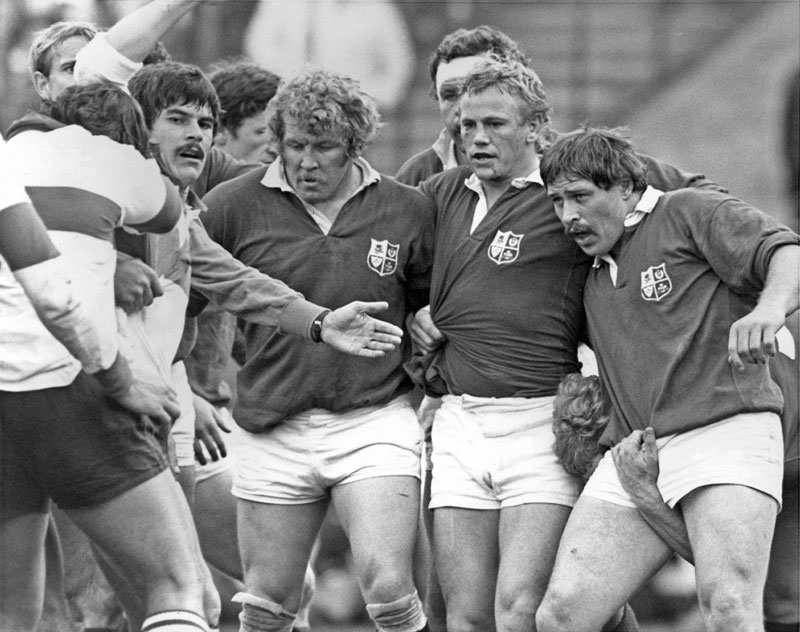
The Lions roar on regardless
The Lions won all 14 non-internationals they played – including a 37-6 win over Western Transvaal that was their biggest win since 1896 - but the Test series was just beyond them. The first Test was close, Tony Ward kicking a Lions record of 18 points in South Africa with five penalties and a drop goal but the Boks outscored the Lions five tries to one to claim a 26-22 victory. In the second Test the Boks won by a more comfortable margin than the 26-19 scoreline would suggest and the third Test in Port Elizabeth was again edged by the hosts 12-10. But Beaumont – the first English captain of the Lions since Douglas Prentice 50 years before – rallied the troops for the fourth Test in Pretoria and they claimed an impressive victory.1983 - Lions face All Blacks
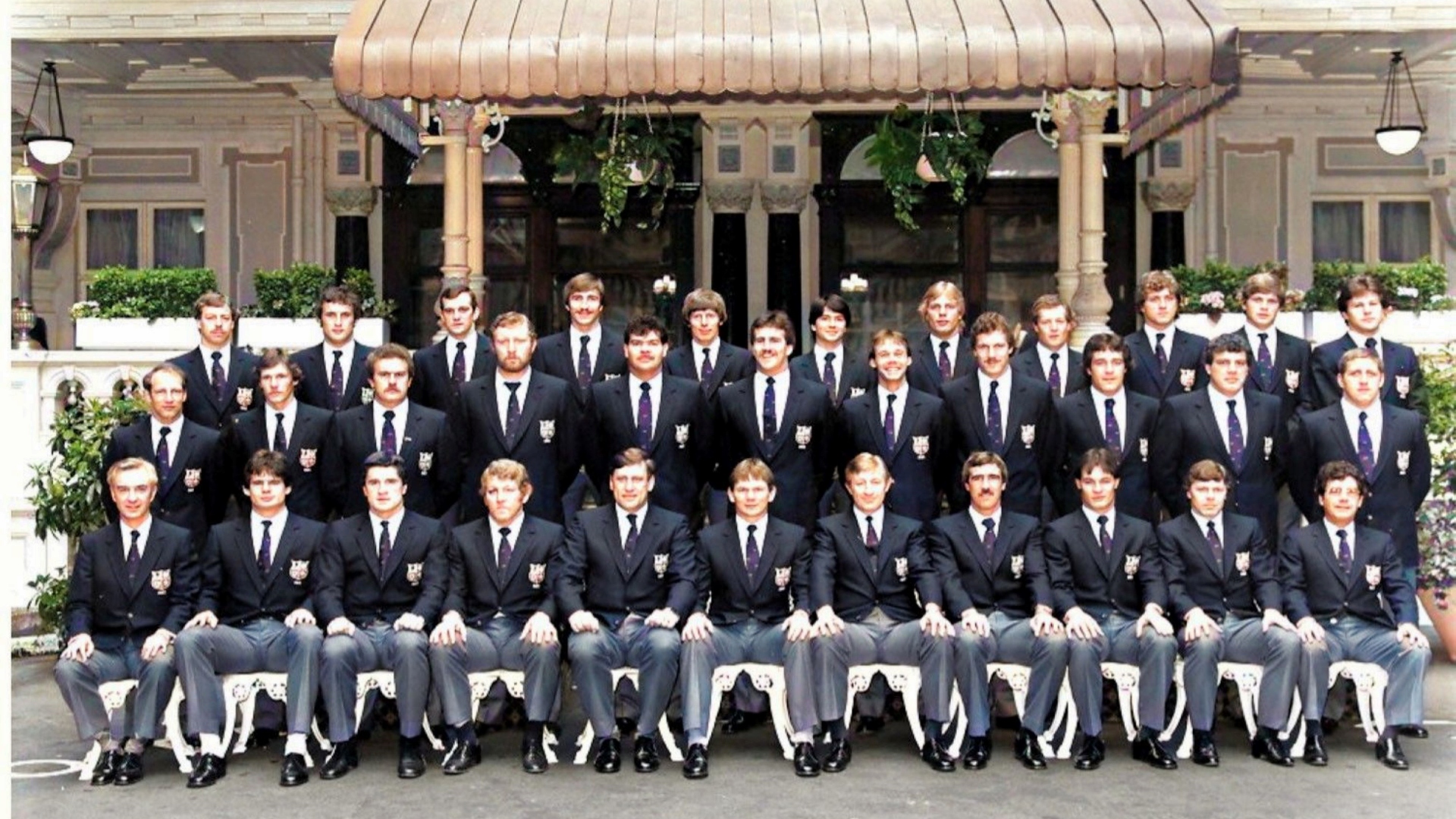 In 1983 the Lions came up against the core of an All Blacks team that would go on to dominate the 1987 World Cup on home turf.
An extremely tough Tour saw the Lions win 12 of their 18 fixtures but not a single Test victory.
The side was led by Ireland’s Triple Crown winning captain of that year, Ciaran Fitzgerald, and coached by two-time Lions tourist Jim Telfer.
Willie John McBride managed the Tour having played 17 Lions Tests in his own career and famously leading the all-conquering 1974 Tour to South Africa.
In 1983 the Lions came up against the core of an All Blacks team that would go on to dominate the 1987 World Cup on home turf.
An extremely tough Tour saw the Lions win 12 of their 18 fixtures but not a single Test victory.
The side was led by Ireland’s Triple Crown winning captain of that year, Ciaran Fitzgerald, and coached by two-time Lions tourist Jim Telfer.
Willie John McBride managed the Tour having played 17 Lions Tests in his own career and famously leading the all-conquering 1974 Tour to South Africa.
Injuries hamper Lions progress
But while McBride’s Lions playing career was one of the best of all time; the 1983 Tour is more often remembered as one of a heavy itinerary, an incredibly long injury list and a very strong All Black side. Ireland’s Donal Lenihan was forced to withdraw with a hernia problem but he was able to join the party later as one of seven replacements and key Welsh trio Terry Holmes, Jeff Squire and Ian Stephens were all forced home. Despite the series 4-0 defeat, Peter Winterbottom came out of the Tour as one of the star performers for his high tackle rate and for the sheer volume of grass he covered from the back row.Early success
With six warm-up matches in the first three weeks of the Tour, Lions enjoyed plenty of early success with five wins and just a single defeat. They took that form straight into the opening Test at Lancaster Park in Christchurch on June 4 and led 9-6 at half time. In the second period, New Zealand’s Mark Shaw scored the only try of the game and Allan Hewson knocked over a late drop goal from 45m to give the hosts a narrow 16-12 victory.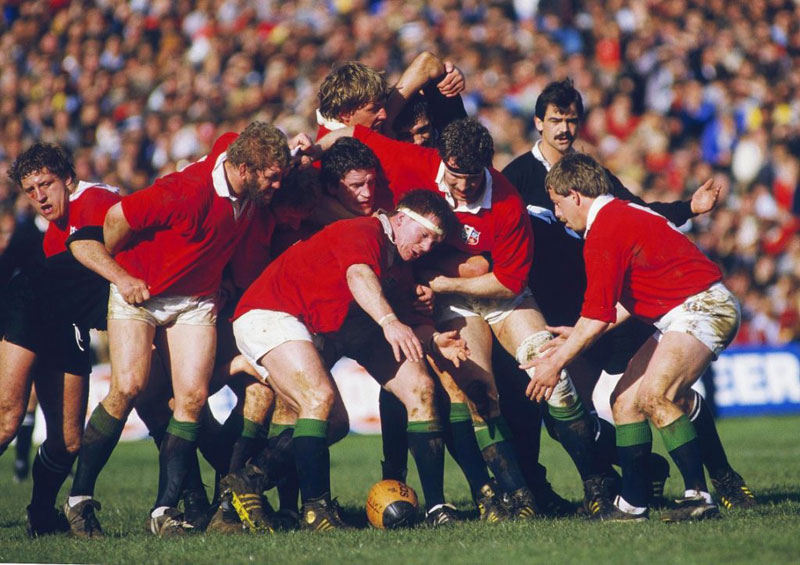 Ollie Campbell, who had helped orchestrate Ireland’s back-to-back Five Nations victories in 1982 and 1983, kicked all of the Lions points in Christchurch.
Campbell was the definition of reliability throughout the Tour, knocking over 77 per cent of his kicks at the posts during the Tour, 22/26 penalties and 18/26 conversions.
The Lions squad bounced back with three convincing wins in Tour fixtures against West Coast, Southland and Wairarapa Bush as they stepped up their preparations for the second Test.
And the Lions looked clear favourites at half time in the second Test at Athletic Park in Wellington after conceding just nine first-half points while playing into gale force winds.
But even with the wind in the Lions favour, the All Blacks refused to concede a single point in the second period.
Fitzgerald's men outscored the All Blacks by two tries to one in the third Test in Dunedin but were still edged out 15-8, as the Kiwis took an unassailable 3-0 lead in the four-match series.
After battling to three narrow losses, there was little the tourists could do when New Zealand came out firing in the final Test at Auckland as Stu Wilson scored a hat-trick to secure a 4-0 series win and send the Lions home disappointed.
Ollie Campbell, who had helped orchestrate Ireland’s back-to-back Five Nations victories in 1982 and 1983, kicked all of the Lions points in Christchurch.
Campbell was the definition of reliability throughout the Tour, knocking over 77 per cent of his kicks at the posts during the Tour, 22/26 penalties and 18/26 conversions.
The Lions squad bounced back with three convincing wins in Tour fixtures against West Coast, Southland and Wairarapa Bush as they stepped up their preparations for the second Test.
And the Lions looked clear favourites at half time in the second Test at Athletic Park in Wellington after conceding just nine first-half points while playing into gale force winds.
But even with the wind in the Lions favour, the All Blacks refused to concede a single point in the second period.
Fitzgerald's men outscored the All Blacks by two tries to one in the third Test in Dunedin but were still edged out 15-8, as the Kiwis took an unassailable 3-0 lead in the four-match series.
After battling to three narrow losses, there was little the tourists could do when New Zealand came out firing in the final Test at Auckland as Stu Wilson scored a hat-trick to secure a 4-0 series win and send the Lions home disappointed.
1986 - The Lions take on the Best of the Rest
Owing to the 1986 Tour to South Africa being cancelled for political reasons, the Lions played a one-off Test match versus a Rest of the World XV in the Welsh capital, as part of the then IRFB (now World Rugby) centenary celebrations. This match was officially recognised as a Lions fixture and all players in the match were allocated a Lions player number. In 2018 they were also awarded caps as part of the 1888 Club, alongside all other Lions players. The Lions were managed by the great Clive Rowlands, coached by Mick Doyle and captained by Colin Deans. The Test took place on a Wednesday in April at Cardiff Arms Park, only the second time in the venerable history of the Lions that they played on home soil. 21 players were selected for the clash against a mouth-watering World XV. Their backline included Wallaby stars on the rise Michael Lynagh and Nick Farr-Jones, French masters Serge Blanco and Patrice Estève with Wayne Smith pulling the strings at No.10. The power of Simon Poidevin and Murray Mexted up front made them a serious opposition. But the Lions were packed with class acts as well. The emerging Gavin Hastings would play full back with Rory Underwood on one wing and Trevor Ringland on the other. Brendan Mullin and John Devereux were in midfield while John Rutherford and Rob Jones formed the half-back pairing. Deans skippered from hooker either side of Jeff Whitefoot and Des Fitzgerald while Donal Lenihan and Wade Dooley made up the second row. In the back row John Beattie and John Jeffrey dovetailed with Nigel Carr.How the game unfolded
The Test itself ended in defeat, the Lions downed 15-7 in a match that fell victim to the elements with a storm roaring in shortly after kick-off. Farr-Jones’ fortuitous early score was converted by Lynagh, lining up at inside centre after a breakthrough international season as part of the Wallabies’ Grand Slam tour. But the Lions came roaring back, Beattie crossing for a score and Hastings adding a penalty and they led 7-6 at the interval. Unfortunately, in keeping with the theme of the era, the Lions were hit by injury thereafter. Rutherford went off with a broken nose and Dooley soon followed and slowly the Rest turned the tide. Lynagh slotted a penalty before Poidevin went over in the final ten minutes to put the World team clear and the Lions could not muster a response. It ended in defeat but the seeds of success had been sown for 1989 and Australia, the first Lions Tour in six years.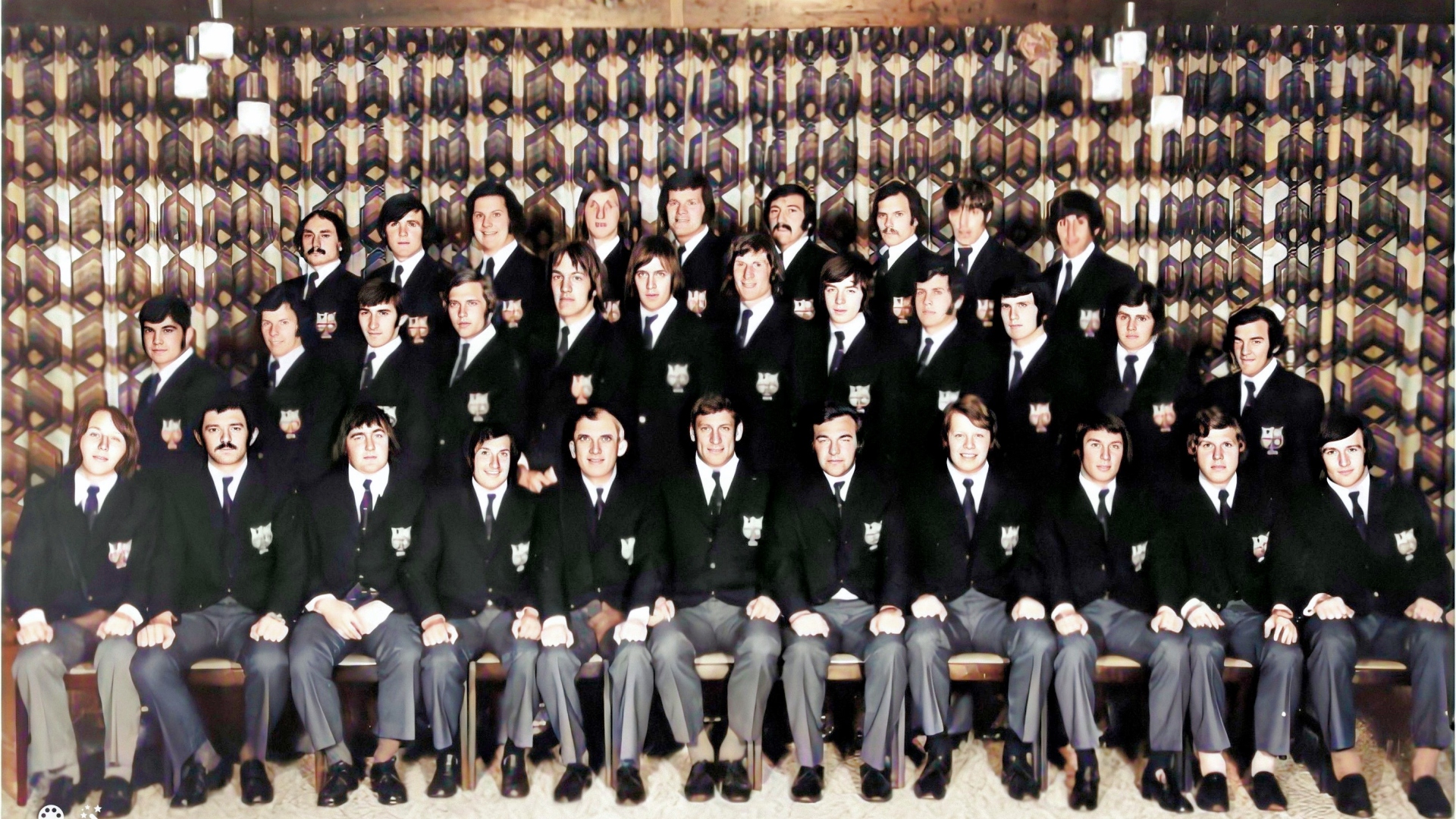 The Lions followed up their first series triumph in New Zealand three years earlier with another incredible Tour which saw them win 21 of their 22 fixtures, including a 3-0 Test Series success.The ‘Invincibles’ - as they have become known since - won 21 matches with the other, the fourth Test, finishing in a 13-13 draw when the series against their hosts was already sewn up. The high expectations after the 1971 success were met and surpassed in emphatic style as the class of 1974 became the only Lions team to ever go a whole Tour, which back then lasted three months, undefeated.
Managed by Welshman Alun Thomas, with Syd Millar as coach, it is thought the Lions, captained by Willie John McBride, were so successful because of the conscious decision to fight fire with fire. In previous Tours key players had been lost to injury in matches against provincial sides, and the Lions camp deemed this a deliberate tactic with Test matches looming.
The Lions followed up their first series triumph in New Zealand three years earlier with another incredible Tour which saw them win 21 of their 22 fixtures, including a 3-0 Test Series success.The ‘Invincibles’ - as they have become known since - won 21 matches with the other, the fourth Test, finishing in a 13-13 draw when the series against their hosts was already sewn up. The high expectations after the 1971 success were met and surpassed in emphatic style as the class of 1974 became the only Lions team to ever go a whole Tour, which back then lasted three months, undefeated.
Managed by Welshman Alun Thomas, with Syd Millar as coach, it is thought the Lions, captained by Willie John McBride, were so successful because of the conscious decision to fight fire with fire. In previous Tours key players had been lost to injury in matches against provincial sides, and the Lions camp deemed this a deliberate tactic with Test matches looming.
The 99 Call
So in 1974 they adopted the '99 call', a policy where all members of the team would gather to retaliate if they felt the opposition were being over physical. The Tour began in earnest on May 15, 1974, with the opening game against Western Transvaal at Olen Park, in Potchefstroom, with The Lions romping away to a 59-13 victory.Gordon Brown started the scoring in the first five minutes and the Lions finished the game, which set the tone for the entire Tour, with nine tries.The Battle of Boet Erasmus Stadium
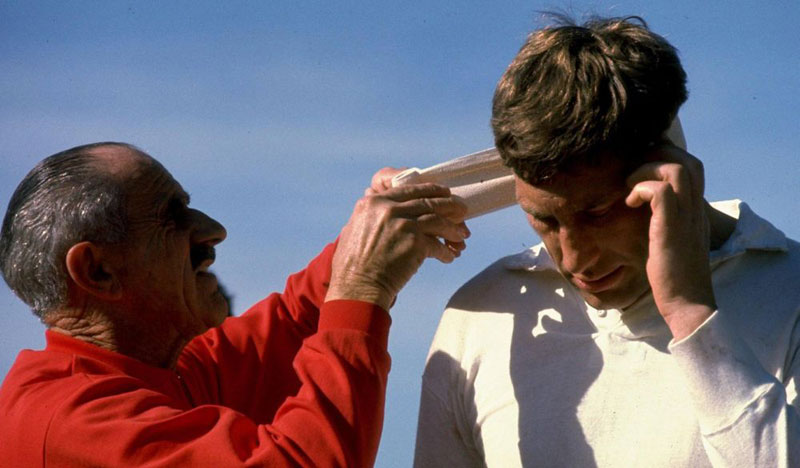
After winning the first two Tests 12-3 then 28-9 in Cape Town and Pretoria respectively, the Lions took on the Springboks on July 13 in what was later dubbed the ‘battle of Boet Erasmus Stadium’.
The game is best remembered for its physicality but there was some great rugby played – some of the best of the entire Tour in fact.
Having ridden out the storm of the Boks’ initial assault, Gordon Brown bundled over from a lineout and the Lions went in 7-3 ahead at the break. After the interval they really turned the screw and JJ Williams bagged a double as the Port Elizabeth crowd were treated to a Lions masterclass. The game was halted while officials and players from both sides clawed through the mud to find Johan de Bruyn's glass eye and after Brown died in 2001, aged 53, de Bruyn presented his widow with the glass eye in a specially made trophy. The Lions had shown in no uncertain terms they could not be bullied and two tries from wing JJ Williams, plus a score from man of the hour ‘Broon frae Troon’, wrapped up a 26-9 victory and, with it, the series.Aiming for a series whitewash
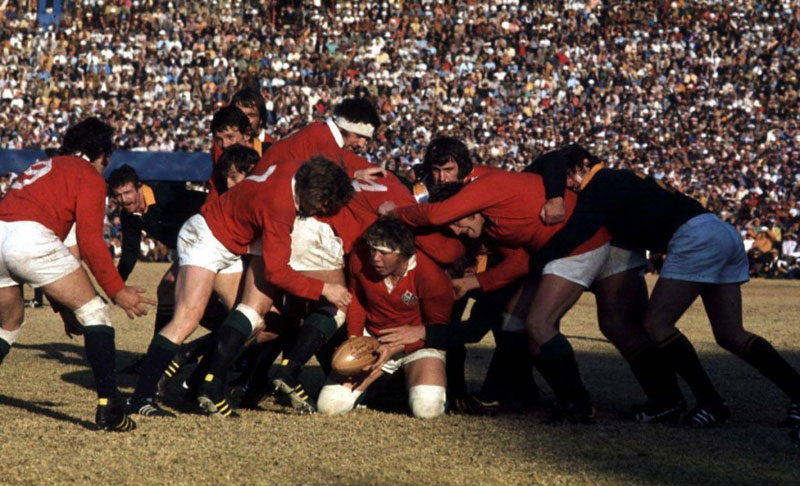 The tourists then completed their clean sweep of victories against provincial opponents so all that remained for the Lions was to get up for one final game, the fourth Test in Johannesburg on July 27th. The Test was a close contest which saw Jackie Snyman put the hosts ahead after only five minutes but Roger Uttley replied with a try which was converted by Phil Bennett. Snyman restored parity with another penalty but it was The Lions who led 10-6 when the half-time whistle blew after Andy Irvine crossed the whitewash. Peter Cronje made it 10-10 when he crossed and the Lions could have lost their unbeaten record when Snyman struck his third penalty with just ten minute remaining. But Irvine stepped up with four minutes to go to level the game and secure The Lions the only unbeaten Tour in the post-war era.
The tourists then completed their clean sweep of victories against provincial opponents so all that remained for the Lions was to get up for one final game, the fourth Test in Johannesburg on July 27th. The Test was a close contest which saw Jackie Snyman put the hosts ahead after only five minutes but Roger Uttley replied with a try which was converted by Phil Bennett. Snyman restored parity with another penalty but it was The Lions who led 10-6 when the half-time whistle blew after Andy Irvine crossed the whitewash. Peter Cronje made it 10-10 when he crossed and the Lions could have lost their unbeaten record when Snyman struck his third penalty with just ten minute remaining. But Irvine stepped up with four minutes to go to level the game and secure The Lions the only unbeaten Tour in the post-war era. 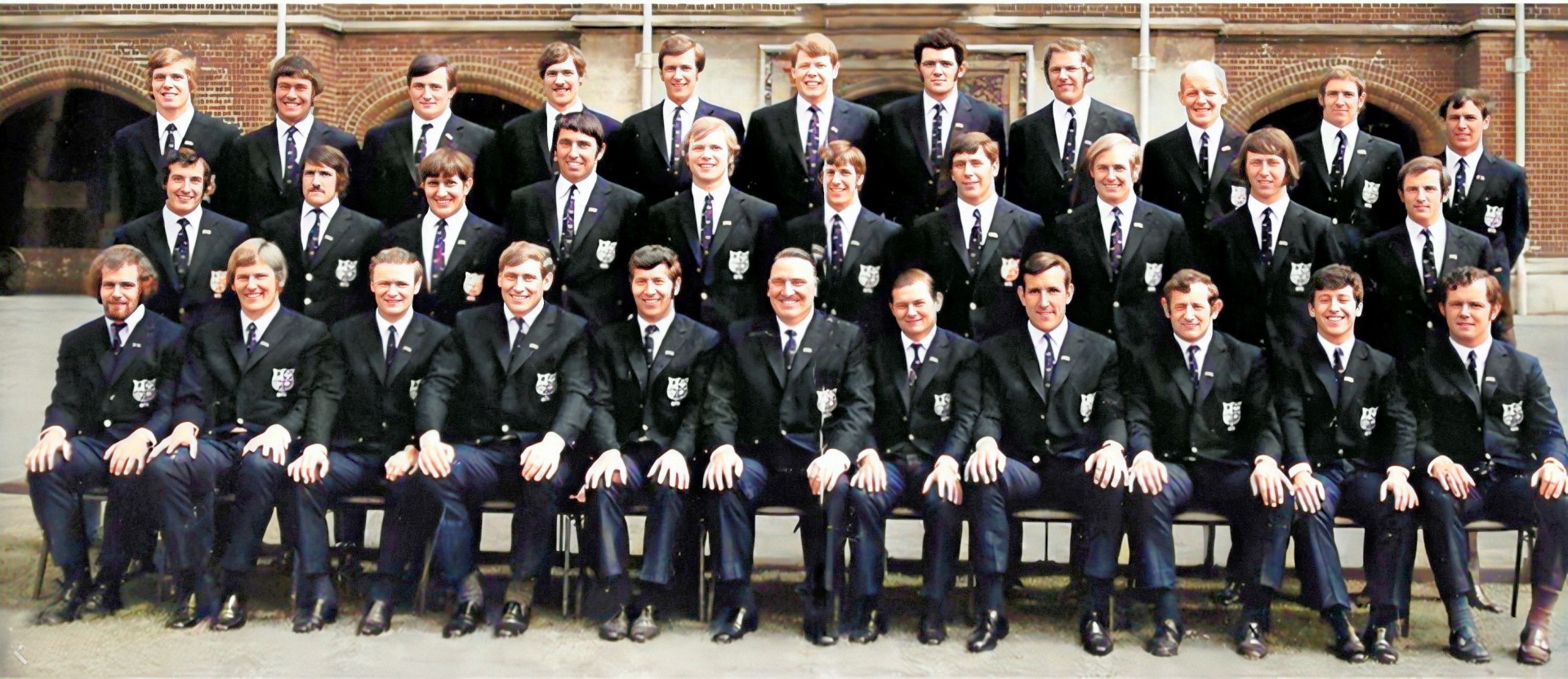 In 1971, the Lions got it right. After almost three-quarters of a century attempting to win a series in New Zealand they did it, and remain, to date, the only Lions side to ever do so.
The team captained by John Dawes, managed by Doug Smith and coached by Carwyn James, became history makers against an All Black side that had won all four Tests against the Lions in 1966 and only lost one game on their Tour of Europe a year later.
In 1971 the backbone of New Zealand's great side remained – Colin Meads, Sid Going and Ian Kirkpatrick to name but three.
The Lions selectors made a bold decision in appointing James, who had never been asked to coach his native Wales. But the progressive, innovative thinking that had held him back at home proved the key to creating possible the greatest ever Lions side.
In 1971, the Lions got it right. After almost three-quarters of a century attempting to win a series in New Zealand they did it, and remain, to date, the only Lions side to ever do so.
The team captained by John Dawes, managed by Doug Smith and coached by Carwyn James, became history makers against an All Black side that had won all four Tests against the Lions in 1966 and only lost one game on their Tour of Europe a year later.
In 1971 the backbone of New Zealand's great side remained – Colin Meads, Sid Going and Ian Kirkpatrick to name but three.
The Lions selectors made a bold decision in appointing James, who had never been asked to coach his native Wales. But the progressive, innovative thinking that had held him back at home proved the key to creating possible the greatest ever Lions side.
A huge pool of talent
But for all the talent James had at his disposal – including Gareth Edwards, Mervyn Davies, Gerald Davies, JPR Williams etc - one player still stood out.
Barry John attained superstar status on the Tour with the range of his kicking repertoire and the grace with which he ghosted through the walls of defence ranged against him. His 188 points remains a Lions record for one Tour.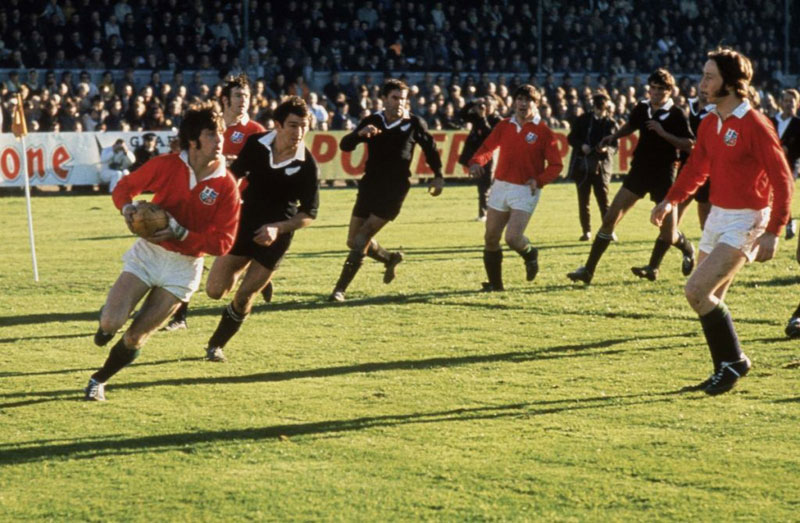 This truly was the Tour on which the Prince became ‘the King’ and considering he had retired from the game altogether a year later – it was in front of an adoring All Black crowd that his legend was definitively secured.
Despite the opposition, the Lions only lost one game, after an initial defeat warm-up defeat to Queensland, on that entire Tour.
The first indication on Tour that these Lions might do something special came in the match against Wellington. A traditional powerhouse of the New Zealand game – Wellington were powerless in the face of the Lions onslaught as they destroyed their opponents 47-9.
John was given no undue protection by coach Carwyn James on the Tour – he played 17 games in all – but was thankfully rested for a brutal clash with Canterbury before the first Test.
They had to knuckle down to claim victory in that game – that saw both first-choice props Ray McLoughlin and Sandy Carmichael sent home with injury.
This truly was the Tour on which the Prince became ‘the King’ and considering he had retired from the game altogether a year later – it was in front of an adoring All Black crowd that his legend was definitively secured.
Despite the opposition, the Lions only lost one game, after an initial defeat warm-up defeat to Queensland, on that entire Tour.
The first indication on Tour that these Lions might do something special came in the match against Wellington. A traditional powerhouse of the New Zealand game – Wellington were powerless in the face of the Lions onslaught as they destroyed their opponents 47-9.
John was given no undue protection by coach Carwyn James on the Tour – he played 17 games in all – but was thankfully rested for a brutal clash with Canterbury before the first Test.
They had to knuckle down to claim victory in that game – that saw both first-choice props Ray McLoughlin and Sandy Carmichael sent home with injury.
Test Series success
In came Sean Lynch and Ian ‘Mighty Mouse’ McLauchlan for the opening Test and – despite being under the cosh for long periods – they prevailed 9-3. A chargedown try from McLauchlan and two penalties from John – who put on a tactical kicking masterclass – proved the difference. They lost the second Test 22-12 but refused to panic, as they knew they had been way below their best. They proved as much in the third Test, in which they produced an outstanding performance controlled by the regal John, who contributed a try, two conversions and a drop goal to a 13-3 victory, with Gerald Davies scoring the visitors’ other try. Tension peaked in the final Test, in which the Lions needed to avoid defeat to win the series. It wasn't a classic, but the 14-14 draw was all the tourists needed. A Peter Dixon try, two penalties and a conversion from the boot of John, topped by a 45-metre drop goal from JPR – the only one the full-back made in his career and allegedly owing much to a pre-match bet – proved sufficient for the Lions to make history.Heroes back home
The Lions returned home blissfully unaware of the stir they had caused – but they had a better idea when the tourists won the BBC Sports Personality Team of the Year award that Christmas. And if they were not legends before – they soon secured it with their on-air rendition of their Tour song – Sloop John B by the Beach Boys – that became a regular fixture at rugby clubs up and down the home nations.1950 - Touring returns after 12-year break
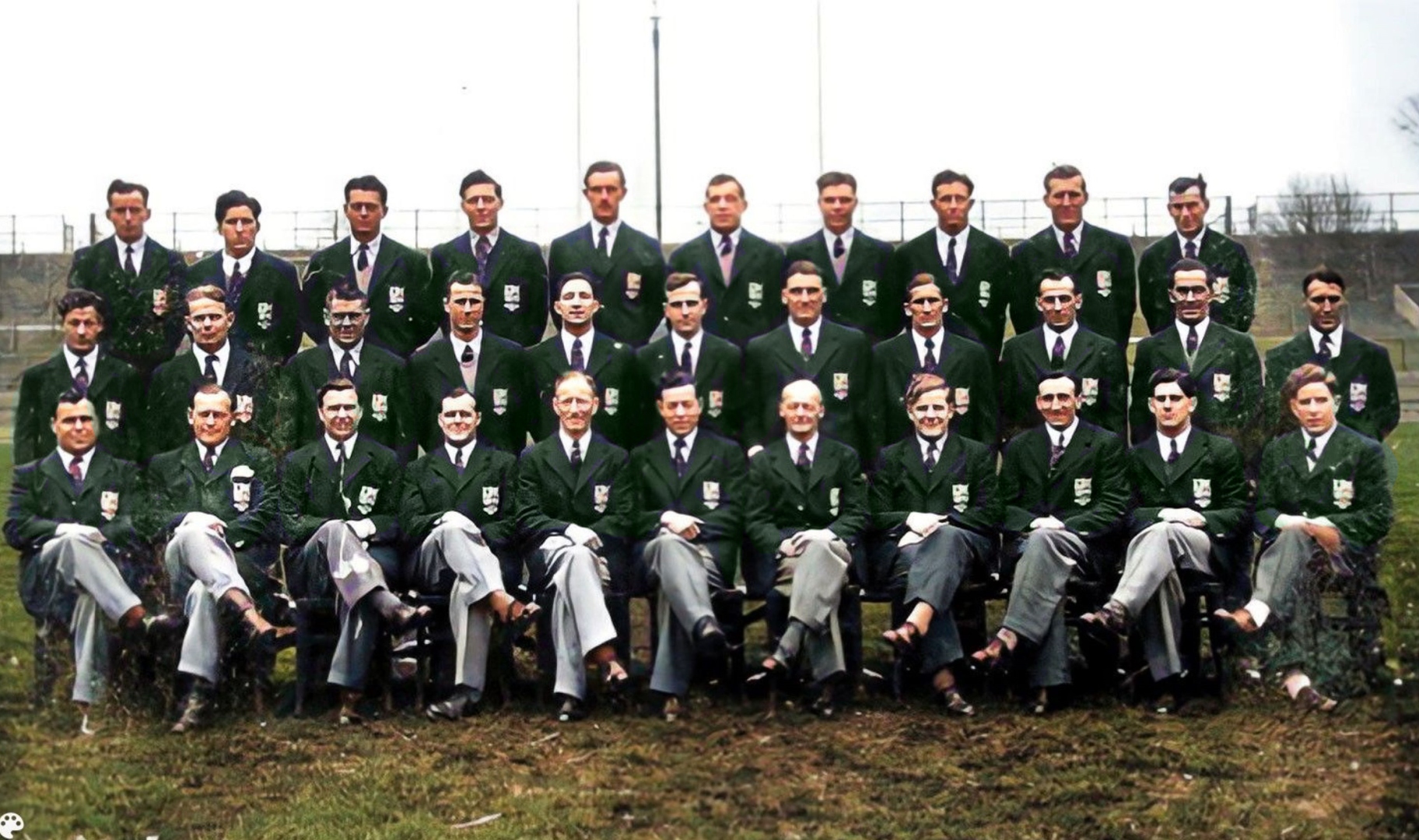 As the world rebuilt after World War II, so too were the Lions swept up in the mood of transformation.
Once upon a time the red jersey, white shorts, and blue socks with a green turnover were not a staple of a Lions Tour but in 1950, that combination became an institution that has remained untouched.
It was also the year in which the Lions moniker was officially claimed as their own and, in another first, every player who toured New Zealand and Australia was an international for one of the four home countries.
One thing that remained constant was the close nature of The Lions Test series with all four of the Tests against New Zealand being incredibly hard fought.
As the world rebuilt after World War II, so too were the Lions swept up in the mood of transformation.
Once upon a time the red jersey, white shorts, and blue socks with a green turnover were not a staple of a Lions Tour but in 1950, that combination became an institution that has remained untouched.
It was also the year in which the Lions moniker was officially claimed as their own and, in another first, every player who toured New Zealand and Australia was an international for one of the four home countries.
One thing that remained constant was the close nature of The Lions Test series with all four of the Tests against New Zealand being incredibly hard fought.
A Test series on a knife edge
But for a late try from Ron Elvidge, the Lions would have won the first Test. Lewis Jones’ pace saw him score in the corner after Jack Kyle had scored a superb breakaway try of his own, to leave the score standing at 9-3 deep in the second half. Bob Scott nudged New Zealand back into contention before inside centre Elvidge scraped a 9-9 draw. In Christchurch a fortnight later, New Zealand sealed an 8-0 win against a Lions side severely hampered by the loss of inspirational loose forward Bill McKay to a broken nose and concussion.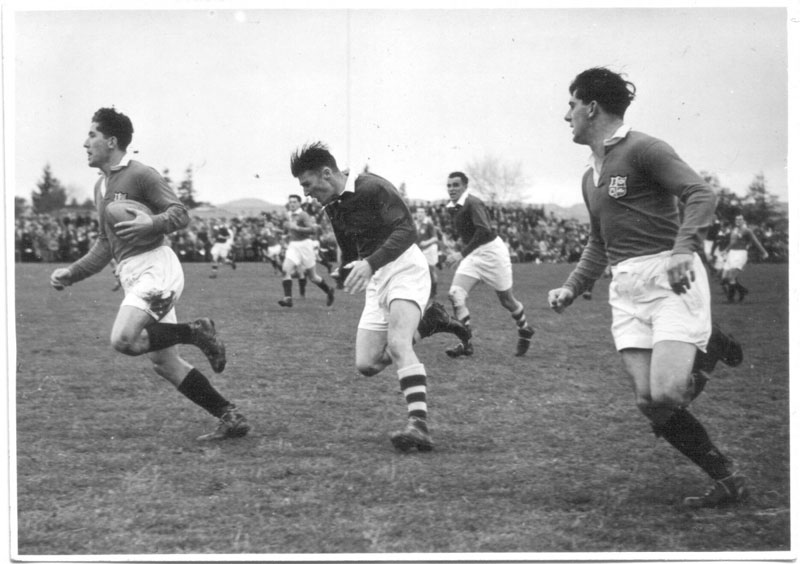 The third Test was again an incredibly close-run thing and the Lions, shorn of Jones and captain Mullen, led through a John Robins penalty at the half only to suffer another turnaround by 6-3.
In the fourth and final Test, the Lions nearly mounted a comeback themselves. The All Blacks carried an 11-3 lead early in the second half before the tourists showed their claws.
From a scrum on their own line, the Lions marched up the field before Lewis Jones intercepted a Kyle pass intended for Williams.
It seemed to catch friend and foe alike off-guard, but Jones found his namesake Ken who then jinked his way to one of the best tries ever seen at Eden Park.
Williams ever so nearly ended the Test series on a high note, but the stand-in skipper was brought down by Peter Henderson mere inches from the line – bringing to an end one of the truly great Lions clashes.
The third Test was again an incredibly close-run thing and the Lions, shorn of Jones and captain Mullen, led through a John Robins penalty at the half only to suffer another turnaround by 6-3.
In the fourth and final Test, the Lions nearly mounted a comeback themselves. The All Blacks carried an 11-3 lead early in the second half before the tourists showed their claws.
From a scrum on their own line, the Lions marched up the field before Lewis Jones intercepted a Kyle pass intended for Williams.
It seemed to catch friend and foe alike off-guard, but Jones found his namesake Ken who then jinked his way to one of the best tries ever seen at Eden Park.
Williams ever so nearly ended the Test series on a high note, but the stand-in skipper was brought down by Peter Henderson mere inches from the line – bringing to an end one of the truly great Lions clashes.
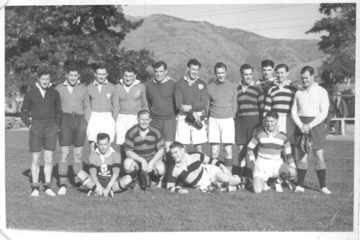
A glorious finish
After the completion of that epic adventure, the Lions travelled to Australia where they made light work of the Test team. Lewis Jones scored 16 points – including a 50-yard drop-goal – as Australia were swiftly dispatched 19-6 in the first Test at the Gabba. The Lions were irresistible in the second Test as well, Jimmy Nelson scoring a try-double in a 24-3 triumph in front of an SCG crowd of 25,000. After three weeks they were finally back on the ship, though did stretch their legs with a game against Ceylon – now Sri Lanka – while travelling back through the Suez Canal.1955 - An epic in Africa
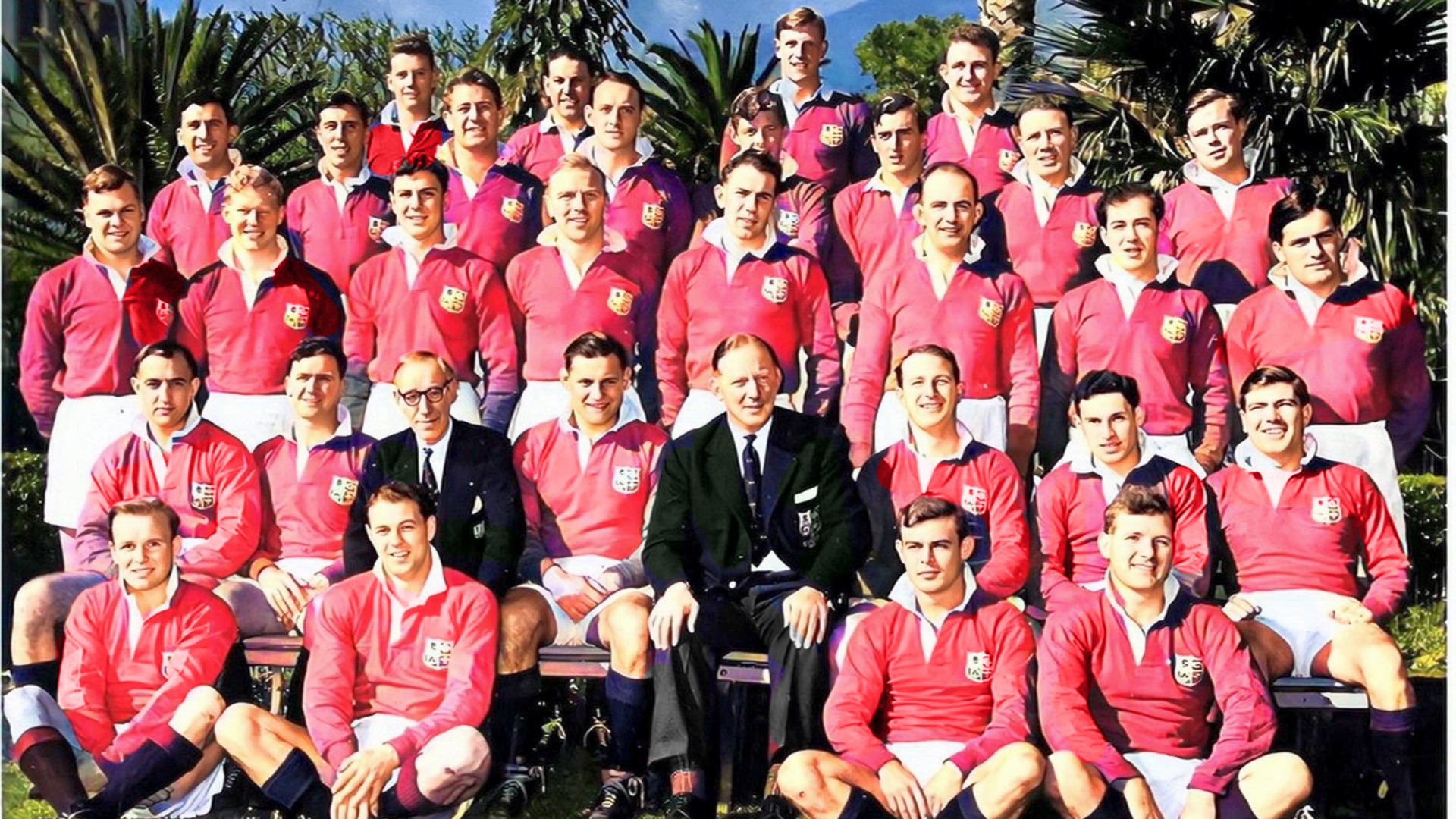 The 1955 Lions were the first to travel by air and although they drew the four Test series against South Africa 2-2, they certainly flew into the hearts of all who met them.
The decision to travel by plane – although it was a propeller plane rather than a jet engine – shortened the journey to South Africa by a month.
In all it took 36 hours with a number of stop offs in Zurich, Rome, Cairo, Khartoum, Nairobi, Entebbe and finally Johnannesburg.
A classic series
Such was the expectation of the contest that home newspaper the Rand Daily Mail commandeered the side led by Ireland’s Robin Thompson as “the greatest team ever to visit South Africa” in a headline. That was before a game was even played.
An epic quartet of Test matches, culminating in a 2-2 draw in South Africa, was understandably labelled as the ultimate Tour. For the first time since the turn of the century, the Lions avoided defeat in Africa.
A determined series, 25 matches in all, produced the style of rugby attracting the jam-packed home fans, endearing their visitors for an almighty welcome from the moment they touched down.
South Africa had not lost a Test series for nearly 60 years, yet were forced to settle for a shared series, the first tied Tour involving the Lions - there would not be another until 2017 in New Zealand.
More than 95,000 packed into Ellis Park, a then world record for a rugby union international, as the Lions edged a nail-biter 23-22.
Trailing 11-8 at half-time, the Lions lost Reg Higgins through injury, forced into playing with 14 men for large parts of the second half.
But Morgan’s jinking run set them on their way before O’Reilly and a fortuitous bounce helped Greenwood touch down a fifth try for the visitors, four of which were converted by Scotland’s Angus Cameron.
But South Africa roared back, fighting to within one point before full-back Jack van der Schyff stepped up for one of the most famous kicks in union history. It slipped wide, sending the Lions into euphoria and a 1-0 lead.
The second Test was not quite so narrow, as the hosts turned on the style a fortnight later in Cape Town to win 25-9.
All square with two to play
In the third Test, Butterfield kicked a first-half drop-goal – which he later claimed to be the only drop-goal in his career – while Cameron’s penalty put the tourists 6-0 to the good early in the second half.
Centre Butterfield also crossed for the only try of the game, the one that put the Lions a score clear, a lead they never relinquished as they left Loftus Versfeld 9-6 victors, 2-1 up with one to play.
The Lions lost the final Test in Port Elizabeth 22-8.
The 1955 Lions were the first to travel by air and although they drew the four Test series against South Africa 2-2, they certainly flew into the hearts of all who met them.
The decision to travel by plane – although it was a propeller plane rather than a jet engine – shortened the journey to South Africa by a month.
In all it took 36 hours with a number of stop offs in Zurich, Rome, Cairo, Khartoum, Nairobi, Entebbe and finally Johnannesburg.
A classic series
Such was the expectation of the contest that home newspaper the Rand Daily Mail commandeered the side led by Ireland’s Robin Thompson as “the greatest team ever to visit South Africa” in a headline. That was before a game was even played.
An epic quartet of Test matches, culminating in a 2-2 draw in South Africa, was understandably labelled as the ultimate Tour. For the first time since the turn of the century, the Lions avoided defeat in Africa.
A determined series, 25 matches in all, produced the style of rugby attracting the jam-packed home fans, endearing their visitors for an almighty welcome from the moment they touched down.
South Africa had not lost a Test series for nearly 60 years, yet were forced to settle for a shared series, the first tied Tour involving the Lions - there would not be another until 2017 in New Zealand.
More than 95,000 packed into Ellis Park, a then world record for a rugby union international, as the Lions edged a nail-biter 23-22.
Trailing 11-8 at half-time, the Lions lost Reg Higgins through injury, forced into playing with 14 men for large parts of the second half.
But Morgan’s jinking run set them on their way before O’Reilly and a fortuitous bounce helped Greenwood touch down a fifth try for the visitors, four of which were converted by Scotland’s Angus Cameron.
But South Africa roared back, fighting to within one point before full-back Jack van der Schyff stepped up for one of the most famous kicks in union history. It slipped wide, sending the Lions into euphoria and a 1-0 lead.
The second Test was not quite so narrow, as the hosts turned on the style a fortnight later in Cape Town to win 25-9.
All square with two to play
In the third Test, Butterfield kicked a first-half drop-goal – which he later claimed to be the only drop-goal in his career – while Cameron’s penalty put the tourists 6-0 to the good early in the second half.
Centre Butterfield also crossed for the only try of the game, the one that put the Lions a score clear, a lead they never relinquished as they left Loftus Versfeld 9-6 victors, 2-1 up with one to play.
The Lions lost the final Test in Port Elizabeth 22-8.
1959 - Winning hearts and minds
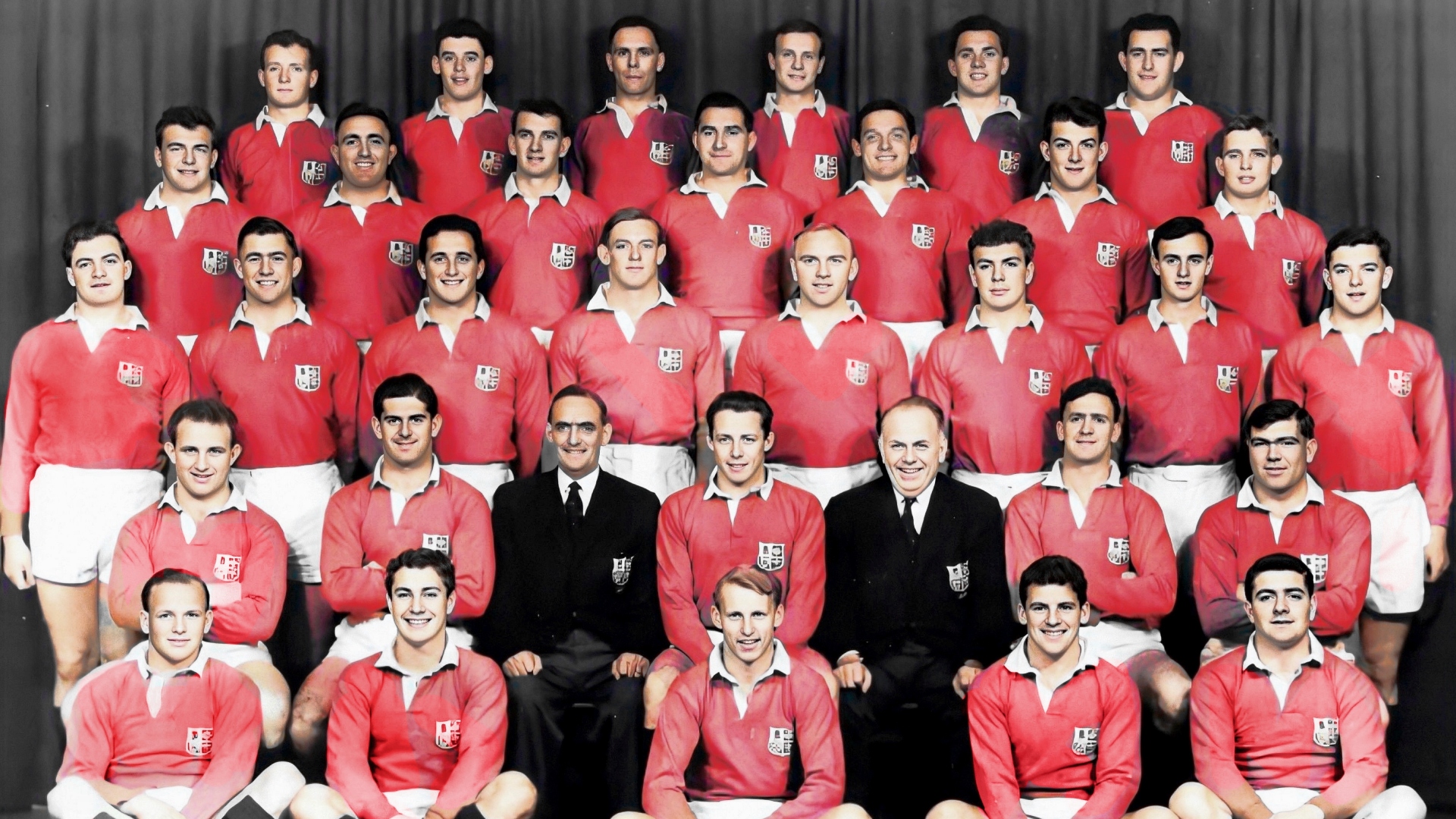 They may not have returned from New Zealand with the Test series victory they craved – but in the battle for the hearts and minds of the Kiwi public the 1959 British & Irish Lions were serial winners.
Led by manager Alf Wilson and captained by Ireland hooker Ronnie Dawson – the Lions brand of attacking rugby caught the eye throughout the Tour that began in Australia.
They scored more points than any other Lions team – 842 in 33 games, 25 of which were in New Zealand, six in Australia and two in Canada.
They may not have returned from New Zealand with the Test series victory they craved – but in the battle for the hearts and minds of the Kiwi public the 1959 British & Irish Lions were serial winners.
Led by manager Alf Wilson and captained by Ireland hooker Ronnie Dawson – the Lions brand of attacking rugby caught the eye throughout the Tour that began in Australia.
They scored more points than any other Lions team – 842 in 33 games, 25 of which were in New Zealand, six in Australia and two in Canada.
Tony O'Reilly comes of age
The chief architects of this fast-paced style were their two flying wingers. Tony O’Reilly scored 22 tries on the Tour, 17 of which came in New Zealand for a Lions record that stands to this day, while Peter Jackson got 19 of his own out of a Lions total that reached a mammoth 165. Over 800,000 fans in total attended the 25 games played in the land of the long white cloud – approximately a third of the entire population. That Lions party had the experience of six tourists from 1955 – O’Reilly, Jeff Butterfield and Dickie Jeeps in the backs, while Bryn Meredith, Hugh McLeod and Rhys Williams endured among the forwards – further experience was offered by 1950 tourist Malcolm Thomas.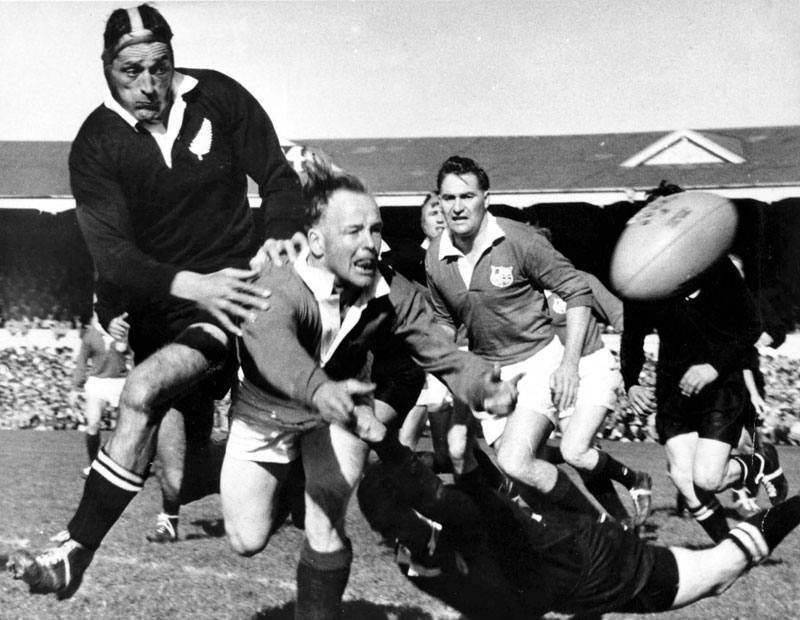
Success in Australia
The Tour begun in Australia with a comfortable 53-18 win over Victoria, and the tourists won five of their six provincial matches. In the Tests against the Wallabies the Lions were convincing winners, with O’Reilly and Ken Smith scoring a try apiece in the 17-6 victory in Brisbane in the first Test. A week later the scoreline was even more emphatic, as they ran in five tries to none in a 24-3 success. Once again O’Reilly got on the scoresheet, but it was Malcolm Price who was the star with two tries, while Risman and Dawson got the others.Don Clarke's world record
The touring squad were undone by the boot of Don Clarke against the All Blacks. In all the Lions spent three months in New Zealand and played 25 matches, winning 20 and losing five – in addition to their three Test defeats they also lost to Otago and Canterbury. The 3-1 Test series defeat was a major blow for the Lions. The first Test, under modern scoring rules, would have been a win for the Lions but with tries only counting for three points back then they suffered a cruel defeat.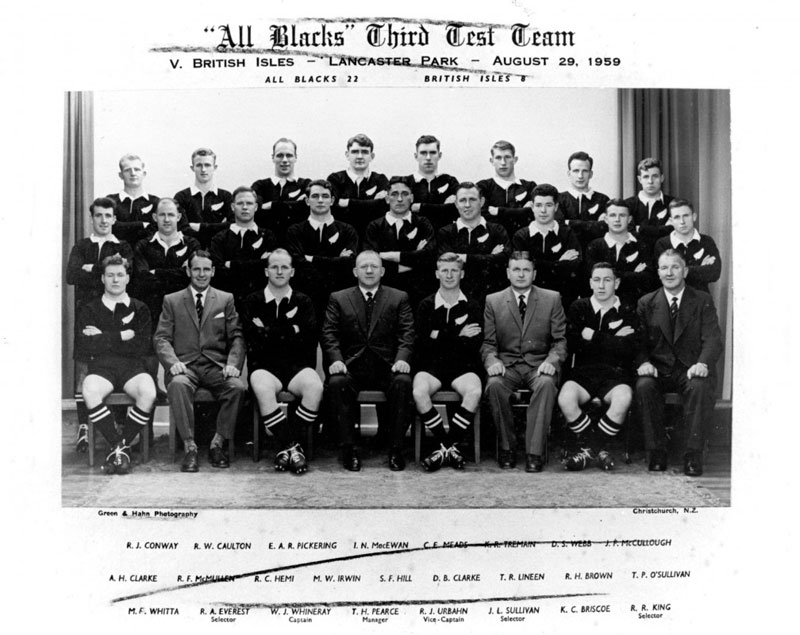 In typical style the tourists scored four tries to the All Blacks’ none but lost by a single point as New Zealand full-back Clarke kicked six penalties, the last to win the game just two minutes from time.
For the Lions, Price notched a double for the second successive Test, with O’Reilly and Jackson also crossing, but it wasn’t quite enough.
An injury-hit Lions side lost the second Test and again it was Clarke who punished them – albeit this time with a spectacular try that sealed an 11-8 win.
Trailing heading into the dying minutes, Clarke popped up for the match-winning score, adding the conversion to rub salt into the wounds.
The powerful New Zealand pack dominated in a 22-8 victory in the third Test but the fourth and final game sent the Lions home with a deserved win.
The tourists won 9-6 and, fittingly, by three tries to nil. The try-scorers were their three most outstanding backs: Jackson, O’Reilly and Risman.
Eden Park is often the venue for the final Test of a Lions series and to this day the 1959 Lions remain the only side to claim a win there.
Still, the Tour was not yet over, the Lions stopped off on their way back for two matches in Canada, beating British Columbia and then Eastern Canada in successive games.
In typical style the tourists scored four tries to the All Blacks’ none but lost by a single point as New Zealand full-back Clarke kicked six penalties, the last to win the game just two minutes from time.
For the Lions, Price notched a double for the second successive Test, with O’Reilly and Jackson also crossing, but it wasn’t quite enough.
An injury-hit Lions side lost the second Test and again it was Clarke who punished them – albeit this time with a spectacular try that sealed an 11-8 win.
Trailing heading into the dying minutes, Clarke popped up for the match-winning score, adding the conversion to rub salt into the wounds.
The powerful New Zealand pack dominated in a 22-8 victory in the third Test but the fourth and final game sent the Lions home with a deserved win.
The tourists won 9-6 and, fittingly, by three tries to nil. The try-scorers were their three most outstanding backs: Jackson, O’Reilly and Risman.
Eden Park is often the venue for the final Test of a Lions series and to this day the 1959 Lions remain the only side to claim a win there.
Still, the Tour was not yet over, the Lions stopped off on their way back for two matches in Canada, beating British Columbia and then Eastern Canada in successive games.
1962 - Lions go toe to toe with South Africa
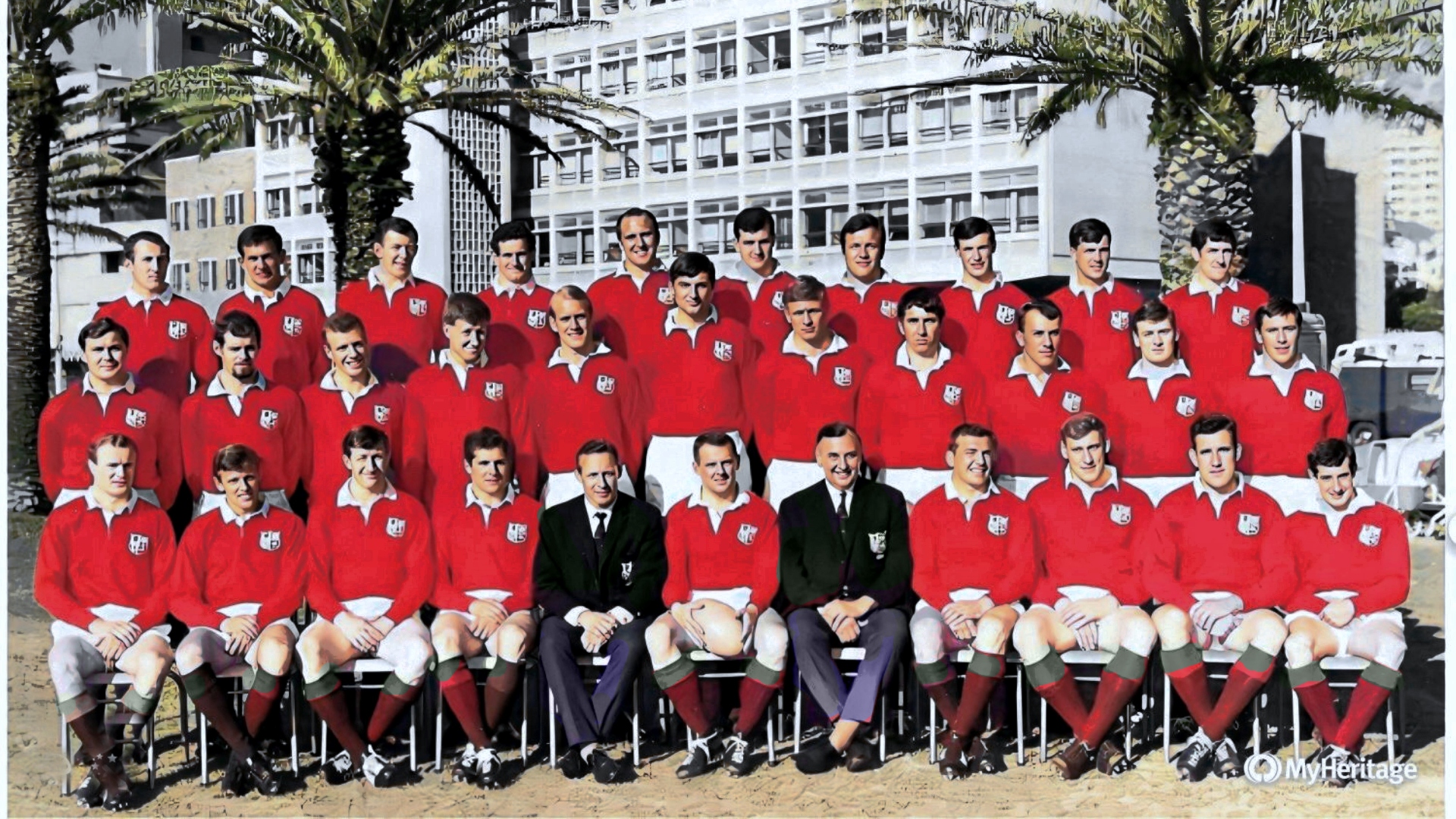 Arthur Smith’s 1962 British & Irish Lions needed to make a statement.
Avril Malan’s touring Springbok side lost just once on their 1960-61 European Tour - 6-0 to the Barbarians at Cardiff Arms Park - and the Lions selectors knew that only a pack of formidable size could challenge the confrontational South Africans.
Smith’s forwards were the largest to ever leave Britain and boasted six forwards over 15 stone more than the 1955 Tour to South Africa.
Among them was a young Willie John McBride - on the first of his five Tours - and joined by fellow behemoths Keith Rowlands, Mike Campbell-Lamerton, Peter Wright, Kingsley Jones and Syd Millar.
Arthur Smith’s 1962 British & Irish Lions needed to make a statement.
Avril Malan’s touring Springbok side lost just once on their 1960-61 European Tour - 6-0 to the Barbarians at Cardiff Arms Park - and the Lions selectors knew that only a pack of formidable size could challenge the confrontational South Africans.
Smith’s forwards were the largest to ever leave Britain and boasted six forwards over 15 stone more than the 1955 Tour to South Africa.
Among them was a young Willie John McBride - on the first of his five Tours - and joined by fellow behemoths Keith Rowlands, Mike Campbell-Lamerton, Peter Wright, Kingsley Jones and Syd Millar.
Impressive pack not quite enough
Though the Lions lost the four-Test series 3-0, their immense pack pushed a South African eight bolstered by legendary prop Mof Myburgh, on his Test debut, to the limit in three attritional tests. Johnny Gainsford set alight Ellis Park in the first Test after collecting a sharp Mannetjies Roux pass to race over in the corner before Ken Jones equalised with a spectacular score of his own with ten minutes left in the game. John Wilcox gathered a Springbok kick and though he spilled the ball in contact, Gordon Waddell snaffled the loose ball and fed the Welsh centre, who scythed through the Springbok defence and galloped 60 metres to score. Captain Smith could not convert and the Test was drawn. Only a Keith Oxlee penalty with five minutes remaining could down the Lions at Kings Park, Durban in the second Test with Rowlands being denied a last-minute try.Crowds flock to Cape Town
Newlands saw its largest ever crowd for a highly anticipated third Test – 54,843 were packed inside the Cape Town stadium, with a reported 4,000 more locked outside. Hooker Bryn Meredith took his tally to a Welsh record 41 Lions’ games, including eight Tests by the end of the Tour, and helped Smith’s men to set-piece dominance. The Springboks though came from 3-0 down to triumph 8-3, with Oxlee scoring every Bok point for the second week running. It was only in the fourth when, deprived of Smith’s leadership due to injury, the Lions capitulated to a 34-14 loss in front of a capacity crowd in Bloemfontein. Springbok and Natal outside-half Oxlee was exceptional again and grabbed a Test record 16 points in another match-winning performance. The Lions did end on a positive note, with an 11-try 50-0 win against ‘East Africa’ in Nairobi.1966 - Lions in New Zealand
 Five years before Lions rugby’s high point in New Zealand they were led by Mike Campbell-Lamerton, who had served as a captain in the Army on Tours to Korea and Kenya.
The Lions had star quality in their backline in the shape of Newport stand-off David Watkins and Cambridge University centre Mike Gibson, while the pack boasted players of the class of Willie John McBride, Brian Price, Jim Telfer, Ray McLoughlin, Ronnie Lamont and Noel Murphy.
For the first time, the tourists not only had a manager, Irishman Des O'Brien, who had played both rugby and football for his country, but a coach too, Welshman John Robins.
Five years before Lions rugby’s high point in New Zealand they were led by Mike Campbell-Lamerton, who had served as a captain in the Army on Tours to Korea and Kenya.
The Lions had star quality in their backline in the shape of Newport stand-off David Watkins and Cambridge University centre Mike Gibson, while the pack boasted players of the class of Willie John McBride, Brian Price, Jim Telfer, Ray McLoughlin, Ronnie Lamont and Noel Murphy.
For the first time, the tourists not only had a manager, Irishman Des O'Brien, who had played both rugby and football for his country, but a coach too, Welshman John Robins.
Lions on form in Australia
The Tour, though, began in Australia and Lions were in good form. Barring a 6-6 draw against New South Wales each state side was beaten, and a Combined Country XV was also edged past 6-3. Three weeks after their first Tour game, the Lions downed Australia 11-8 in the first Test in Sydney thanks to Ireland forward McLoughlin getting them out of jail in a comeback victory. The second Test proved far easier, the tourists running out 31-0 victors following a five-try blitz in the second half. The scoreline is the highest ever winning margin in a Lions test and came courtesy of a double from Ken Jones as well as tries from Murphy, Dewi Bebb and Watkins. It was the first time since 1904 that the Lions had emerged unbeaten from a Tour to Australia and, in some quarters, the squad was being talked up as potentially among the very best.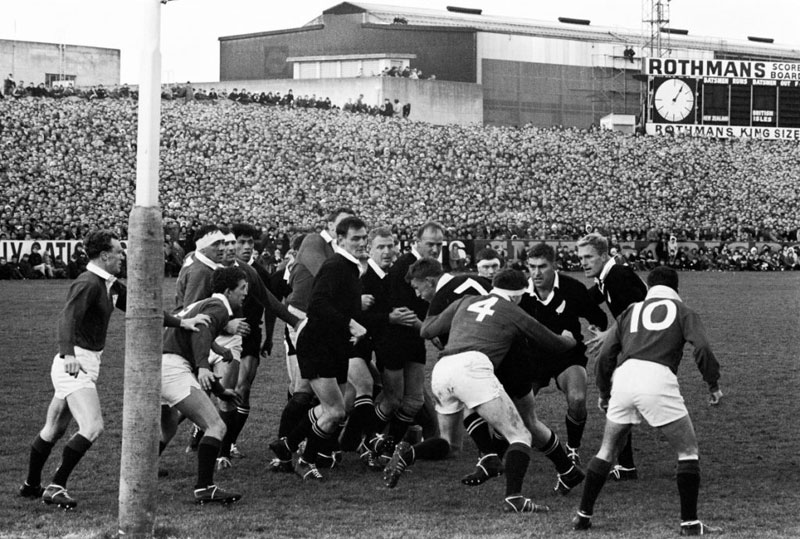
New Zealand halt Lions momentum
Unfortunately, once the touring party made its way to New Zealand, the aforementioned star quality on the teamsheet did not produce stellar results on the pitch and their bubble was immediately burst. The Lions lost their first Tour match 14-8 to Southland and went on to be defeated in three of the first five. The tourists walked straight into a golden age of New Zealand rugby, with the All Blacks in the midst of the unbeaten reign of coach Fred Allen and with the likes of Ken Gray, Waka Nathan, Brian Lochore and Chris Laidlaw. Test preparations were also not helped by a training session at Queenstown airport being disrupted because the grass they had been allocated turned out to be part of the runway – meaning the session was delayed as players ran for cover each time a plane wanted to take off or land.New tactics in the First Test
By the time the first Test came around the Lions’ record had improved somewhat to five wins, three losses and a draw. The Lions went down 20-3 in Dunedin as they failed to cope with the Kiwi’s new tactic of centres deliberately setting up rucks to allow colleagues to recycle the ball – creating the ‘phase’ style of rugby we all know so well now. Three weeks on and five wins added to the tally, the Lions appeared to have rallied, so much so that they led at half time of the second Test. Campbell-Lamerton had dropped himself for the match in Wellington, replaced by Delme Thomas with Pask taking the captaincy, but despite this move the Kiwis fought back in the second half to win 16-12. It could have been so different though had Thomas’ pass after a 50-metre break not gone astray, within yards of the line, in the dying minutes.Third Test decides the series
Four more punishing Tour matches were staged between the second and third Test with the Lions winning two and drawing one, but things did not improve when it came to the crunch in Christchurch. The sides were level at 6-6 after 40 minutes but the All Blacks eased to a 19-6 victory in the second half, winning the third Test and with it, the series. The Lions headed into the fourth and final Test, at Auckland’s iconic Eden Park, on the back of another three Tour victories and fired up to avoid a series whitewash. The All Blacks had their own bit of history for extra motivation too, having never won every test against a touring side before. Despite Colin McFadyean and Sandy Hinshelwood crossing for tries in quick succession, the Lions trailed 8-10 at half time and the All Blacks eventually ran out 24-11 victors. At the end of a five-month trip, and having already played 33 games, the tourists stopped off in Canada on their way home for some missionary work and two final games. The Tour may have been a low point for the Lions but five members of the party would have the last laugh; Mike Gibson, Frank Laidlaw, Willie John McBride and Delme Thomas all returning four years later for the greatest triumph in Lions history.1968 - Lessons learnt for 1971 success
Tom Kiernan's 1968 tourists may have lost the Test series against South Africa 3-0 with one match drawn, but they re-established the Lions spirit and took the first steps towards the successes of the 1970s.Building blocks laid
The squad contained such attacking talents as Gareth Edwards, Barry John, Mike Gibson and Gerald Davies, many of whom would go on to play key parts in the Lions coming successes. But the party was ravaged by injury and Edwards, John, Gibson and Davies never appeared in a Test team together, with John's Tour being ended by a broken collarbone suffered early in the opening international. The Springbok pack meanwhile contained such greats as Jan Ellis, Tommy Bedford and Piet Greyling in the back row and Frik du Preez at lock.A historic injury replacement
Gibson became the Lions, and international rugby's, first replacement in that game when he came onto the field to win what was to be the first of his 12 Test appearances for the Lions on five Tours. Despite the injuries, the squad still produced one of the Lions' best provincial records in South Africa.Kiernan's magical boot
Although the Lions drew the second Test 6-6 and lost the first and third both by a mere five points, their hosts scored eight tries to one over the four matches, winning the first international 25-20, the third 11-6 and the fourth 19-6. Only Kiernan's boot kept the Lions within touching distance as the Irish full-back thumped over a record 35 points in the Tests to account for all but three of his team's total.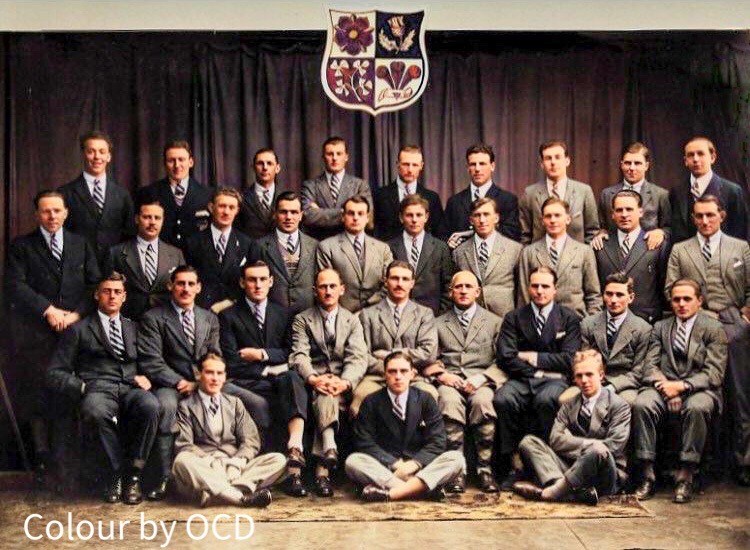
1924 - The Lions' name debuts
The First World War meant no British side had toured since 1910 – when sides went to Argentina and South Africa. And the 1924 tourists may have left these shores as the British Isles Rugby Union Team, but they returned as Lions. The name was not formally adopted by the team until the 1950 Tour to Australia and New Zealand, but it originated in South Africa in 1924. Journalists from the British Isles and the home nation nicknamed the touring players Lions due to the beast featuring on their official ties.Bennie Osler’s kicking feats
A legend in South African rugby, Bennie Osler was one of the games great kickers. He was able to kick penalties and conversions from almost anywhere and inspired generations of Springbok kickers. At over three months long and consisting of 21 games the 1924 Tour was a struggle for the tourists. Nine of the 21 games ended in Lions victories but none of the four Tests went Britain and Ireland’s way. Four of those victories came in the opening five matches as Cape Town, Kimberley, Salisbury and Pochefstroom were despatched in a strong opening to the trip. The first Test encounter, in Durban, ended in a 7-3 loss as Osler 's drop-goal gave the Springboks a lead they would not relinquish before a first-half try for the hosts left the Lions too much to do. The series moved on to Johannesburg a week later and four second-half tries from the home side saw them run out 17-0 victors.‘The perfect game of rugby football’
The spoils were shared in a 3-3 draw in Port Elizabeth before what South African critics of the game dubbed ‘the perfect game of rugby football’ in the final Test in Cape Town. The Lions put up a brave fight but tries from Stan Harris and Tom Voyce were not enough as South Africa ran in four tries to win the game 16-9. Lions captain, Dr Ronald Cove-Smith, prior to visiting South Africa, had not tasted defeat in 13 international appearances for England. The Tour ended on a high note though as Western Province were beaten 8-6, setting up the side for another more positive experience in Argentina three years later.1927 - Argentina's first international games
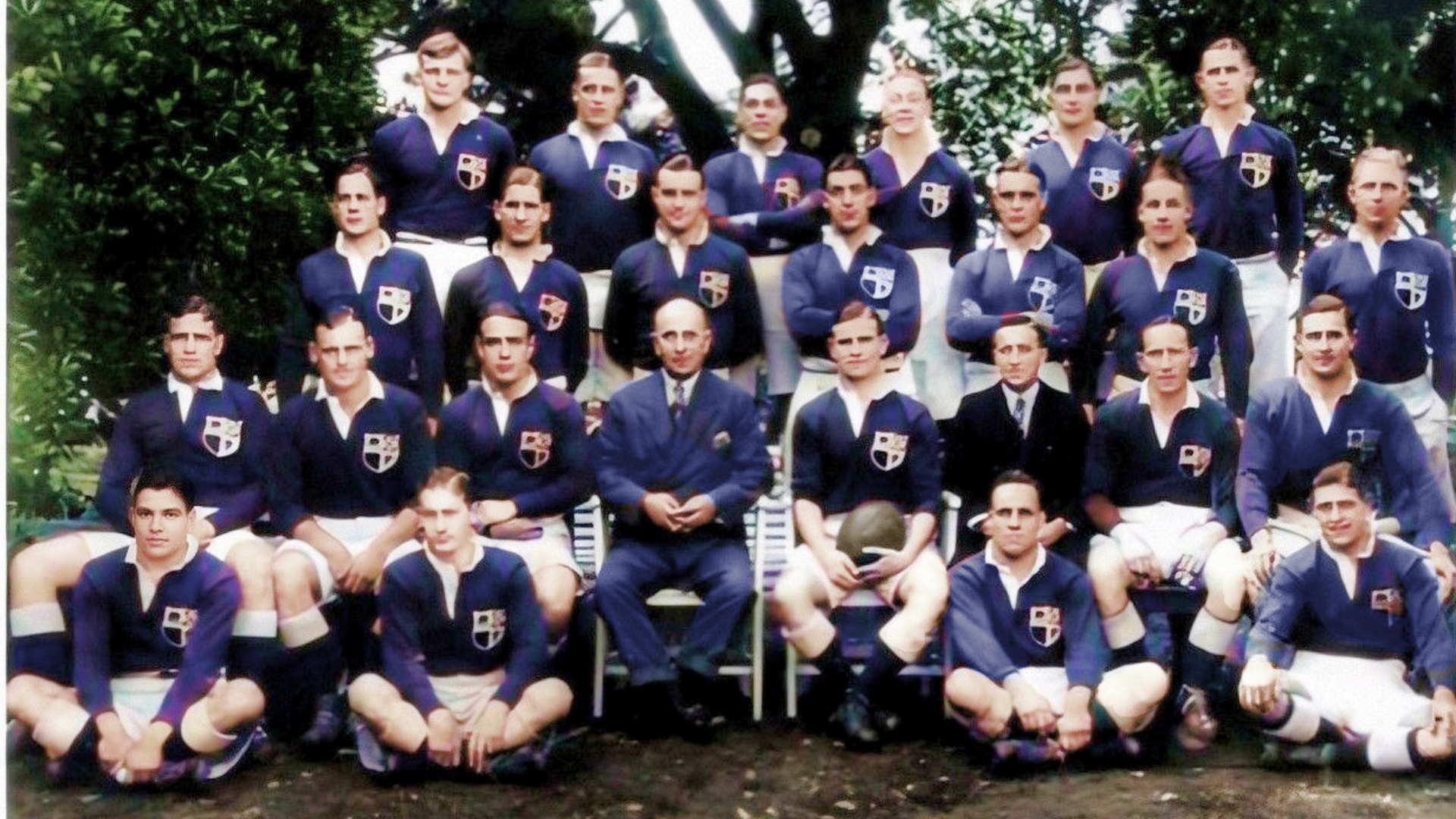 Argentina have established themselves as key players in world rugby with semi-final berths in both the 2007 and 2015 Rugby World Cups.
But such a dramatic rise had to have humble beginnings and for Los Pumas these can be dated back to 1927 as the British & Irish Lions came to visit.
Despite the Lions having toured Argentina back in 1910, the 1927 trip saw the River Plate Rugby Union – now Unión Argentina de Rugby – recognise four of the nine matches played as the first official games of the Argentina national team.
However, there wasn’t much more for the hosts to celebrate as the Lions – made up of English and Scottish players and captained by lock David MacMyn – won all nine matches, racking up 295 points in the process while conceding just nine at the other end.
Argentina have established themselves as key players in world rugby with semi-final berths in both the 2007 and 2015 Rugby World Cups.
But such a dramatic rise had to have humble beginnings and for Los Pumas these can be dated back to 1927 as the British & Irish Lions came to visit.
Despite the Lions having toured Argentina back in 1910, the 1927 trip saw the River Plate Rugby Union – now Unión Argentina de Rugby – recognise four of the nine matches played as the first official games of the Argentina national team.
However, there wasn’t much more for the hosts to celebrate as the Lions – made up of English and Scottish players and captained by lock David MacMyn – won all nine matches, racking up 295 points in the process while conceding just nine at the other end.
Ernest Hammett makes a name for himself
Englishman Hammett was the top Test point scorer as he helped himself to 40 points across four matches for the side coached by former RFU president James ‘Bim’ Baxter, who would also be in charge of the 1930 campaign in New Zealand and Australia. The British & Irish Lions won the four Tests with scores of margins 37-0, 46-0, 34-3 and 43-0, but despite the one-sided nature of the contests, the tourists drew large crowds and left the hosts with a new love for the game that is evident to this day.1930 - For the love of the game
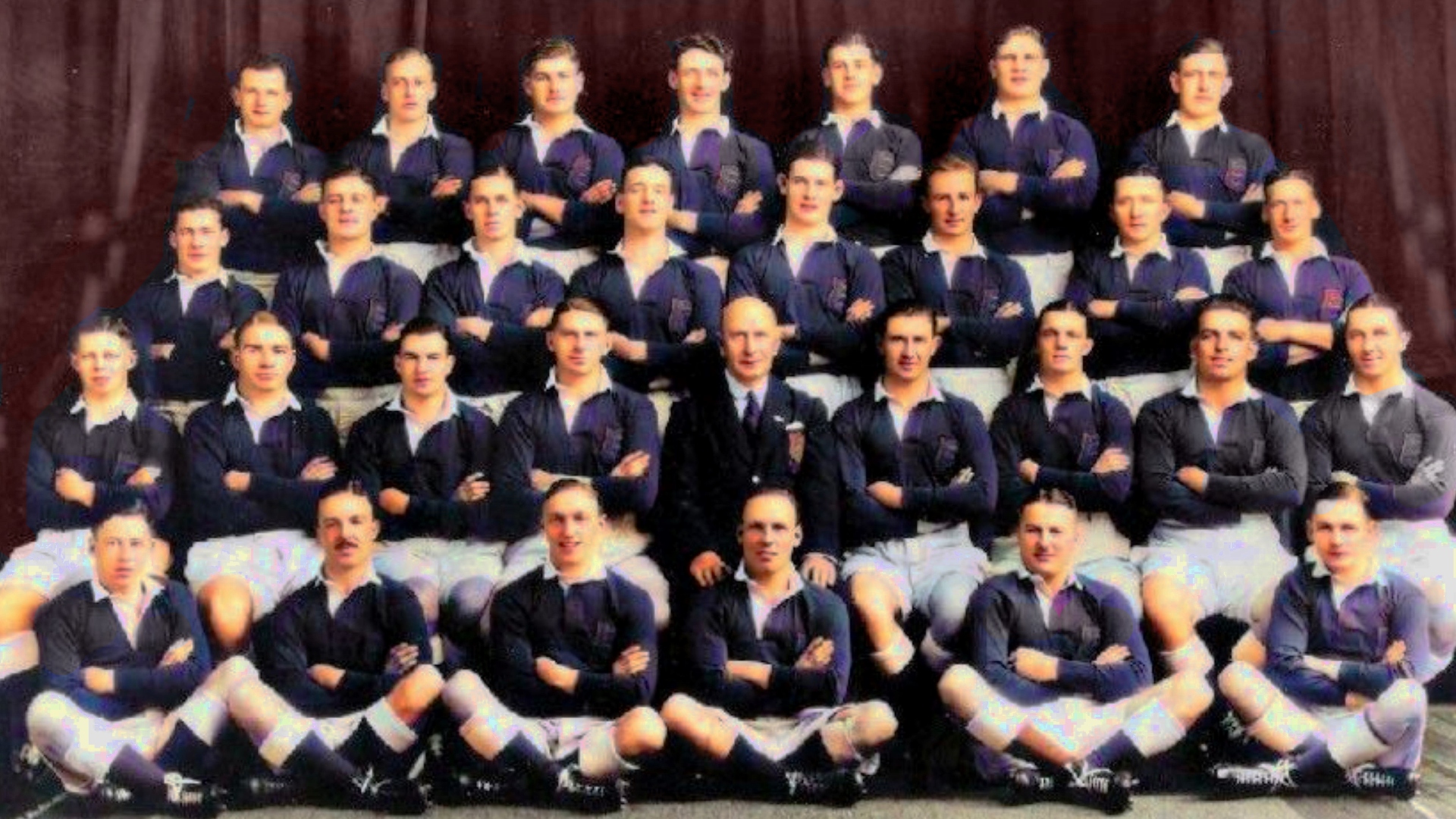 "The principles and ideals which guided the founders of the rugby union cannot be stressed too forcibly. Rugby should and must be played for the love of the game." - Doug Prentice, Lions captain 1930
It had been 22 years since the Lions last set foot in New Zealand when they toured in 1930, and they would not return until 1950, but the hosts’ impressive forward play gave the impression that very little had changed between the two series.
But in other respects, everything was different. While journalists coined the phrase ‘Lions’ in the 1924 South Africa Tour, it wasn’t until six years later that the team left Britain as Lions in name, with a badge on their chest and a brooch in their side as a reminding aspect.
"The principles and ideals which guided the founders of the rugby union cannot be stressed too forcibly. Rugby should and must be played for the love of the game." - Doug Prentice, Lions captain 1930
It had been 22 years since the Lions last set foot in New Zealand when they toured in 1930, and they would not return until 1950, but the hosts’ impressive forward play gave the impression that very little had changed between the two series.
But in other respects, everything was different. While journalists coined the phrase ‘Lions’ in the 1924 South Africa Tour, it wasn’t until six years later that the team left Britain as Lions in name, with a badge on their chest and a brooch in their side as a reminding aspect.
Selection headaches
But it was the question of who would wear the three lions which caused the major difficulties. A year before departing for the Antipodes, for four Tests in New Zealand and one in Australia, 28 players were given a provisional invitation. Only nine of those were to make the trip, however, while selectors had to ask 100 people before they could find 29 people to fill the squad. It was not an unfamiliar occurrence at the time, particularly between the two wars, although 23 of those travelling had been capped previously. The availability, or lack of, made captaincy more difficult than usual. In the absence of England rugby pioneer Wavell Wakefield, later to be knighted, Doug Prentice was informed of his appointment in the role in the lounge of the hotel the night before setting sail. As was the norm, Prentice also undertook the role of coach, only playing two of the five Tests.Scrum rules
But, officially under their new name, the Lions were welcomed in both New Zealand and Australia for their exciting brand of rugby, attacking mentality and individual bursts. The crowds were appreciative too, although the New Zealanders' continued use of the 'rover', a wing forward who did not pack down in their favoured 2-3-2 scrum formation but instead acted as an auxiliary scrum-half and harassed the opposing stand-off, did cause slight tensions. It was enough to upset James ‘Bim’ Baxter, Lions manager, who enlisted the help of the RFU to impose a scrummaging law banning the move upon their return to British shores.A length of the field try
In Dunedin for the first time since before the war, anticipation could hardly have been higher. Despite being clear second favourites for the First Test, the Lions, playing against an All Black side donning white due to a kit clash, showed an impressive resolve as James Reeve’s first-half try was enough for the visitors to be all-square heading into the closing moments. What followed was one of the most dramatic moments in the history of the Lions. Ivor Jones, the outlandishly brisk back-row forward, ran the pitch’s entirety before drawing in the last defender, setting up Jack Morley to run in the winning score for their first Test victory of the Tour. It was to be their last.The second Test
Heading to Christchurch, there was a renewed optimism for an under-strength side, but Paul Murray’s mid-match shoulder injury left them depleted still, finishing the game with 14 men – replacements were frowned upon by the Lions at this point. New Zealand levelled the series through a 13-10 victory far more comfortable than the scoreline suggested, in spite of more individual lung-busting brilliance from Jones to give Carl Aarvold a score.On to Auckland
Two months and 19 games of the Tour had already elapsed by the time the Third Test came around in Auckland, but not before a bit of fun and festivities were had in the prolonged stay. Fly-half Tommy Knowles was a major beneficiary, purchasing a set of left-handed golf clubs in Dunedin before making a hole in one on the very first hole to cheers all around the course. Level at 1-1 heading into the third Test, the series was more than in the balance when the Lions headed to Auckland, although defeat to the provincial side the week previous was hardly the ideal preparation. A 15-10 defeat was to follow, despite Jones once again being in on the act, this time with a try of his own following clever approach work by Harry Bowcott, who impressed throughout the entirety of the Tour. However, being 15-5 up in the encounter, New Zealand were never really threatened with defeat, a fact which the touring Lions believed could have been reversed had they been a full-strength outfit.Destination Australia
But the All Blacks were going from strength to strength, heading to Wellington for the fourth encounter and running rampant, scoring four tries in the second half alone, six altogether in the match to run home 22-8 victors. A match scoreline and 3-1 series defeat was perhaps undeserving of the visitors’ displays. One highlight for the home side was however, Tony Novis' fine score: The Tour was not finished there, however, with one provincial game planned for before the Australia Test, while six were also scheduled afterwards, prior to the side making the six-week trip home once again. While the anticipation may not have hit the dizzy heights of the 1904 Tour, the Test in Sydney at the end of August was not merely an after-thought, with more than 30,000 people hitting the Sydney Cricket Ground. But a win was not to come for the Lions, with Tom Lawton masterminding a 6-5 victory despite Tony Novis’ try. Prentice converted to leave the tourists in with a chance, and in the dying seconds Jones was tackled just a meter short of the try line by Cyril Towers, another case of close but not quite enough as four Test defeats followed the solitary victory. Despite the results, by all accounts it was a promising Tour both on and off the park, with plenty of social activities to allow the Lions to properly, and responsibly, celebrate their new name. The heaviest defeat of the trip was still to come though, a 28-3 overturning to New South Wales, but September and the Australia leg finished on a positive note. A 71-3 win against South Australia was followed by a 45-0 trouncing of Ceylon in Colombo, Sri Lanka, a full five months after the Tour began way back in May. But there was more to take from the Tour than just results. A hugely under-strength Lions had pushed the mercurial New Zealanders close, captured the imagination and the acclaim of the public both there and in Australia, all while playing under a new Three Lions emblem.1936 - A world record for Obolensky
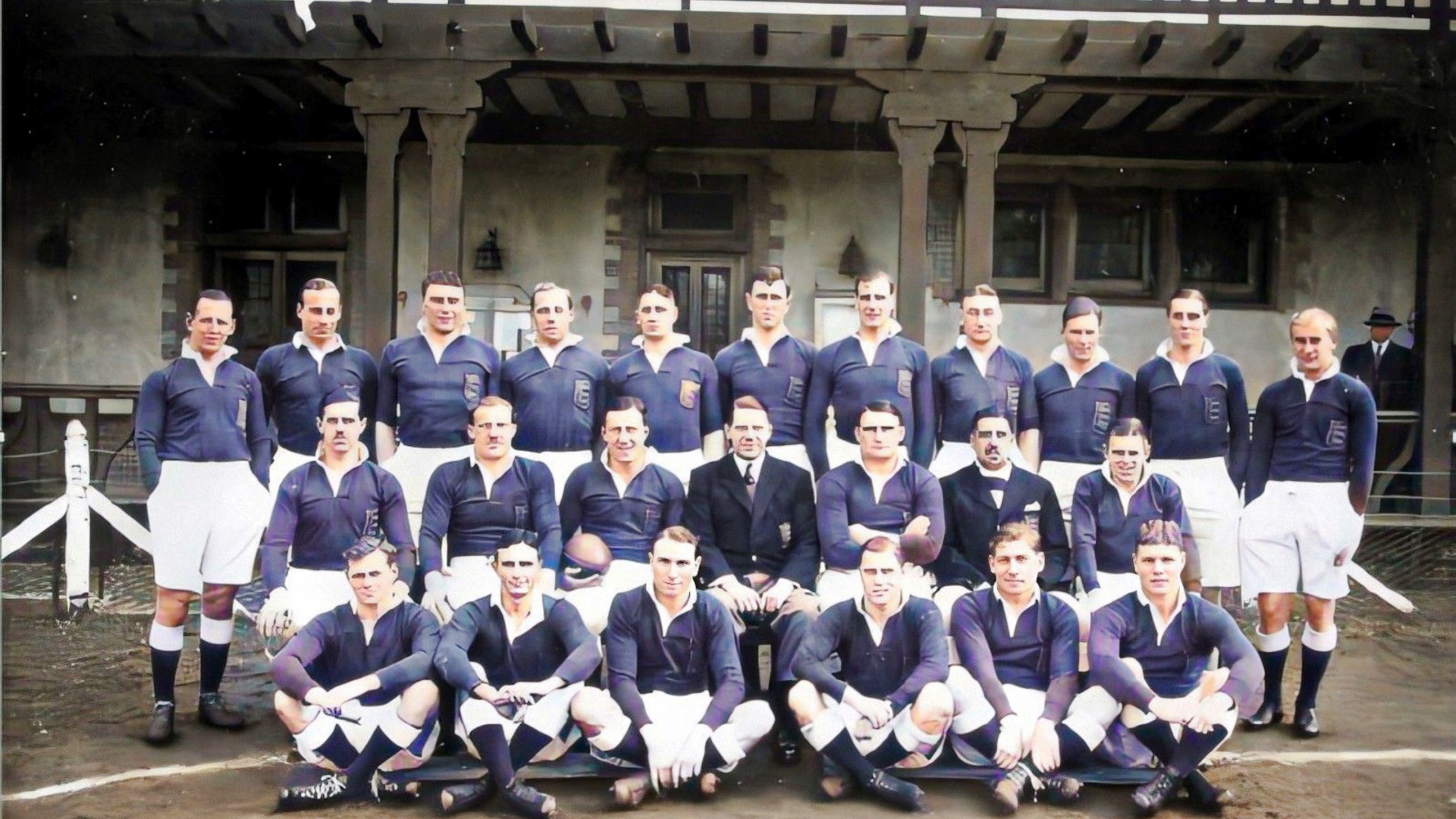 Tours to Argentina may one day become a regular feature again, but for now they remain firmly in the past with the 1936 trip marking the last time the Lions went to South America.
Past Tours to Argentina are now known as the ‘forgotten Tours’, but there is nothing forgettable about their adventure in 1936 – during which they played 10 matches and won the lot, including the only Test.
In their ranks was the great England winger Prince Alexander Obolensky, known as the ‘White Russian Prince’, who had inspired England’s first-ever win against New Zealand on his international debut with two stunning tries earlier that year.
Obolensky, born in Saint Petersburg, was a member of the Rurik dynasty that fled after the 1917 Russian Revolution and settled in North London.
Known for his searing pace and sharp agility, Obolensky reportedly scored a remarkable 17 tries in a thumping 83-0 win over Brazil in Santos. That stands as a world record.
The team stopped over at other interesting locations on their Tour, including Madeira and Montevideo, on the Andalucia Star – which was sunk by a German submarine off the African coast six years later during World War Two.
Obolensky, who played for the Barbarians seven times, never played for England again, despite his fine Lions form, and three years later he was called up to active service by the RAF.
Just before the outbreak of war in 1939, he was transferred to Digby and six months later he was killed in a training accident at Martlesham Heath Airfield, when his plane dropped into a ravine.
The day before, the 24-year-old had been recalled by England for a match against Wales.
Tours to Argentina may one day become a regular feature again, but for now they remain firmly in the past with the 1936 trip marking the last time the Lions went to South America.
Past Tours to Argentina are now known as the ‘forgotten Tours’, but there is nothing forgettable about their adventure in 1936 – during which they played 10 matches and won the lot, including the only Test.
In their ranks was the great England winger Prince Alexander Obolensky, known as the ‘White Russian Prince’, who had inspired England’s first-ever win against New Zealand on his international debut with two stunning tries earlier that year.
Obolensky, born in Saint Petersburg, was a member of the Rurik dynasty that fled after the 1917 Russian Revolution and settled in North London.
Known for his searing pace and sharp agility, Obolensky reportedly scored a remarkable 17 tries in a thumping 83-0 win over Brazil in Santos. That stands as a world record.
The team stopped over at other interesting locations on their Tour, including Madeira and Montevideo, on the Andalucia Star – which was sunk by a German submarine off the African coast six years later during World War Two.
Obolensky, who played for the Barbarians seven times, never played for England again, despite his fine Lions form, and three years later he was called up to active service by the RAF.
Just before the outbreak of war in 1939, he was transferred to Digby and six months later he was killed in a training accident at Martlesham Heath Airfield, when his plane dropped into a ravine.
The day before, the 24-year-old had been recalled by England for a match against Wales.
1938 - Facing the unofficial World Champions
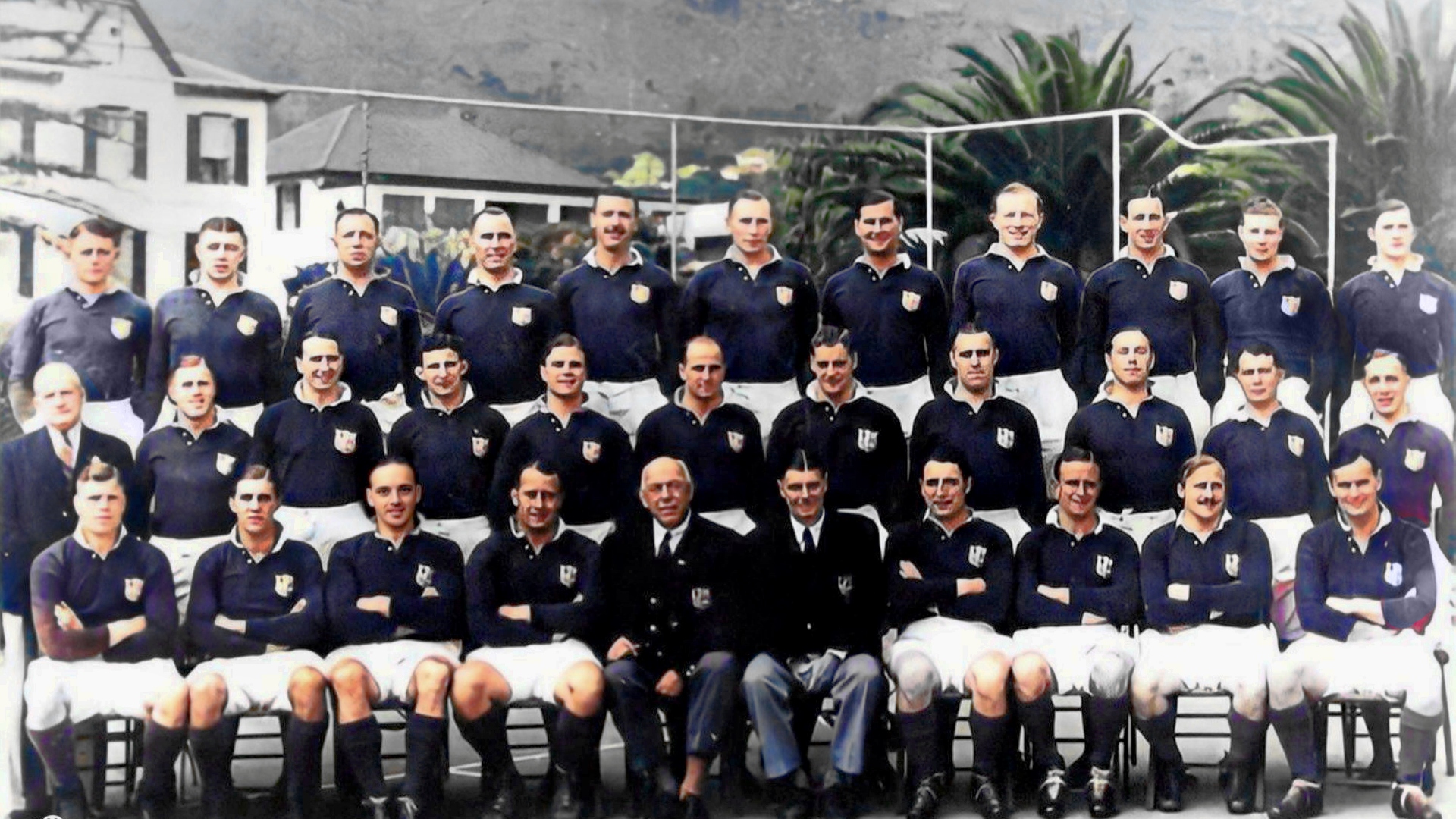 The 1938 Tour to South Africa was the last undertaken by the Lions before the Second World War and while they were unsuccessful in the Test series – they won plenty of admirers.
This was the 14th British Tour and the sixth to South Africa and the 1938 crop scored more points than any previous visitors to the country and they did it against the unofficial world champions.
The Springboks had whitewashed the four home unions in 1931-2 then won in New Zealand in 1937 – leading the local media to call them the best side to visit that country – before downing the Wallabies 2-0 on the way home.
Facing these all-conquering Boks was a Lions side led by Tour manager Major Bernard ‘Jock’ Hartley – then a colonel – and captained by Ireland’s Sam Walker.
It was by no means a weak side with legends like Vivian Jenkins and Jeff Reynolds on board but they were at least half a dozen stars short of being the best of British.
Danie Craven and Boy Louw were the biggest stars for the Boks but the Lions impressed in the initial stages of the Tour.
The 1938 Tour to South Africa was the last undertaken by the Lions before the Second World War and while they were unsuccessful in the Test series – they won plenty of admirers.
This was the 14th British Tour and the sixth to South Africa and the 1938 crop scored more points than any previous visitors to the country and they did it against the unofficial world champions.
The Springboks had whitewashed the four home unions in 1931-2 then won in New Zealand in 1937 – leading the local media to call them the best side to visit that country – before downing the Wallabies 2-0 on the way home.
Facing these all-conquering Boks was a Lions side led by Tour manager Major Bernard ‘Jock’ Hartley – then a colonel – and captained by Ireland’s Sam Walker.
It was by no means a weak side with legends like Vivian Jenkins and Jeff Reynolds on board but they were at least half a dozen stars short of being the best of British.
Danie Craven and Boy Louw were the biggest stars for the Boks but the Lions impressed in the initial stages of the Tour.
The Springboks best-ever performance
They had only lost to Western Province and Transvaal out of the provincial sides and came into the first Test having claimed revenge over Transvaal. But in what Craven described as the Springboks’ best-ever performance, the Lions were eventually outgunned in a game that they led at four different times. Injuries would once again rear their ugly head for the Lions – particularly for the backs – as three different players played scrum-half in the Tests. A squad of 29 players was clearly insufficient to play a 24-match Tour with and the series was sealed in the Boks’ favour in a scorching Port Elizabeth for the second – labelled the ‘Tropical Test’.A first Test win since 1910
But the Lions finished the Tour triumphant – coming from 13-3 behind to beat South Africa 26-10 in the third Test. In a side that included all eight Irishmen on the Tour, Walker was carried off the pitch in glory as the Lions won a Test for the first time in South Africa since 1910. Overall they played 24 matches on the Tour – 19 provincial clashes in South Africa of which they won 16, two matches against Rhodesia and the three match Test series.The onset of War
Every player on the Tour was to have their career curtailed by the onset of the second World War and one Lion in particular bears mentioning for his effort in the fighting. Blair ‘Paddy’ Mayne was a champion Heavyweight boxer, and an Ulster, Ireland and Lions rugby player. Mayne was an original member of the SAS, won a DSO and three bars – he is only one of seven men in history have achieved that quadruple honour.1903 - A royal mentor learns his trade with the Lions
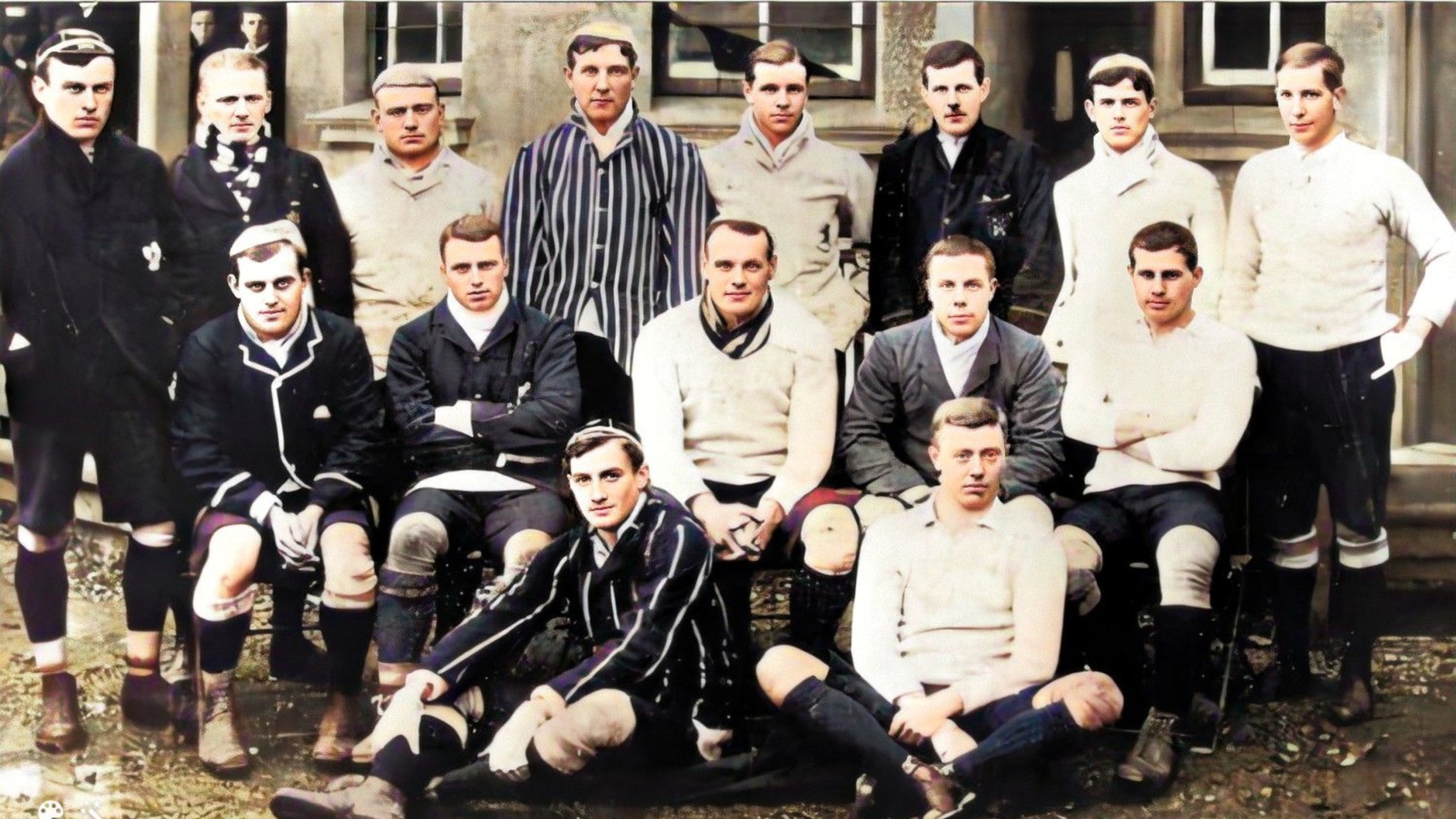 In 1903 the British & Irish Lions travelled to South Africa where they were beaten for the first time in a Test series, having lost just one of 40 previous matches on their first two visits.
There was a royal theme to the touring party with Louis Leisler Greig, the Scotland captain and a future royal equerry to George VI, featuring in all three Tests.
A gifted all-rounder, Greig was also a very talented tennis player, but it was after his Lions experience that he would really rise to prominence.
Three years later he joined the navy, entering officer training at Osborne in 1909, meeting the then-Prince Albert.
He became a mentor for the future king serving with him on both HMS Cumberland and HMS Malaya as well as appearing at Wimbledon with him in the men’s doubles in 1926.
By the time he passed away in 1953, Greig had become such an important figure that Winston Churchill, the five most senior members of the Royal family, and of course the Scottish rugby team, attended his funeral.
Going back to the Tour, the Lions suffered defeats in their opening three matches by Western Province sides in Cape Town.
From then on the results were a mixed bag, although they were able to pick up more wins than losses to finish with 11 victories, three draws and eight defeats in their 22 contests.
In 1903 the British & Irish Lions travelled to South Africa where they were beaten for the first time in a Test series, having lost just one of 40 previous matches on their first two visits.
There was a royal theme to the touring party with Louis Leisler Greig, the Scotland captain and a future royal equerry to George VI, featuring in all three Tests.
A gifted all-rounder, Greig was also a very talented tennis player, but it was after his Lions experience that he would really rise to prominence.
Three years later he joined the navy, entering officer training at Osborne in 1909, meeting the then-Prince Albert.
He became a mentor for the future king serving with him on both HMS Cumberland and HMS Malaya as well as appearing at Wimbledon with him in the men’s doubles in 1926.
By the time he passed away in 1953, Greig had become such an important figure that Winston Churchill, the five most senior members of the Royal family, and of course the Scottish rugby team, attended his funeral.
Going back to the Tour, the Lions suffered defeats in their opening three matches by Western Province sides in Cape Town.
From then on the results were a mixed bag, although they were able to pick up more wins than losses to finish with 11 victories, three draws and eight defeats in their 22 contests.
An incredibly tight series
However, the side – led by Scottish captain Mark Morrison and coached by Johnny Hammond – lost the Test series to South Africa 1-0 for a first ever series defeat for the Home Unions representatives. The two teams could not be separated during either of the first two clashes with both ending in draws – 10-10 and 0-0 respectively. And it was the hosts who managed a narrow victory in the decider 8-0 at Newlands Stadium in Cape Town thanks to tries from Joe Barry and Alec Reid, plus a Fairy Heatlie conversion. The Lions would continue to be unsuccessful in their bid to repeat the Test series win they enjoyed in South Africa seven years previously until 1974.1904 - Pioneering Percy paves the way for Welsh No.10s
A generation of brilliant Welsh backs emerges
The British & Irish Lions have had their fair share of trailblazers and in 1904 it was Percy Bush who broke new ground as the first Welsh fly-half to represent the most famous touring team of all. Bush pulled the strings in the Lions No.10 jersey – with the likes of Tuan Jones, Cliff Morgan, David Watkins, Barry John, Phil Bennett, Gareth Davies and Stephen Jones all to follow in his footsteps. The Cardiff wizard notched up a century of points on the Tour, including 11 tries, while Llewellyn, Gabe and Morgan crossed the whitewash 19 times between them. But the first of Bush’s points came from his boot as he dropped a goal against New South Wales – all in the name of a wager with Irish forward Reggie Edwards!A gamble pays off
Bush remembers in Behind the Lions, “Edwards bet that I would not drop a goal in our game against New South Wales in Sydney. “He said: ‘You Welsh terrier, I’ll wager you a new pipe that you can’t drop-goal today, if you are game enough to take me.’ “Compelled I accepted the gauntlet and when we had been playing about five minutes Frank Hulme, who was working the scrum, sent me a lovely pass. “There were about 60 Australian forwards bearing down on me, so I kicked frantically at it and to my surprise the ball soared up and won me a pipe.” Indeed, by the time he left Australia having played in 13 of the 14 games, Bush had built up a huge collection of pipes, walking sticks and umbrellas that he had won off his touring colleagues. The Lions marched through Australia, playing exciting and sweeping rugby to win all 14 matches – the only squad to date to win every game Down Under. Indeed, the Test series was won 3-0 with Australia scoring just three points in as many games as the Lions won 17-0, 17-3 and 16-0. The first Test saw 34,000 spectators at the Sydney Cricket Ground, and the hosts fared well in the first half to go in level at the break. But two Llewellyn tries and another Bush drop goal teed up the Lions for an opening victory. The second Test in Brisbane was a similar story as the Lions took until the second half to really hit their stride, but it was a star performance from Bush that won the game as he added to Llewellyn’s try with a score of his own, a goal from a mark, and a drop goal.Percy Bush: The Britishers' secret weapon
Percy Bush was to be come the first in a long line of great Welsh fly-halves to represent the British & Irish Lions as the Capricornian weekly newspaper reported: “The champion of the visitors is Percy Bush. “When he gets the leather from the half-back he does not immediately pass the ball, but he begins propping and dodging from side to side and the local men are unable to hold him. “When he gets clear he can run like a deer. Sometimes he runs clean away from comrades and opponents alike, and generally ends up by scoring himself. “Without Bush I don’t think the Britishers would be nearly as strong as they are, for he opens up all the work for the backs and always beats a couple of men before he gets rid of the ball.” In 1910 it was the turn of JP ‘Tuan’ Jones to take on the mantle from Bush, starting two Tests in the No.10 jersey despite being a centre by trade.1908 - 'Boxer' Harding left kicking himself in New Zealand
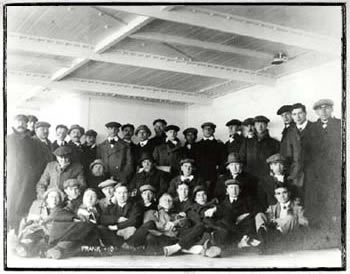 Born in England but a Welsh international, it was only logical that Arthur ‘Boxer’ Harding was chosen to skipper an Anglo-Welsh Lions Tour to Australia and New Zealand in 1908.
Unfortunately for Harding the three-Test series against the All Blacks will be remembered for his missed conversion that cost them victory in the second Test.
In atrocious weather conditions the Lions’ scrum was almost enough to see them to victory as John Phillips ‘Jack’ Jones cancelled out an Arthur Francis penalty.
But in the horrible conditions Harding’s conversion was off-target and the Test was drawn 3-3.
New Zealand had won the first Test and would go onto win the third for a 2-0 series victory but this was a Tour that will be remembered for the massive changes it instigated and the role it played in forming The modern British & Irish Lions.
It was the Original All Blacks’ landmark European Tour in 1905 that set in motion these changes.
Firstly, such was the dominance of Dave Gallaher’s men that New Zealand became the focus of Lions’ tours and not, as had previously been the case, Australia.
Born in England but a Welsh international, it was only logical that Arthur ‘Boxer’ Harding was chosen to skipper an Anglo-Welsh Lions Tour to Australia and New Zealand in 1908.
Unfortunately for Harding the three-Test series against the All Blacks will be remembered for his missed conversion that cost them victory in the second Test.
In atrocious weather conditions the Lions’ scrum was almost enough to see them to victory as John Phillips ‘Jack’ Jones cancelled out an Arthur Francis penalty.
But in the horrible conditions Harding’s conversion was off-target and the Test was drawn 3-3.
New Zealand had won the first Test and would go onto win the third for a 2-0 series victory but this was a Tour that will be remembered for the massive changes it instigated and the role it played in forming The modern British & Irish Lions.
It was the Original All Blacks’ landmark European Tour in 1905 that set in motion these changes.
Firstly, such was the dominance of Dave Gallaher’s men that New Zealand became the focus of Lions’ tours and not, as had previously been the case, Australia.
Absentees
Secondly, and more critically, it was a row over the All Blacks’ 1905 expenses that led to Scotland and Ireland’s absence from the Tour party and which in turn, morphed the Lions into a capped international side, fully representative of the home nations’ talent. Known as the ‘Anglo-Welsh’ Tour, they played in red and white hoops and were deprived of Scottish and Irish players because the New Zealanders that had run Europe and Canada ragged in their 35-game 1905 Tour in which they lost just once had been paid three shillings a day in expenses. While the English and Welsh unions thought a Lions Tour would help stem the tide of Rugby League overseas, Ireland and Scotland both refused to play against sides they deemed to be ‘professional’. Following the series loss the tourists now knew they would need the strength of all four nations to compete in future and the Lions jersey became one prized above even those of the individual four home nations.The allure of New Zealand
The culture and scenario in New Zealand always stays with visitors to the country, no matter how far they have travelled or how long they have stayed. The Lions have always been very fortunate to Tour this beautiful country and have developed strong ties with the rugby clubs, culture and fellow players. Indeed in 1908, Henry Vassall, the Oxford University centre, fell in love with a New Zealand girl and contrived to miss the boat back to England. The couple were married back in London two years later. Two other members of the 1908 Tour party - Harding and Fred Jackson - settled in New Zealand after marrying local women. Jackson's son Everard went on to play six Tests for New Zealand between 1936 and 1938.Farewell to Australasia
This would be the Lions final Tour to Australasia for 22 years with trips to South Africa in 1910 and 1924 being undertaken either side of the First World War. It would not be until 1930 that the tourists returned to Tour in Australia and New Zealand.1910 - The first fully sanctioned Tour
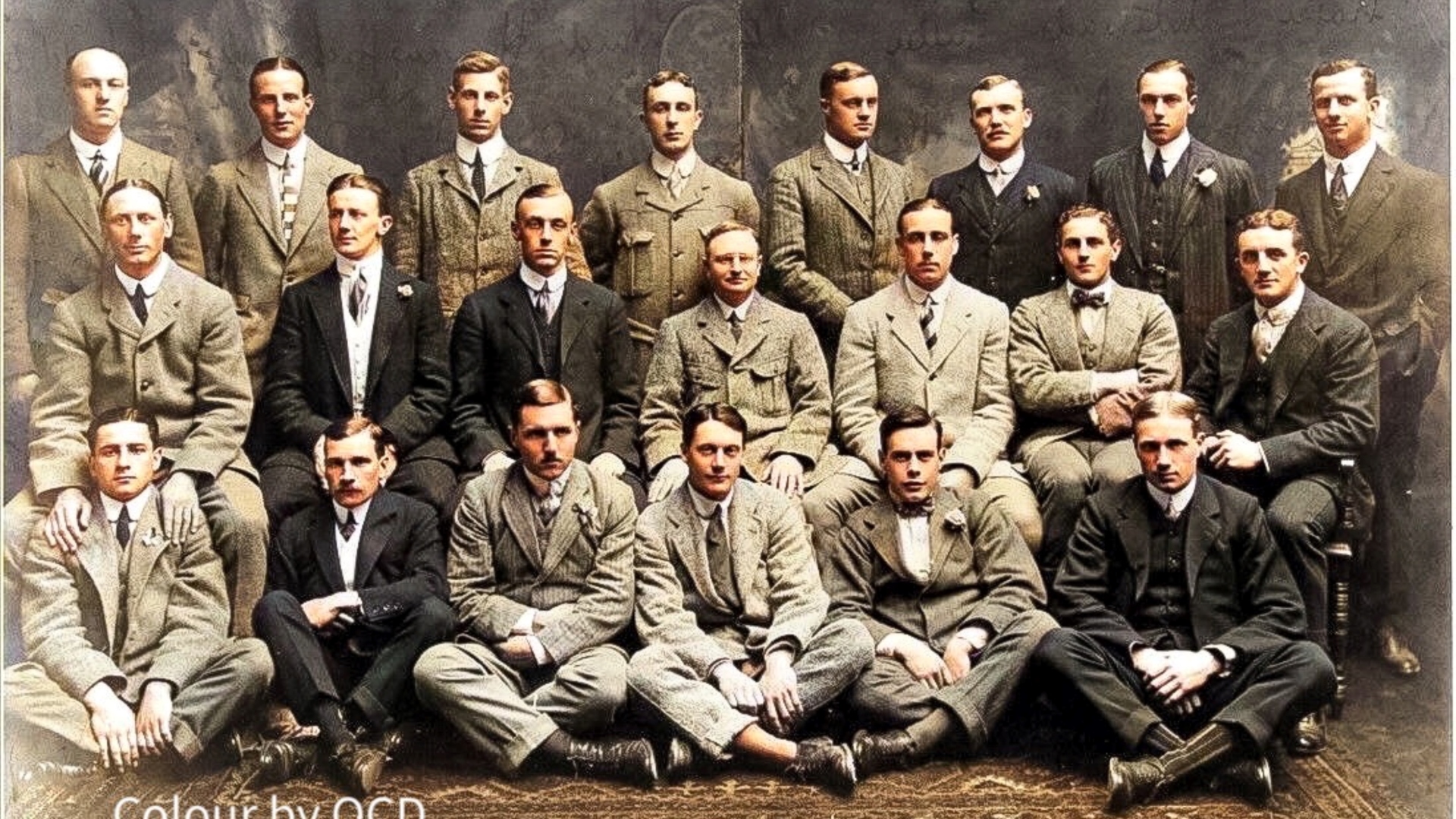 The 1910 Tour was the fourth time a British side toured South Africa and the eighth trip undertaken overall.
But – 22 years after a British side had first set sail for the southern hemisphere - this was the first official Tour, in that it had the sanction of all four home nations.
Quartered crest of the four home unions
The Lions squad, playing in blue jerseys with a quartered crest of the four home unions, was 26-strong.
Led by Ireland’s Tommy Smyth and managed by the two Walters, Messrs Rees and Cail, the Tour was comprised of 24 matches in total – three of which were Tests against the Springboks.
Gone were the days of near-total dominance from the tourists – the Boks were a world force by this stage as their results on their Tour of the British Isles in 1906 had shown when they beat Wales and Ireland, drew with England and lost to Scotland.
Seven of the squad came from Newport RFC and less than half were capped internationals but it was CH Cherry Pillman that stood out.
The Blackheath and England back-row starred throughout a gruelling Tour that – in addition to the three Tests against the Boks – saw them face the strongest provincial teams like Western Province, Border and Natal twice.
The 1910 Tour was the fourth time a British side toured South Africa and the eighth trip undertaken overall.
But – 22 years after a British side had first set sail for the southern hemisphere - this was the first official Tour, in that it had the sanction of all four home nations.
Quartered crest of the four home unions
The Lions squad, playing in blue jerseys with a quartered crest of the four home unions, was 26-strong.
Led by Ireland’s Tommy Smyth and managed by the two Walters, Messrs Rees and Cail, the Tour was comprised of 24 matches in total – three of which were Tests against the Springboks.
Gone were the days of near-total dominance from the tourists – the Boks were a world force by this stage as their results on their Tour of the British Isles in 1906 had shown when they beat Wales and Ireland, drew with England and lost to Scotland.
Seven of the squad came from Newport RFC and less than half were capped internationals but it was CH Cherry Pillman that stood out.
The Blackheath and England back-row starred throughout a gruelling Tour that – in addition to the three Tests against the Boks – saw them face the strongest provincial teams like Western Province, Border and Natal twice.
Pillman superb through Test series
Unsurprisingly injuries ravaged the squad but Pillman was superb throughout – according to Clem Thomas in his History of the British & Irish Lions he “revolutionised the South African concept of forward play.” South Africa skipper Billy Millar called him the greatest of all time and the results bear that out. Pillman missed the first Test, which the Lions lost, with injury and in a squad now down to the bare bones he returned for the second Test and lined up at fly-half. That he led the side to victory, levelling up the series in the process, makes it all the more remarkable. The decisive third Test was won by the Boks for a 2-1 series victory but again the Lions were hamstrung by fitness issues – full-back Stanley Williams went off at the start of the game and in a time before replacements the tourists played the rest of the game with only 14 men. The series might have ended in defeat but the Lions as a concept was gathering pace. However, it would be 14 years until the Lions toured again as the First World War intervened – three of this touring party to South Africa died in the fighting.Visit to Argentina as part of anniversary of Revolucion de Mayo
At same time as the South Africa Tour there was a second trip – organised by Major RV Stanley – to Argentina as part of the celebrations for the 100th anniversary of the Revolucion de Mayo. Stanley branded the 19-strong squad an England Rugby Union team but, given three Scots were included in the touring party, the hosts called them a Combined British Isles side. Captained by England full-back John Raphael, the team played six matches, winning them all including a victory over Argentina in their first ever Test on 12 June 1910. Argentina made their debut under the name "The River Plate Rugby Football Union" with the match being won by the Lions 28-3 at Belgrano Athletic Field.1888 - The Touring tradition begins
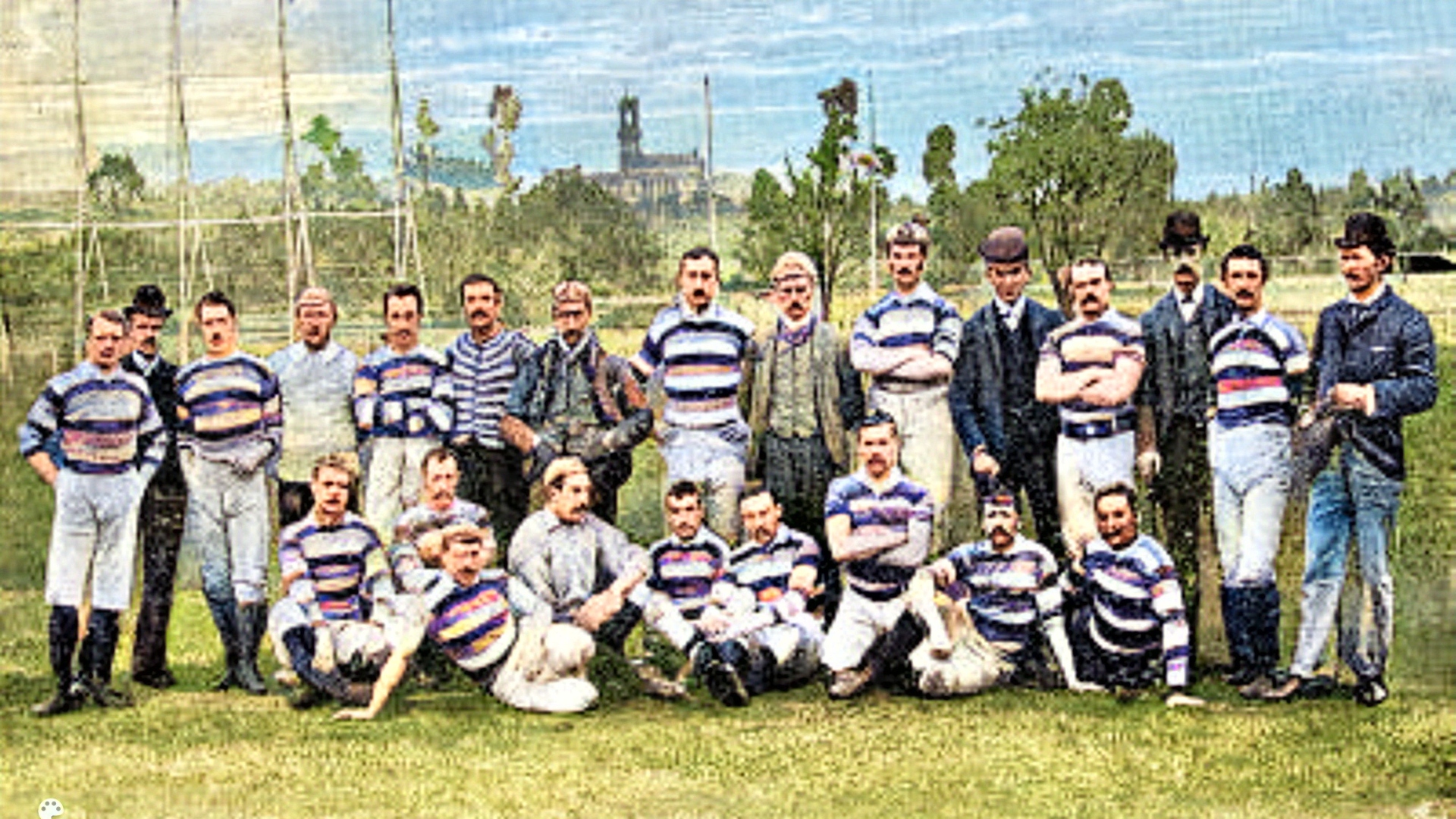
Good things come to those who wait
After a 46-day voyage – a travelling party of 22, skippered by Robert Seddon, arrived in Port Chalmers for a 249-day tour of New Zealand and Australia all the way back in 1888. The first British & Irish Lions Tour was the brainchild of former England cricketers Alfred Shaw – who famously bowled the first ever ball in Test cricket, Arthur Shrewsbury and James Lillywhite. England provided the majority of the touring squad, while there was a Welshman in Richie Thomas, Scots Robert and William Burnet and Alex Laing and an Irishman in Belfast-born Arthur Paul. The historic first Lions clash took place in Otago, which Seddon’s men won, with 10,000 spectators watching the clash. Not yet synonymous with the famous red jersey, the Lions were clad in red, white and blue but it was Otago who took an early 3-0 lead with a drop goal. The Lions fought back with two tries of their own, worth only a single point each, before Harry Speakman's two drop goals turned the tide in the visitors favour and they won 8-3. The New Zealand Herald called it "the fastest and hardest fought game ever seen in Otago" but the mutual respect between the teams was clear from the off. And in no better way was this demonstrated than by the banquet and after-dinner speeches which followed – the celebrations continuing long into the night, setting the tone for a wildly successful inaugural Tour. The players were “heartily congratulated on their victory by friends and foes alike, no-one grudged them their hard-earned laurels after having come 16,000 miles over the ocean to play in New Zealand," commented a piece in the Otago Witness at the time. As the Tour moved to Australia, the extraordinary feature was that 18 further games were played under Victorian or Australian Rules – the financial rewards on offer were a factor in the fixtures. Overall it proved to be a fantastically successful Tour – the 1888 team played 35 games of rugby in New Zealand and Australia, winning 27, drawing six and losing only two. However, the 1888 Tour was tinged with tragedy, when skipper Seddon, who had won three caps for England in 1887, drowned in Australia after a sculling accident on the Hunter River in New South Wales.1891 - The first Test series
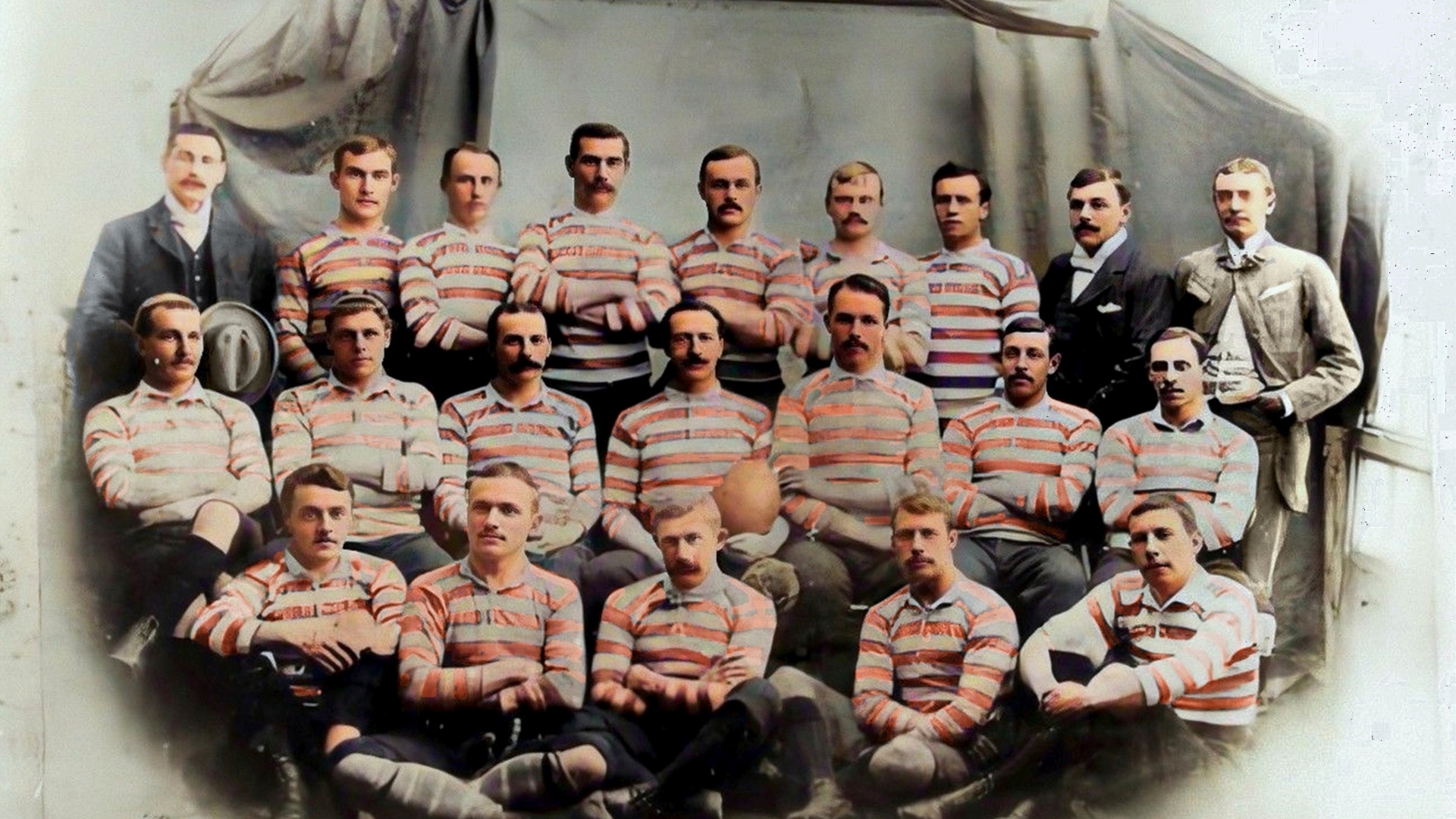 The British tourists who headed south across the equator in 1891 were the first to be officially sanctioned by the Rugby Football Union and the first ever international Test Series was a real success.
Shaw and Shrewsbury's 1888 Australian adventure had been unsanctioned by the rugby authorities and funded mainly by novelty Aussie Rules matches.
Three years later, though, the game's governors had fully embraced the concept of the overseas Tour.
The touring party was invited to South Africa by the Western Province union and with all costs underwritten by the Cape Colony prime minister, Cecil Rhodes.
The RFU's backing led to the 21-man party being billed as the English Rugby Football Team, although the fact it contained four Scots, including captain and wing Bill Maclagan, saw it given the British Isles tag retrospectively.
Just eight of the 21 tourists had been capped at international level prior to leaving British shores and slightly more than half were Oxford or Cambridge Blues.
Maclagan's men, managed by former RFU secretary Edwin Ash, played 20 matches including Tests for the first time.
South African rugby may not have been quite on par with that of the Home Unions yet; future British tourists would find they were quick to catch up.
Despite this, the visitors saw off all-comers, scoring 224 points to one.
Aston is too quick for the Boks
The star of the Tour was England centre Randolph Littleton Aston, who used his 6'3" height and 15-stone bulk - as well as an impressive turn of speed - to power his way over the try line 30 times in all.
The first ever Test match, in front of a reported 6,000-strong crowd, took place at the Port Elizabeth Cricket Ground and was won 4-0 with Aston scoring the first try credited to a British/Irish touring team.
The second Test was played at the Eclectic Cricket Ground in Kimberley with the only points were scored by English full-back William Mitchell with a goal from a mark, kicked from near the halfway line.
The tourist completed their whitewash in the third and final Test 4-0. On Tour they played 20, won 20 with just one point conceded and as a result of their efforts in the Republic - they were presented with commemorative gold medals after two matches in the diamond mining centre of Kimberley.
The British tourists who headed south across the equator in 1891 were the first to be officially sanctioned by the Rugby Football Union and the first ever international Test Series was a real success.
Shaw and Shrewsbury's 1888 Australian adventure had been unsanctioned by the rugby authorities and funded mainly by novelty Aussie Rules matches.
Three years later, though, the game's governors had fully embraced the concept of the overseas Tour.
The touring party was invited to South Africa by the Western Province union and with all costs underwritten by the Cape Colony prime minister, Cecil Rhodes.
The RFU's backing led to the 21-man party being billed as the English Rugby Football Team, although the fact it contained four Scots, including captain and wing Bill Maclagan, saw it given the British Isles tag retrospectively.
Just eight of the 21 tourists had been capped at international level prior to leaving British shores and slightly more than half were Oxford or Cambridge Blues.
Maclagan's men, managed by former RFU secretary Edwin Ash, played 20 matches including Tests for the first time.
South African rugby may not have been quite on par with that of the Home Unions yet; future British tourists would find they were quick to catch up.
Despite this, the visitors saw off all-comers, scoring 224 points to one.
Aston is too quick for the Boks
The star of the Tour was England centre Randolph Littleton Aston, who used his 6'3" height and 15-stone bulk - as well as an impressive turn of speed - to power his way over the try line 30 times in all.
The first ever Test match, in front of a reported 6,000-strong crowd, took place at the Port Elizabeth Cricket Ground and was won 4-0 with Aston scoring the first try credited to a British/Irish touring team.
The second Test was played at the Eclectic Cricket Ground in Kimberley with the only points were scored by English full-back William Mitchell with a goal from a mark, kicked from near the halfway line.
The tourist completed their whitewash in the third and final Test 4-0. On Tour they played 20, won 20 with just one point conceded and as a result of their efforts in the Republic - they were presented with commemorative gold medals after two matches in the diamond mining centre of Kimberley.
1896 - Playing in the right manner as success continues
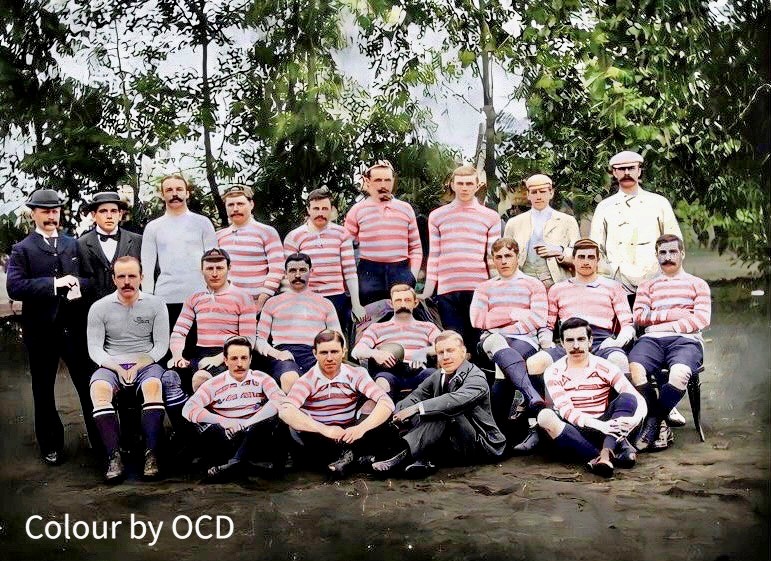 After a perfect 20 wins from 20 games five years previously, the 1896 British & Irish Lions had plenty to live up to.
It was their second time touring South Africa, but the Lions faced a far stiffer test with the level of the Springboks and the provincial sides significantly higher.
But there was one man who took the Tour by storm - Tommy Crean.
Vice-captain to Johnny Hammond - Crean led a strong Irish contingent in the travelling party that won the Test series 3-1 and took over the armband when Hammond went down injured.
After a perfect 20 wins from 20 games five years previously, the 1896 British & Irish Lions had plenty to live up to.
It was their second time touring South Africa, but the Lions faced a far stiffer test with the level of the Springboks and the provincial sides significantly higher.
But there was one man who took the Tour by storm - Tommy Crean.
Vice-captain to Johnny Hammond - Crean led a strong Irish contingent in the travelling party that won the Test series 3-1 and took over the armband when Hammond went down injured.
Louis Magee and England full-back Fred Byrne were the stars of the backline, but it was an outstanding forward eight inspired by Ireland’s Crean, who played in every game of the Tour, that laid the foundations for success.
Fun and sporting play
Overall, Roger Walker’s side were only slightly less successful than their predecessors, winning the four-test series 3-1 and going unbeaten through their 17-game provincial programme. And despite suffering a first defeat, this particular Tour will always go down as a successful visit that was played in the right spirit throughout, as Lions' hooker Walter Carey stated 36 years later in History of South African Rugby Football. He said: “There have been many Tours since ours, better football perhaps, but I do not think there’s ever been a Tour with more fun and more sporting play in it than our long-ago Tour of 1896. “I hope and pray that South African teams will always play like gentlemen. Rugby is so easy to cheat at and that is so destructive of this wonderful game. “If a man wants to do dirty tricks let him cheat at ninepins in his own backyard, but let him keep clear of rugby football.”The Test Series
The first Test was played at the Crusader ground, and the Lions lined up against Ferdie Aston who was the brother of 1891 Lions star Randolph and skippered the Springboks. The tourists dominated throughout but could only score two tries in an 8-0 win, with Carey and Larry Bulger crossing the whitewash. Carey – one of the two men nominated by Oxford University for the Tour – loved the country so much he returned in 1913 before he was made Bishop of Bloemfontein in 1921. His rugby legacy is not limited to the Lions, as Carey was the man to coin the Barbarians motto; “Rugby Football is a game for gentlemen in all classes, but for no bad sportsman in any class.” The second Test was again won by the Lions, but is perhaps more notable for the two late tries scored by South Africa’s Theo Samuels, their first points ever in Test rugby. The scoreline at the Wanderers was 17-8, with Hancock scoring a brilliant try in the second half, while the series was sealed at the Athletic Grounds in Kimberley – although it was not all plain sailing there for the Lions. The hosts led them for the first time ever, but the Lions came back from 3-0 down to win 8-3 thanks to Bert Mackie’s try with James Frederick Byrne adding a conversion and drop goal to take him past 100 points for the Tour.A first ever defeat
But the gap was clearly closing between the sides – in 1891 the Lions had only conceded a point in one game – and South Africa claimed their first success over the tourists in the final game. It was clear the lessons dealt by the Lions both on this Tour and in 1891 had been fully absorbed by their hosts as they won 5-0, and the Lions did not win another Test series on South African soil until 1974. Byrne, an English full-back, scored over a century of points on the Tour and also played in every game, seamlessly making the switch to the centres during the Test series but ironically it was he who lost possession to spark the attack from which Alf Larard scored the game's only try. The defeat is partly offset by the Lions' highest score and biggest winning margin in 75 Lions games to that point - a 32-0 warm-up victory over Western Province earlier in the Tour. The Lions had drawn previously against the same opposition in spite of guidelines from vice-captain Crean on the consumption of alcohol (with ‘no more than four glasses of champagne’ allowed for lunch on match days). Crean’s champagne rule faced a real test with the Lions being invited to lunch with the Prime Minister, Sir Gordon Sprigg, as Carey recalled in Behind the Lions: “I am bound to say the match we drew was after a lunch. “Despite Tommy Crean’s order, the only wonder is that we were not licked by 50 points, but we had our revenge on this team in the return match.”1899 - A first Test battle with Australia
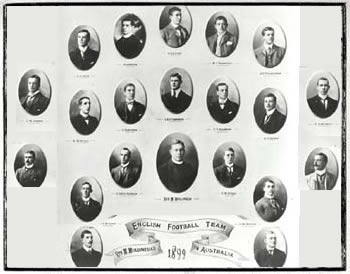 Having provided South Africa's first Test opposition in 1891, the British Isles touring team did the same for Australia in 1899 beating them 3-1 in their first international series.
The 21-man squad included seven internationals – two English, two Irish, two Scottish and one Welsh – but captain and London clergyman Rev Matthew Mullineux was not one of them.
Having provided South Africa's first Test opposition in 1891, the British Isles touring team did the same for Australia in 1899 beating them 3-1 in their first international series.
The 21-man squad included seven internationals – two English, two Irish, two Scottish and one Welsh – but captain and London clergyman Rev Matthew Mullineux was not one of them.
Military Cross but no England cap
The Blackheath player – one of only two British & Irish Lions skippers never to be capped by their country – both arranged and managed the Tour. He would also go on to win a Military Cross during the First World War when the field hospital he was at in France came under attack from the Germans. The chief medical officer of the post was incapacitated by his injuries so Mullineux took command, treating the injured and evacuating the worst cases, during a 12 hour shell and gas attack. In 1899 though, Mullineux, a veteran of the 1896 Tour to South Africa, was required to make a very different brave and selfless decision – to drop himself after the first Test defeat at the Sydney Cricket Ground. Australia, who were bolstered by two New Zealand players, snatched the first Test away from the visitors, who had just three games under their belt. Two converted tries in the last ten minutes saw Australia win 13-3. For the remaining three Tests, Charles Adamson was brought in at outside half and England forward Frank Stout took over the captaincy. Mullineux's decision to step down in favour of Adamson proved crucial, as the Durham player scored two tries and kicked four conversions and a penalty in the last three Tests. In total Adamson, of Durham, scored 135 of the 333 points scored by the Lions during the Tour.Lions' comeback
Powered by a rejuvenated forward pack, the tourists squared the series with an 11-0 win in the second Test at the Exhibition Ground in Brisbane witnessed by a record Queensland crowd of 15,000. Back at the SCG for the third Test, Scottish wing Alf Bucher scored two tries in an 11-10 win. The hosts, who brought in five Kiwis in a desperate bid to square the series, were outplayed in muddy and windswept conditions in the final Test. The tourists completed their 3-1 series victory with a 13-0 win, with Nicholls proving just as dangerous in the wet as in the dry.New ground broken
The 1899 Tour was the first to be made exclusively to Australia and there was no need for extra Australian Rules games. The tourists also broke new ground themselves by including, for the first time, international players from all four Home Unions. It would be another 90 years before the Lions returned to Tour Australia alone with all intervening Tours using the Wallabies as a warm-up to longer visits to New Zealand.
